Luxury magazine: March 2023
Idris and Sabrina Elba bring A-beauty to Dubai; and Indian couturier Gaurav Gupta
By Selina Denman

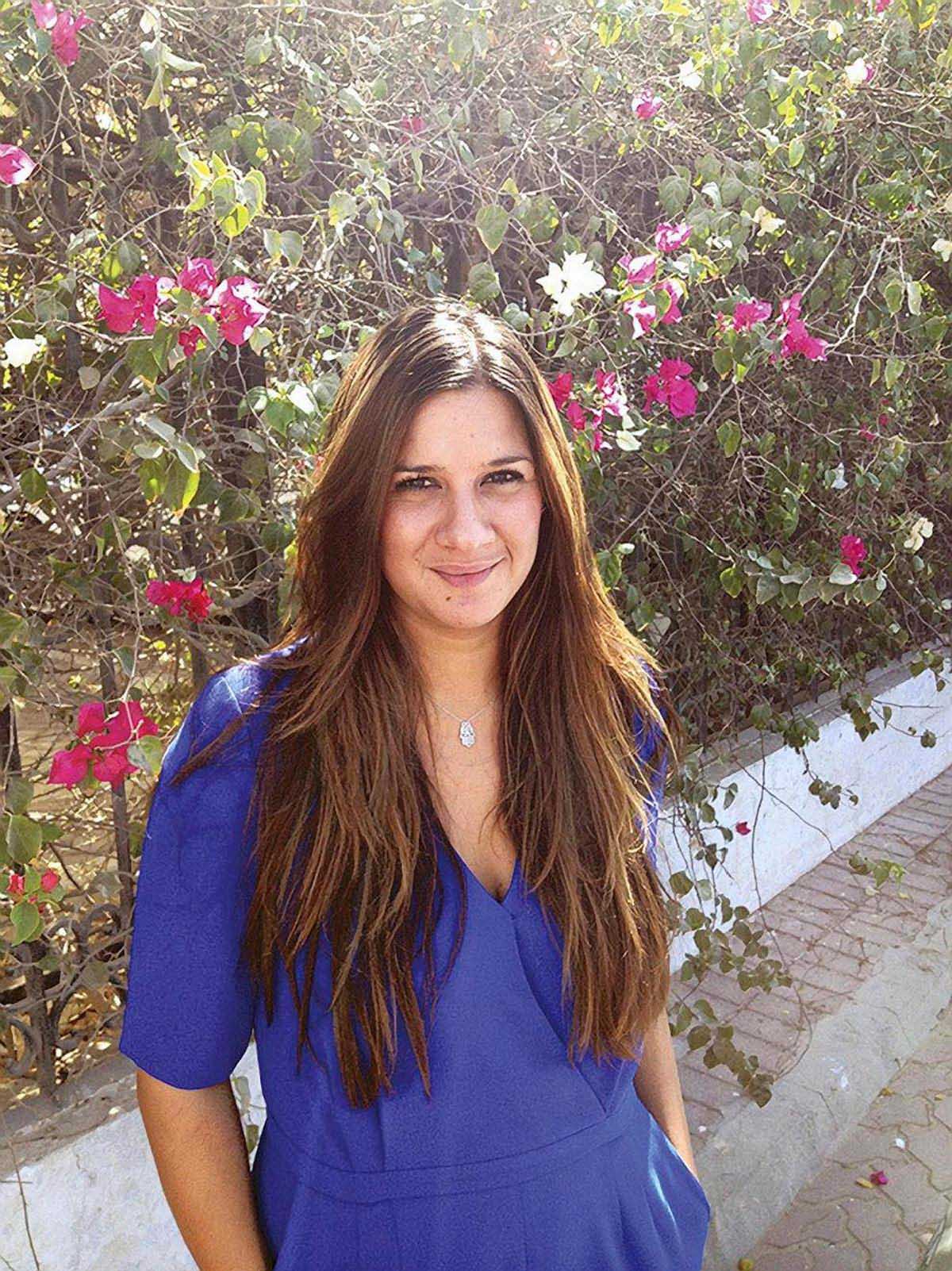
'We all have to do our bit'
Gaurav Gupta has been making headlines this year – first when he made his haute couture debut in Paris at the end of January with a stunning collection called Zero Infinity, becoming only the third Indian designer to show at Haute Couture Week; and then in February, when singer Cardi B wore one of his gowns to the Grammys.
Her show-stopping cobalt blue dress showcased the designer’s signature sculptural aesthetic, with moulded ripples of pleated organza weaving themselves around the head and body in one continuous sweep. But while his stunning creations are infinitely attention-worthy, so, too, is his design ethos. A self-proclaimed activist, he champions sustainability, not only in his business practices, but in his own life.
He is committed to creating ethical working conditions in his ateliers, uses recycled packaging and last year created a complete collection from recycled ocean plastics – something he hopes to do more of in the future.
“One has to keep talking about this, to be honest and to find ways to collaborate and join hands and make a difference on the ground, in the oceans and on the beaches,” he says in our interview.
We also speak to others working in the fashion industry who are doing their bit. Indian designer Anita Dongre, who is preparing to open her first boutique in the UAE, is committed to supporting female artisans in her homeland, firm in the belief that “India’s rise will come from its female workforce”.
While providing employment and financial independence to embroiderers or weavers in India’s rural villages, Dongre is keeping age-old craft traditions alive and is creating designs that are meant to linger in a woman’s wardrobe for years, before being passed down – combining longevity, sustainability and social equality in one fashionable swoop.
Niluu, meanwhile, a new brand created by Turkish designer Nilüfer Bracco that made its debut at Galeries Lafayette in Dubai last month, is addressing environmental sustainability by crafting luxe daywear from vegan silk. And Veganologie, the brainchild of UAE resident Angana Maheshwari, offers bags and wallets made from PU leather, derived from plastic bottles reclaimed from the sea. Sold in 100 per cent recycled cardboard packaging, the company’s products are certified vegan by Peta and GRS, the global recycling standard.
As agents of change, these brands are offering consumers the choice to buy better and do better. As Gupta says, starkly: “We all have to do our bit.”
Selina Denman, editor
The Elbas champion sustainable A-beauty in Dubai

Actor Idris Elba and wife Sabrina launched S'Able Labs in 2022. Photo: S'Able Labs
Actor Idris Elba and wife Sabrina launched S'Able Labs in 2022. Photo: S'Able Labs
The couple have entered the world of skincare, but want you to know they are not just another ‘celebrity brand’, writes Sophie Prideaux
Sabrina and Idris Elba are, as it turns out, just like the rest of us. “Idris would look at the 20 products on my bathroom counter and say: ‘Why do you need all those things?’ And I’d always say, I do,” Sabrina says with a laugh.
The couple’s opposing skincare routines – Sabrina’s endless serums and acids versus Idris’s Vaseline and go approach – became a topic of debate between them during the pandemic, when, freshly recovered from Covid-19, wellness was at the forefront of their minds.
“We started going on a wellness journey together at that time, as we probably all did,” she says. “We didn’t feel like the self-care that we were using incorporated some of the issues that we faced, like hyperpigmentation and inflammation.”
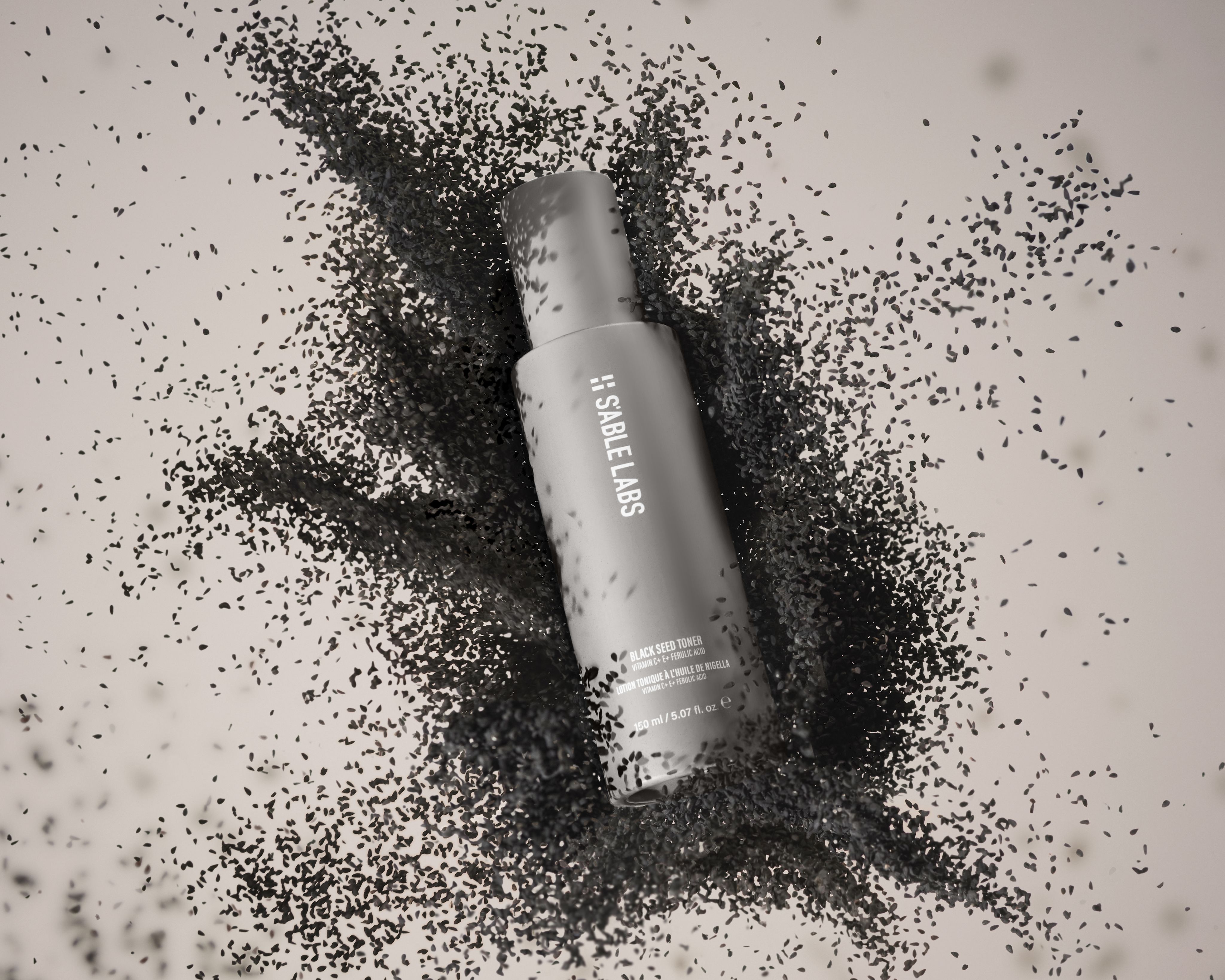
The Black Seed Toner from S'Able Labs. Photo: S’Able Labs
The Black Seed Toner from S'Able Labs. Photo: S’Able Labs
The result of that journey is S’Able Labs, a genderless skincare brand that not only answers their individual concerns as a couple, but channels their ancestral history by sourcing natural ingredients from Africa that the pair grew up watching members of their family use.
“A-beauty [African beauty] is a huge pillar for us as a brand,” Sabrina says. “We really want to use this as a moment to give African ingredients a time to shine and to be able to back them with the right biotech, so they are at their most powerful.”
Sabrina is of Somali descent. As a child, she watched her mother, Maryam, mixing DIY face masks using turmeric and qasil, sourced from the leaves of Somalia’s gob tree, which she would leave on for hours at a time.
“My mum’s always been a huge believer of just using natural ingredients and using less – I rebelled against that,” she says. “At first I thought: ‘You don’t know what you’re talking about, you don’t even know what hyaluronic serum is’.
“I went completely the other way and was using so many things that were damaging my skin. I had really bad acne in high school, which led to bad hyperpigmentation. So I felt I always covered up with so much make-up and was then stripping it down with way too many actives. It wasn’t until I really started to incorporate my mum’s ethos of ‘do less, use more natural ingredients’ that I’ve noticed massive change. Mums are always right.”
S’Able Labs launched last summer with an initial three-step product line – the Qasil Cleanser, Black Seed Toner and Baobab Moisturiser, which are now available at Dubai’s Biolite Clinic. “Three of the unique beauty ingredients that we use in our core collection are sometimes used in other formulations and other brands, but we really wanted to regain ownership because they did feel a bit appropriated in a way,” Sabrina says.
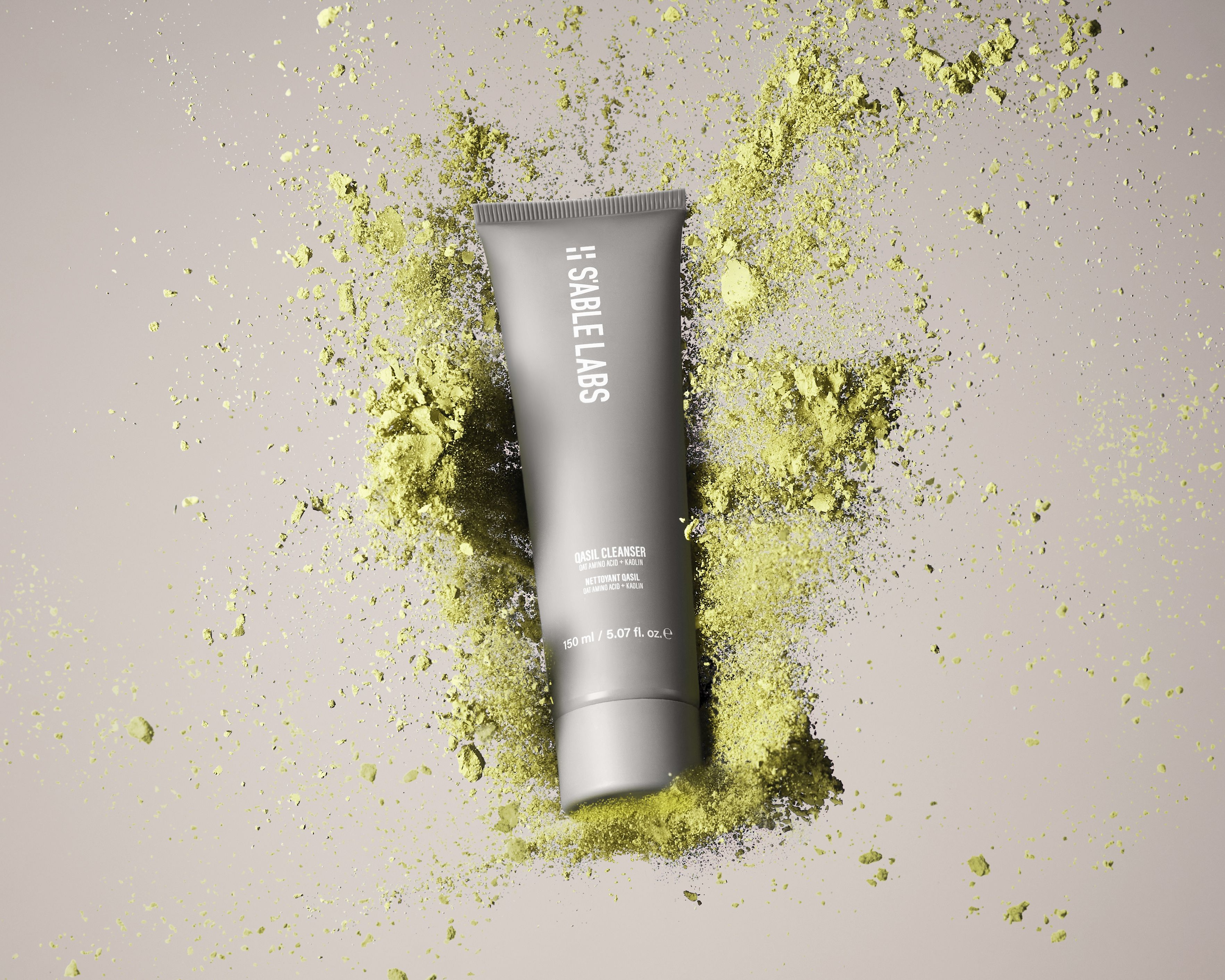
The Qasil Cleanser from S'Able Labs. Photo: S’Able Labs
The Qasil Cleanser from S'Able Labs. Photo: S’Able Labs
“Baobab, which is in the moisturiser, is an amazing antioxidant. Black seed, I mean my dad used to put black seed in his tea saying that it will make you live forever – it’s a really strong anti-inflammatory agent. Qasil is a natural soap and Somali women say it makes you look super young and claim it has all these great anti-ageing benefits, not only for your skin, for your hair as well. So we were really excited to incorporate those amazing ingredients.”
The Elbas are United Nations Goodwill Ambassadors for the International Fund for Agricultural Development, and so ensuring the products are responsibly sourced and rural farmers are supported is an important part of the S’Able Labs ethos. The products have been awarded the Butterfly Mark certification from Positive Luxury, which recognises luxury brands contributing to the future of the planet.
It was also important for the couple to feel that they were contributing something new and progressive to an overcrowded industry. “I get really frustrated when people say: ‘Oh, this is a celebrity brand’,” Sabrina says.
“Yes, there are a lot of celebrity brands, we totally get it, but we created this brand because we thought there was a space in the market, so to now be dumped into something just because of Idris’s prior experience or because of who he is, feels unfair.”
Ensuring the range was genderless was important. “Idris wanted to understand what he was putting on his skin because he felt the market for men dumbed down products and didn’t offer the education,” she says.
“Why do girls know so much about peptides and men only learn about peppermint? There’s this unfair distance between what you find in male marketing and what you find on a pink tax product.
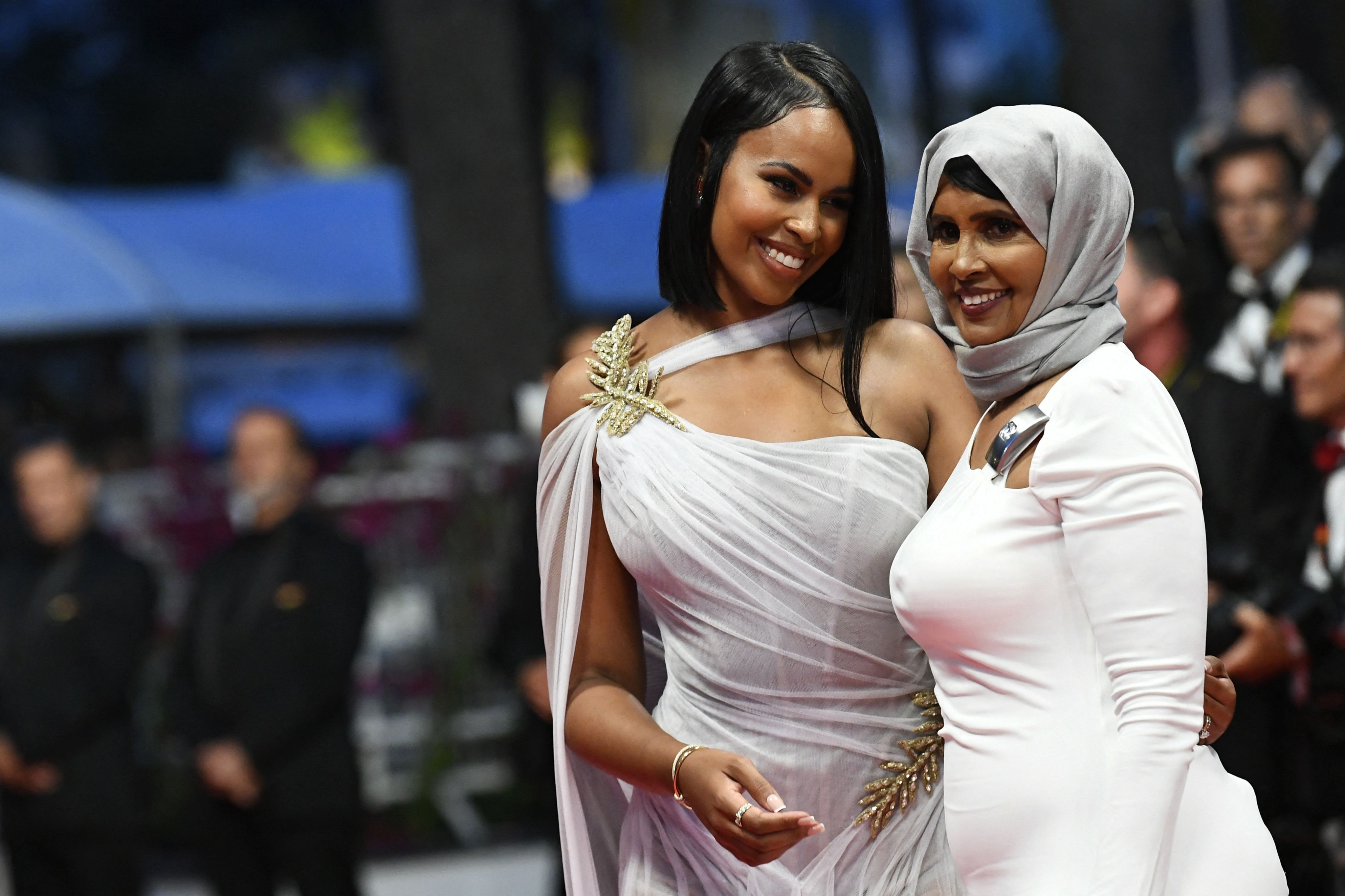
Sabrina Elba and her mother Maryam Egal at the 75th Cannes Film Festival. Photo: Reuters
Sabrina Elba and her mother Maryam Egal at the 75th Cannes Film Festival. Photo: Reuters
"We wanted to come together in the middle and find a way to have a really efficient routine that we could share, that incorporated all of his skincare concerns and mine, but educated us in a way that made sense.”
And how is it running a business as husband and wife? “I love it,” she says. “You know, it’s not for everyone. A lot of people told us it would be a recipe for disaster. But I think because we have a similar goal, we have a similar ambition, it actually gives us something that moves us forward together that we connect on. We found a passion together.”
Dubai’s Biolite Clinic is S’Able Labs’s first and only global retail partner. As well as offering the full range, Biolite has also created a signature Oxyjet Leo X S’Able Labs Facial, which is now available to book.
“We instantly fell in love with Biolite’s ethos,” Sabrina says. “There’s so many similarities between our brands and our personal values. And it’s great to be carried in a clinic that has been in Dubai for such a long time and is run by women.
“I love Dubai – I could move here,” she adds. “I think I’ve almost convinced Idris.”
A rare find in the Dubai desert
Nearly 20 years since it opened, Bab Al Shams has been reimagined. By Hayley Skirka
Dubai’s original desert resort has reopened as the world’s first Rare Finds hotel, a new group of luxury properties within the Kerzner International portfolio.
Nestled in the Saih Al Salam desert, the 19-year-old Bab Al Shams has been completely reimagined to mark this new chapter. Travellers who have previously stayed at the property will be struck by its renewed aesthetic, which is based on the fable of The Lost Princess, explains Pooja Shah-Mulani, design director at LW Design Group, which collaborated with Kerzner on the project.
“The design for Bab Al Shams is staged around the princess’s sanctuary of luxury and her unforgettable journey. Interior design elements subtly weave through an iconic heritage that’s deeply tied to her customs while celebrating the glamour of modern-day Arabia,” she says.
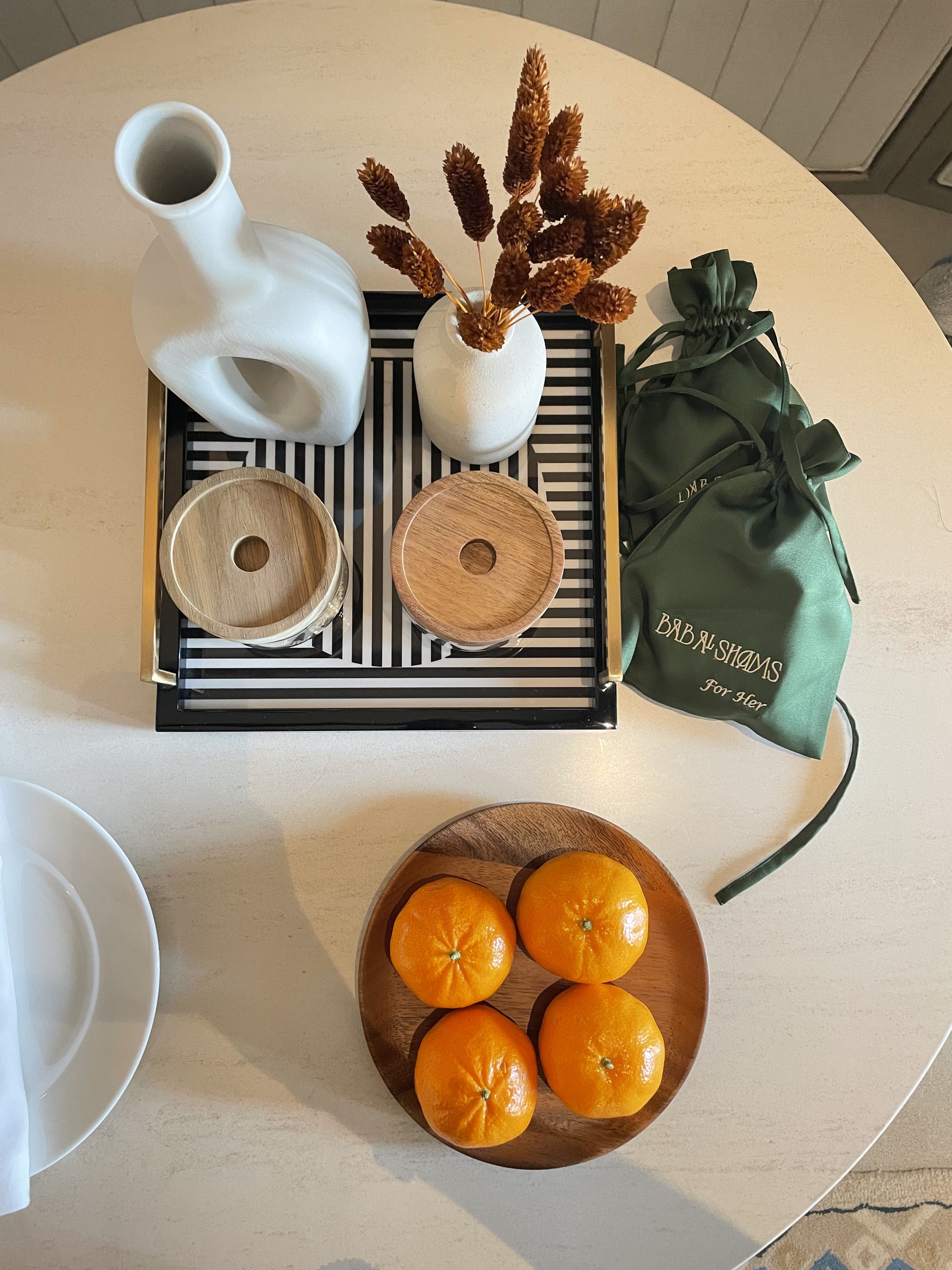
Interiors have been modernised. Photo: Hayley Skirka
Interiors have been modernised. Photo: Hayley Skirka
Time was of the essence in the renovation, which took place over a 10-month period starting in May last year. One of the key challenges facing the design team was the distinct lack of light inside the hotel.
“The small windows and doors are synonymous with typical Arabic architecture, but leave rooms devoid of natural light, so creating a lighter interior envelope was one way to instantly modernise the property,” says Shah-Mulani.
It’s a sentiment echoed by Gilles Sohier, the hotel’s general manager. “It was necessary to uplift the design as before it was very dark. We opened up the space, removing walls and allowing a design that lets natural daylight in.
"There’s a new colour scheme, it’s soft and subtle but in keeping with the Arabian DNA – it’s serene and calming, and that essence flows throughout the resort,” he says.

Rooms and suites have received a makeover. Photo: Kerzner
Rooms and suites have received a makeover. Photo: Kerzner
Perhaps the biggest change is noticeable in the hotel’s rooms and suites. Gone are the plush red drapes and textured bed hangings, the dark wood furniture and thick decorative rugs, replaced instead with oyster walls, pearl-inlaid mirrors and soft brushed gold fixtures.
“Furniture and lighting were carefully curated and handcrafted, with colours and patterns that ensured a modern design aesthetic in an Arabesque setting. A lot of original pieces of furniture, artwork and accessories were retained, restored and repurposed as part of the new design, creating an eclectic mix of contemporary Arabic,” says Shah-Mulani.
More dramatic upgrades await in all-day dining restaurant Zala, where guests step into a world of terracottas and teals. It’s far removed from the gold-toned walls and dark wood chairs and tables that previously defined the space.
“While the interior architecture palette in Zala is in keeping with the rest of the resort, the transition to a softer colour palette of teal and terracotta instead of the bolder tones used in the lobby and guest rooms instantly add a Mediterranean touch. Soft arches with rattan details and beautifully handcrafted ceramic pendants offer a change from traditional Arabian-style lanterns,” says the designer.
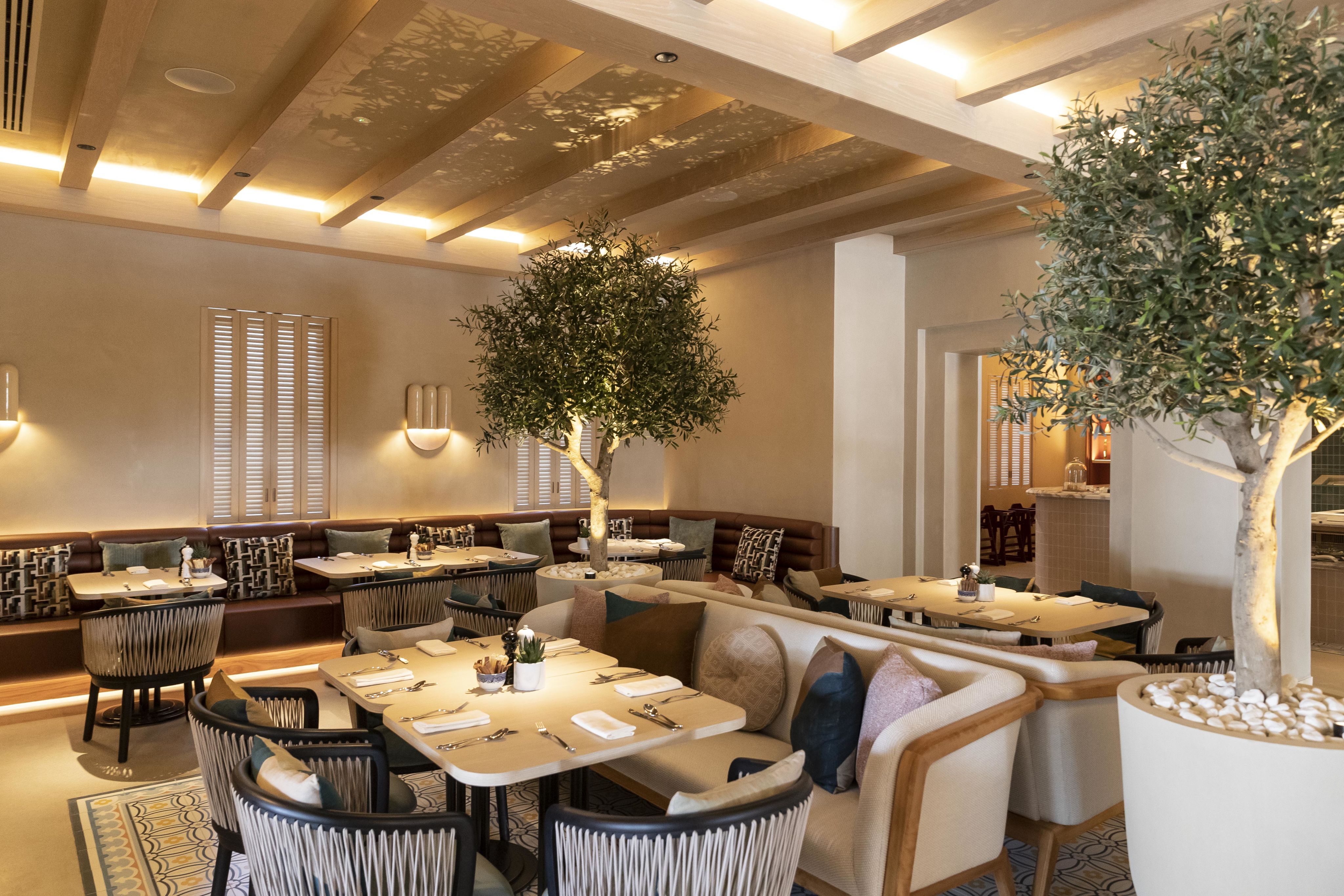
Zala all-day-dining restaurant. Photo: Antonie Robertson/The National
Zala all-day-dining restaurant. Photo: Antonie Robertson/The National
And it’s not just the interiors that have been modified. The restaurant’s extensive buffet champions local producers and uses responsibly sourced ingredients, with minimal quantities of food on display to cut down on waste.
Another highlight of the redesign is the alcohol-free bar that takes centre stage in the main building. The lobby lounge is designed around a huge piece of joinery inspired by an open traveller’s chest. Lined with bright teal lacquer and carefully lit shelves housing colourful bottles and glasses, it’s a stunning centrepiece that balances old-world heritage with modern glamour.
The narrative of Arabian fables and storytelling is echoed throughout the resort via artworks that were curated by Dubai consultant Capsule Arts. Many of the pieces are new, commissioned as part of Bab Al Shams’s latest chapter, but there are several pieces that previously had a home elsewhere in the resort. These have been curated, reframed or modernised to fit the new aesthetic.
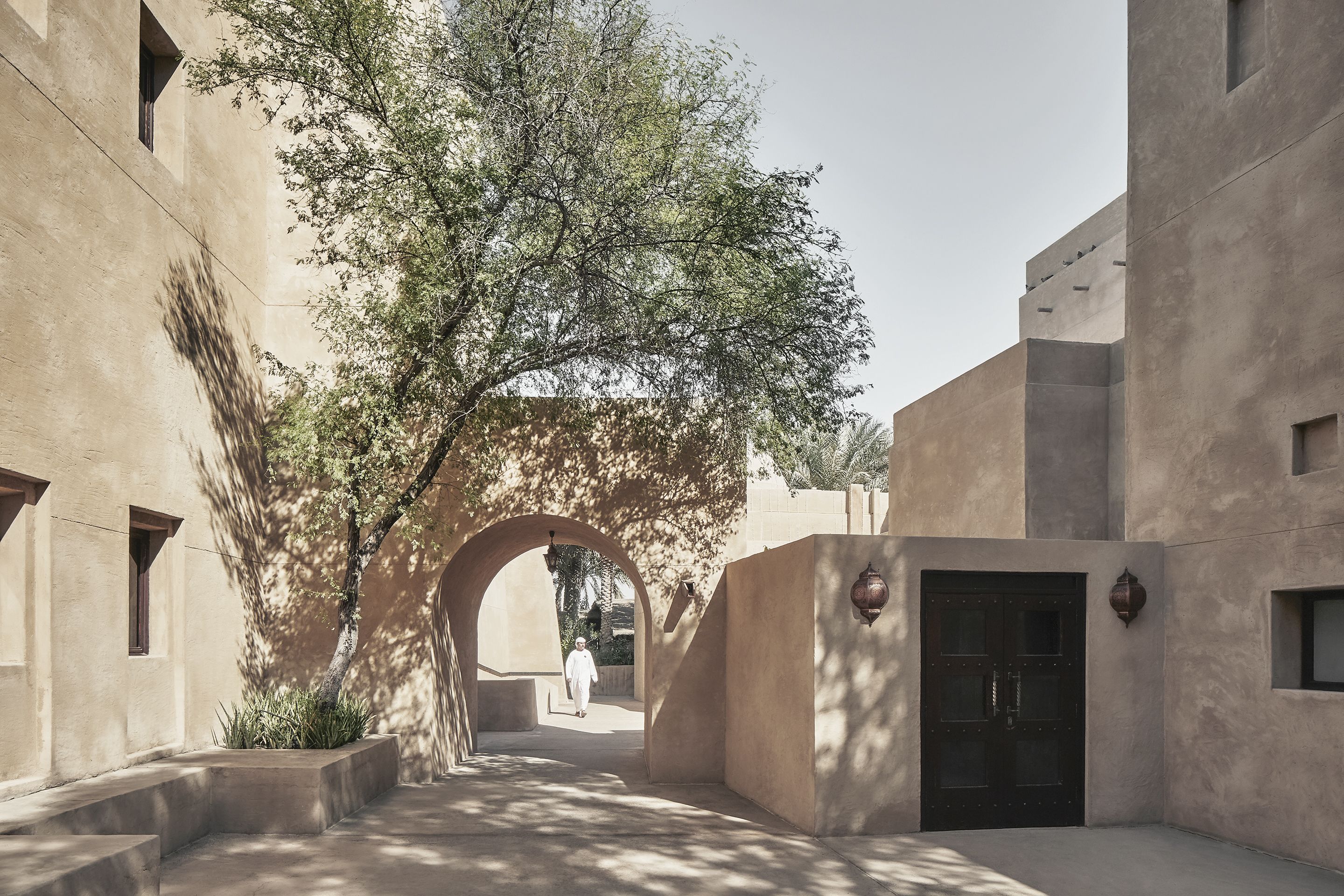
Dubai's Bab Al Shams is the first property in Kerzner's new Rare Finds collection. Photo: Kerzner
Dubai's Bab Al Shams is the first property in Kerzner's new Rare Finds collection. Photo: Kerzner
The exterior architecture – inspired by an Arabian fort – was one element Kerzner decided to leave intact. “We fully renovated all of the guest rooms and interiors, but we made a decision not to change the exterior,” says Sohier.
The low-profile, stone construction is a stage for mesmerising plays of light, with daybreak touching some planes while shadows blanket others, and an ever-changing tapestry linked to the hour of the day. When the sun sets, the shadows and carefully placed decorative lighting create an intimate ambience, reminding guests why this stalwart has remained a Dubai favourite for nearly two decades.
Image captions
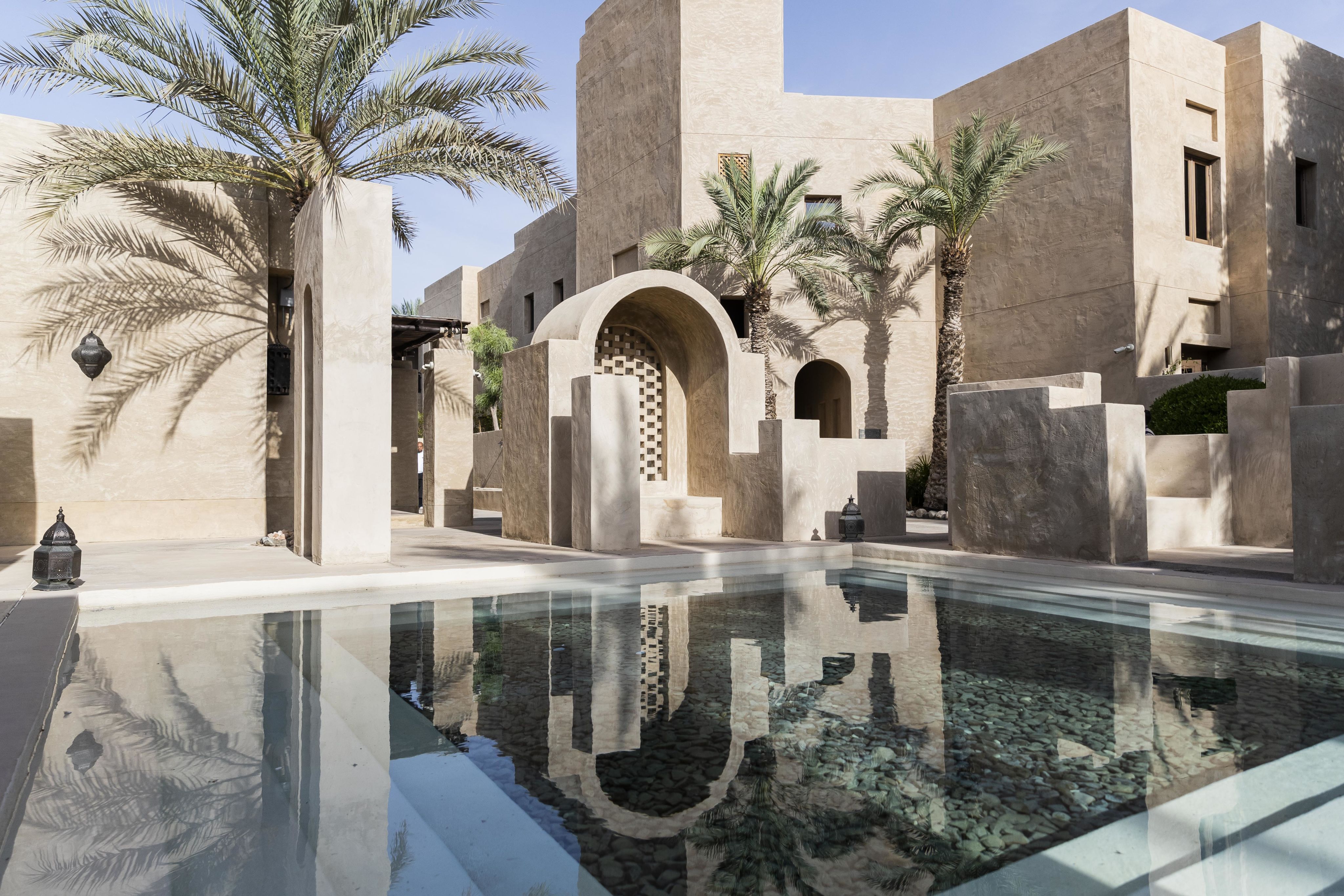 Image 1
Image 1The newly renovated Bab Al Shams resort. Photo: Antonie Robertson/The National

The newly renovated Bab Al Shams resort. Photo: Antonie Robertson/The National
The newly renovated Bab Al Shams resort. Photo: Antonie Robertson/The National
Venus rising
A celebration of unashamed femininity, with flattering cuts, decadent details and a touch of cool
Fashion Director: Sarah Maisey
Photographer: Esra Sam at MMG Artists
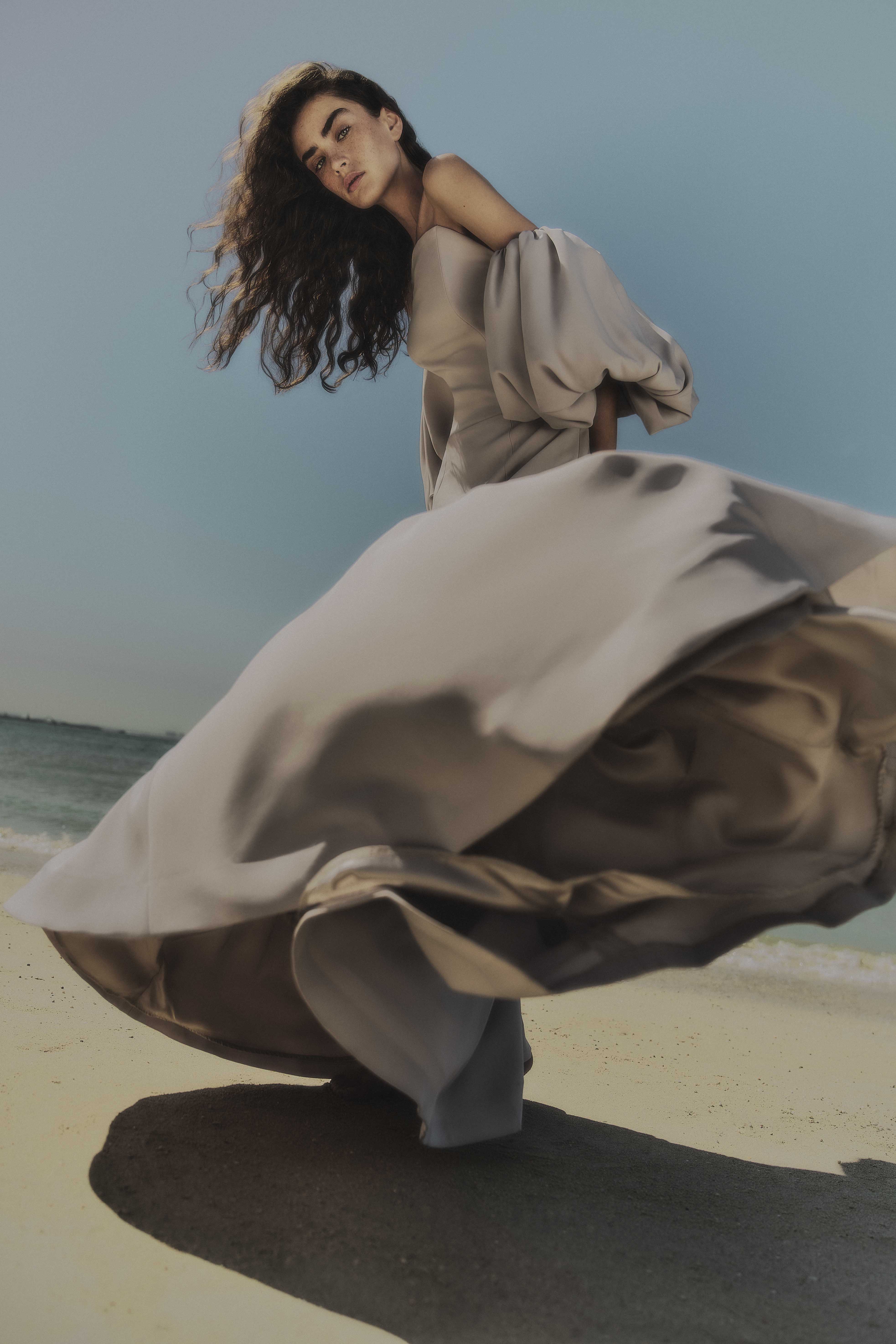
Dress, Dh4,620, Bazza Alzouman
Dress, Dh4,620, Bazza Alzouman
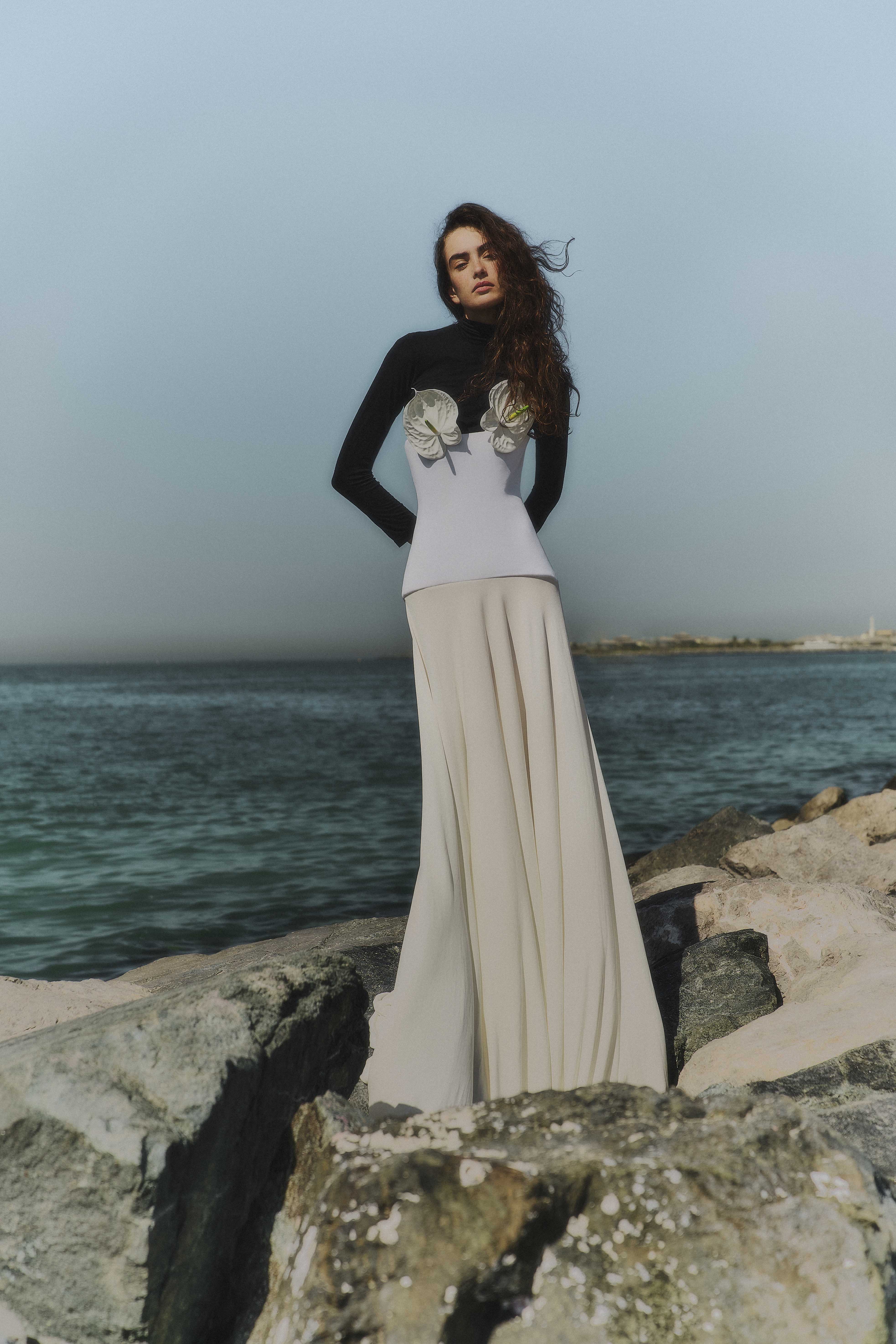
Dress, price on request, Loewe. Top, stylist’s own
Dress, price on request, Loewe. Top, stylist’s own
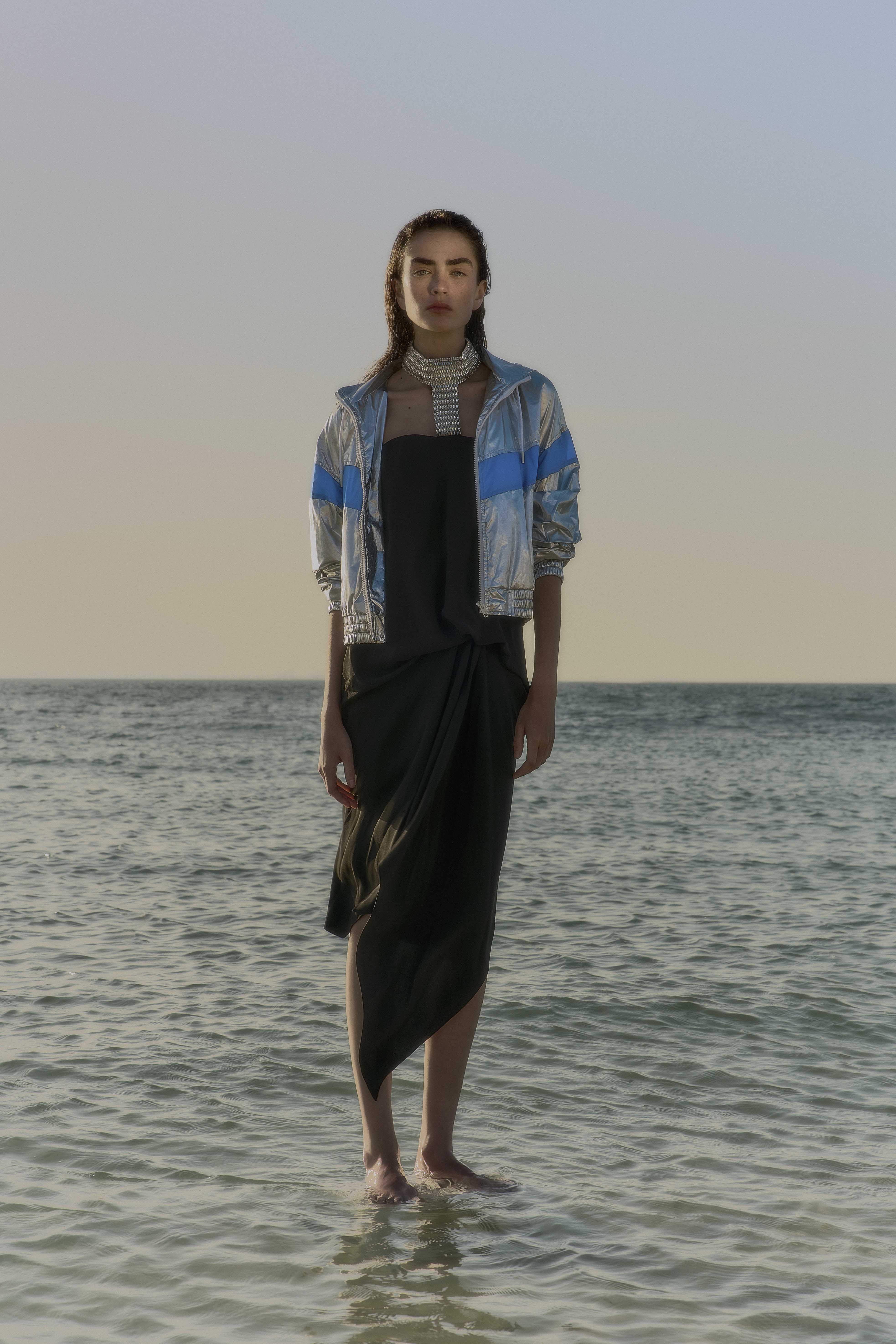
Harness dress, Dh39,500; and tracksuit jacket, Dh8,900, both from Celine
Harness dress, Dh39,500; and tracksuit jacket, Dh8,900, both from Celine
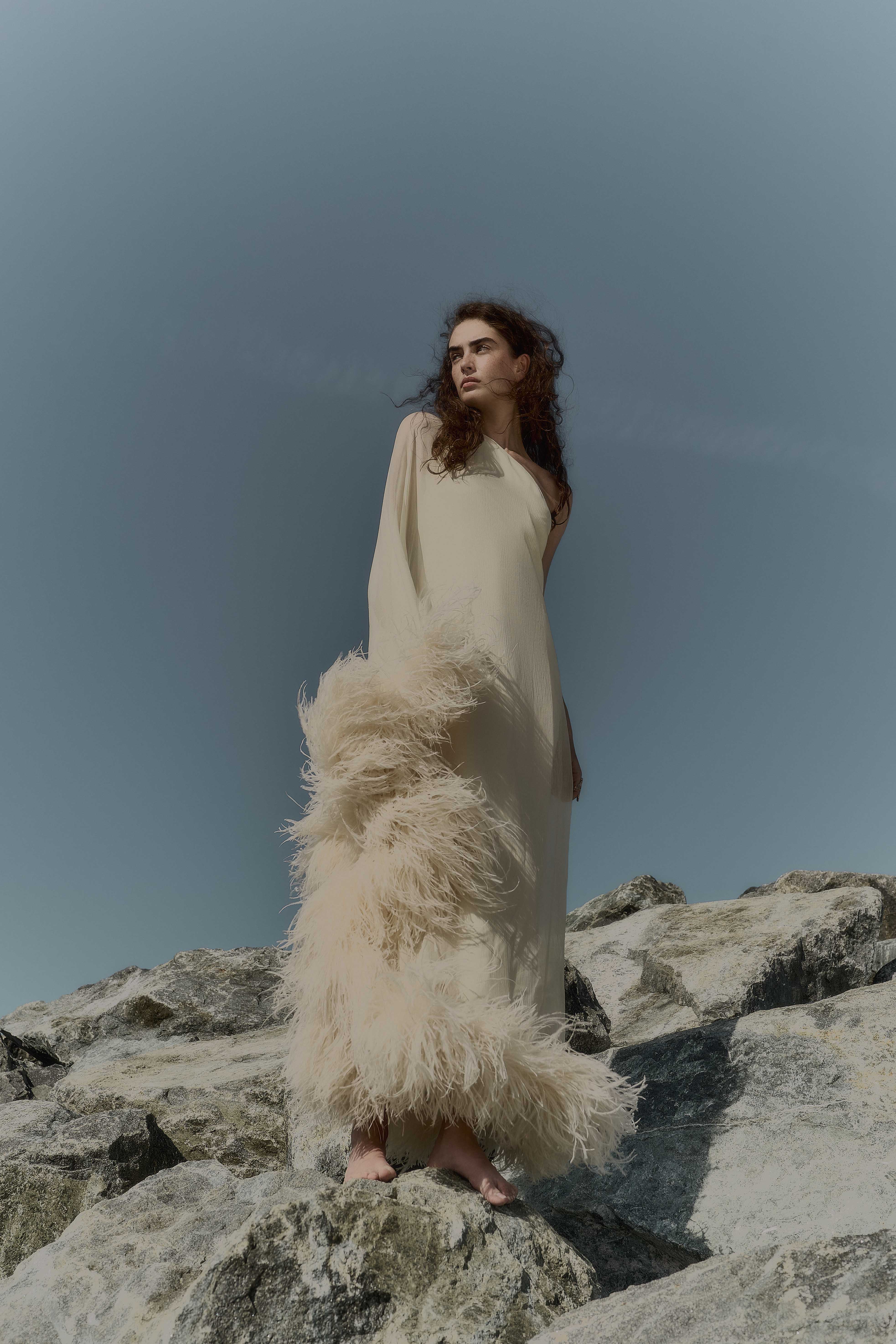
Kaftan, Dh7,785, Taller Marmo; yellow gold and diamond Hob ring, Dh17,115, Bil Arabi
Kaftan, Dh7,785, Taller Marmo; yellow gold and diamond Hob ring, Dh17,115, Bil Arabi
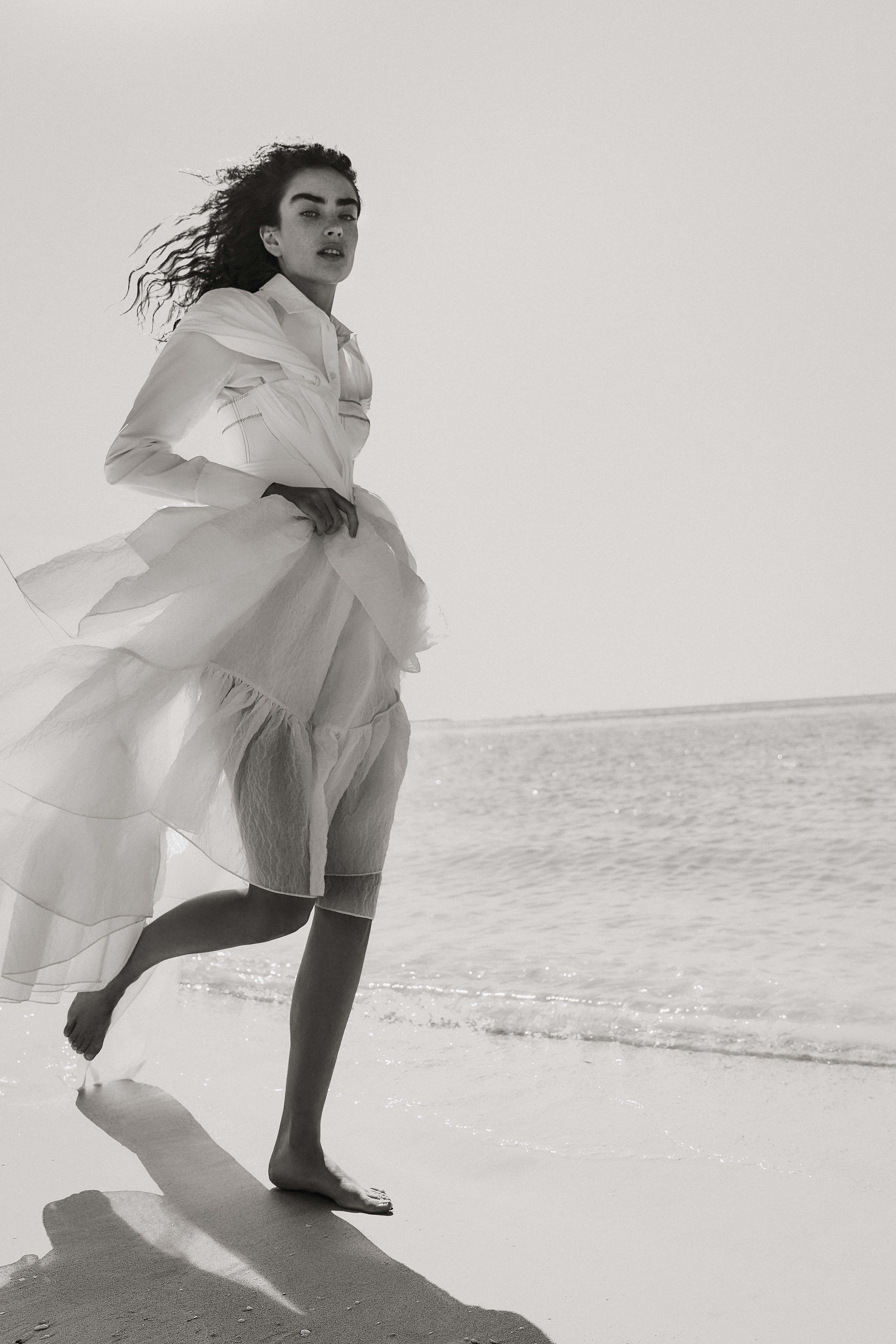
Skirt, Dh6,470; shirt, Dh3,470; and corset top, Dh11,465, all from Erdem
Skirt, Dh6,470; shirt, Dh3,470; and corset top, Dh11,465, all from Erdem
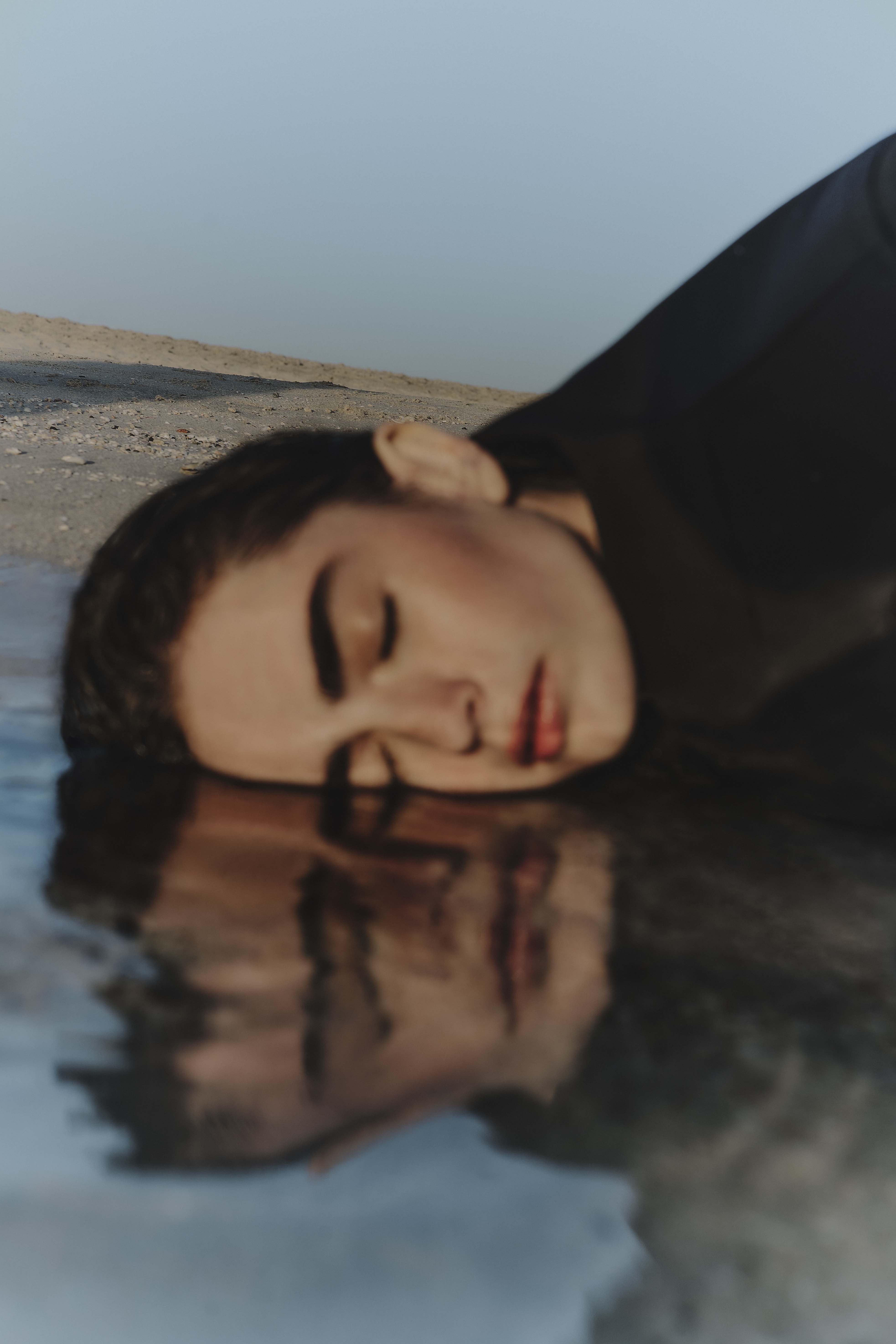
Shirt, price on request, Bottega Veneta
Shirt, price on request, Bottega Veneta
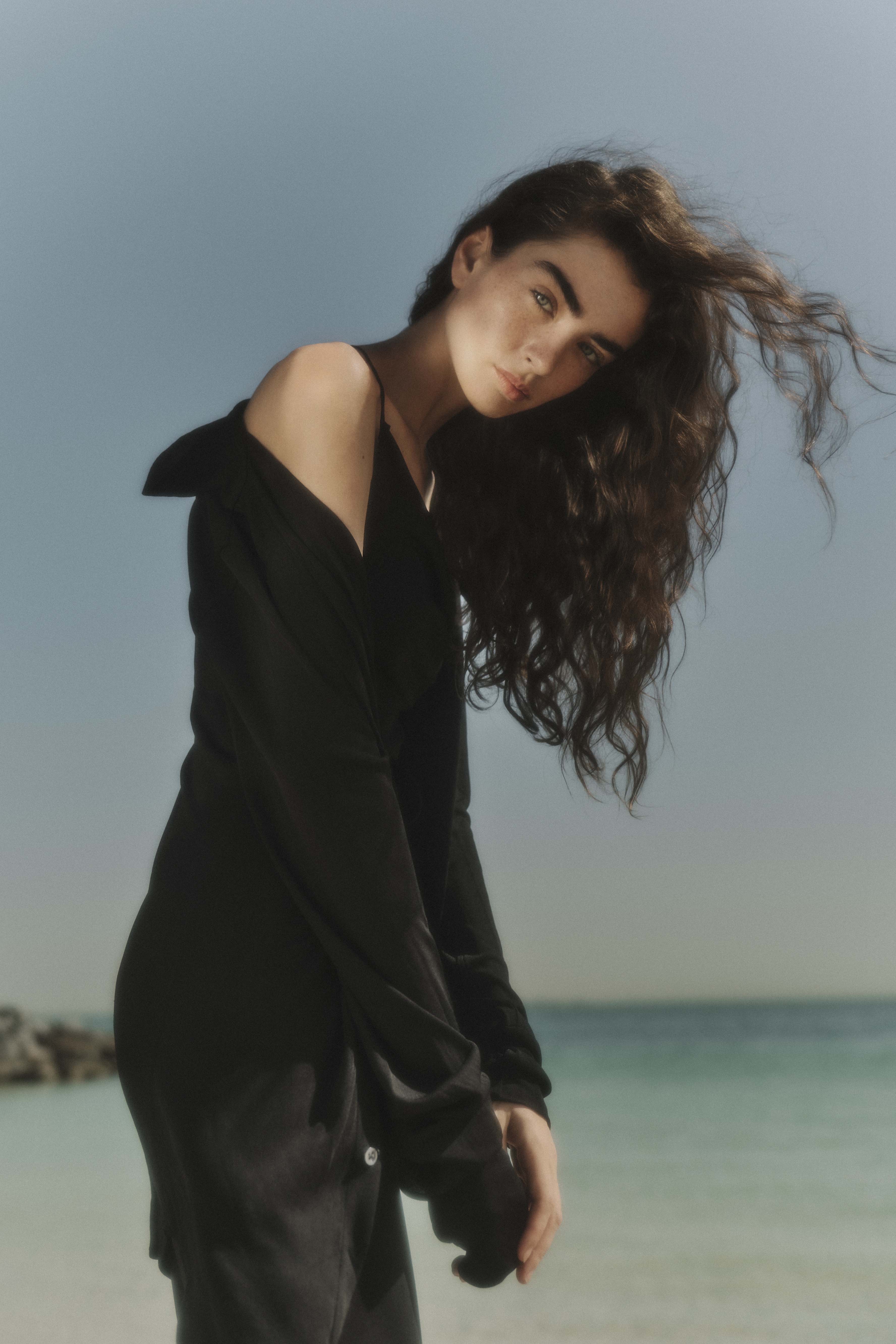
Backless top, Dh734; shirt; Dh1,193; and skirt, Dh2,350, all from Noon by Noor
Backless top, Dh734; shirt; Dh1,193; and skirt, Dh2,350, all from Noon by Noor
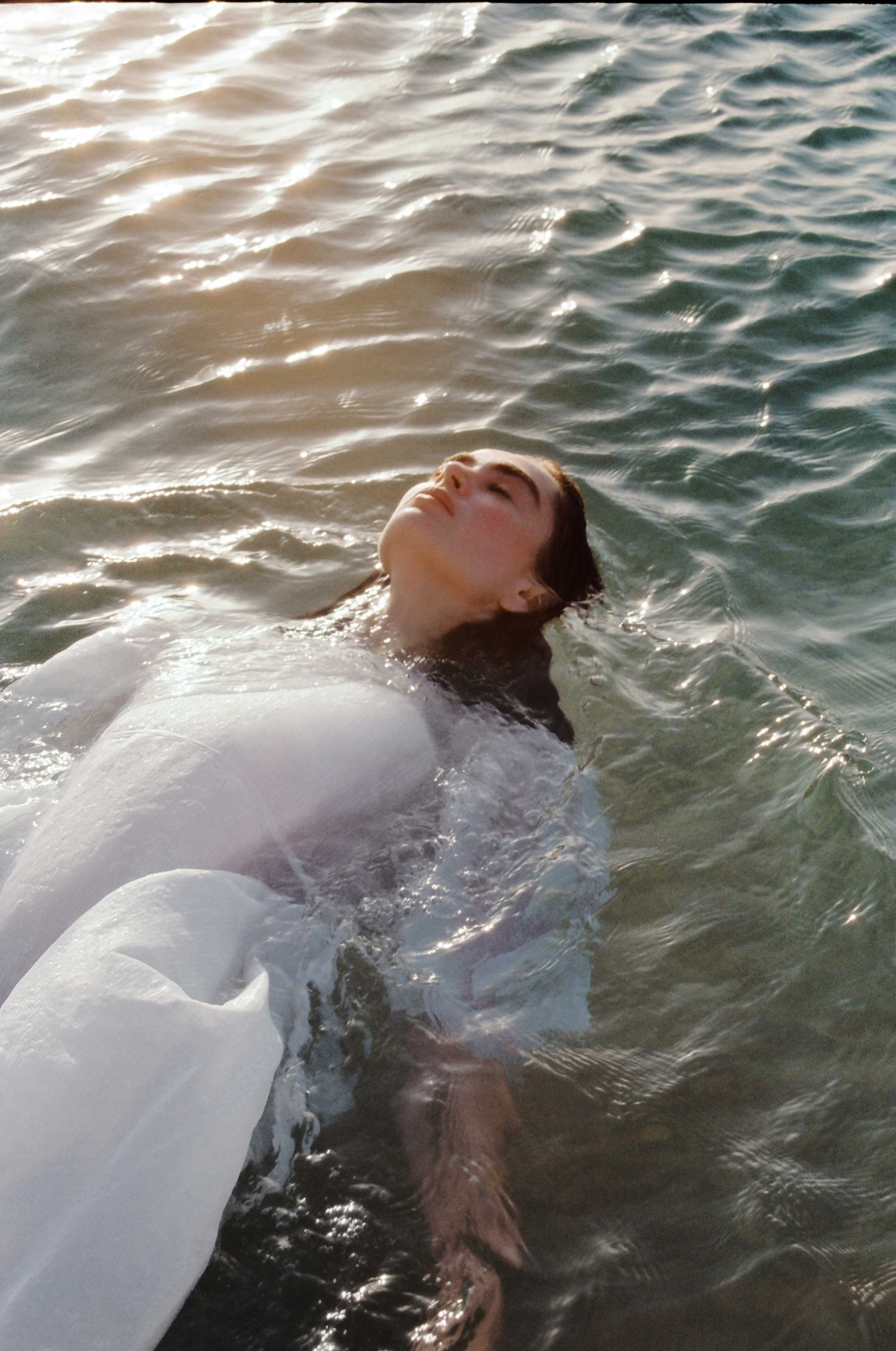
Dress, Dh15,025, Cecilie Bahnsen
Dress, Dh15,025, Cecilie Bahnsen
Beauty, Dolce & Gabbana style
Why the Italian fashion brand has decided to make its own fragrances, make-up and skincare. By Selina Denman
The Dolce & Gabbana aesthetic is, at its heart, colourful, celebratory, sensual and unashamedly feminine – ideals that lend themselves to the worlds of beauty and make-up. So the brand’s decision to bring its beauty division in-house, rather than continuing to license it to different partners, makes perfect sense.
Nonetheless, it is the first Italian fashion house to do so, and assuming direct control of the production, sales and distribution of its own fragrance, make-up and, eventually, skincare products, is no small undertaking. A change in strategy by former license partner, Shiseido, prompted the brand to pursue this new course, which represents a considerable investment and expansion of worldwide operations.
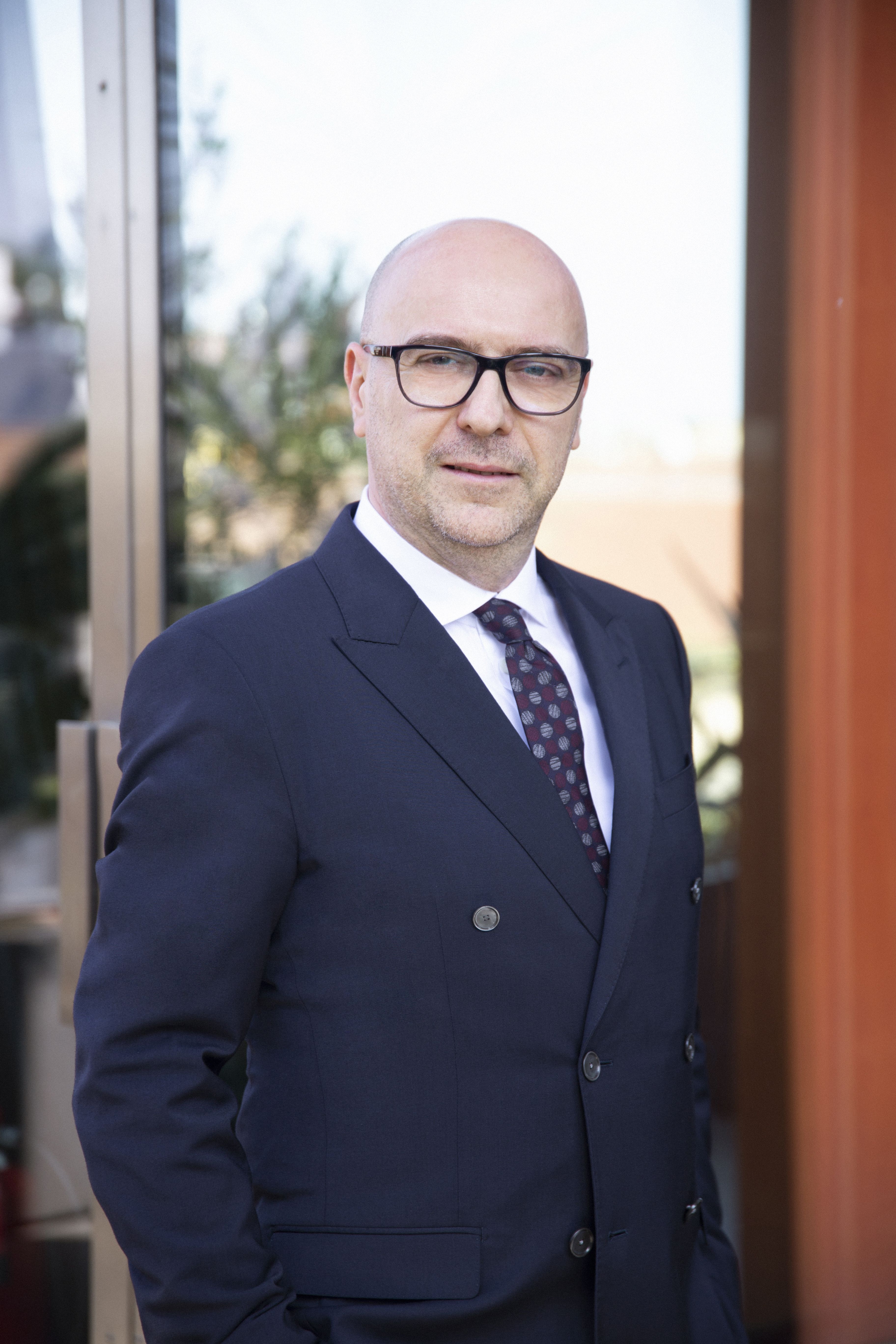
Dolce & Gabbana’s president and chief executive Alfonso Dolce. Photos: Dolce & Gabbana
Dolce & Gabbana’s president and chief executive Alfonso Dolce. Photos: Dolce & Gabbana
An entirely new legal entity, Dolce & Gabbana Beauty, was officially launched on January 1, with headquarters in Milan. Under the leadership of Dolce & Gabbana’s president and chief executive Alfonso Dolce and Gianluca Toniolo, operating chief executive of Dolce & Gabbana Beauty, the new entity will apply the know-how, creativity and codes of the brand’s fashion, jewellery and homeware divisions to a new family of products.
“We are not creating something from scratch,” says Toniolo. “We are just putting what Dolce & Gabbana has done for the past 35 years into the beauty category. We don’t need to do anything crazy.”
In doing so, it will realise an intention set out by Domenico Dolce and Stefano Gabbana when they first established their eponymous label more than 35 years ago.
“It was the dream of Stefano and Domenico from the very beginning, because when Dolce & Gabbana was born, it was in the minds of Stefano and Domenico to create a real fashion house, and beauty is a very important part of the fashion system. It is totally complementary. It is an important part of the lifestyles of our customers,” Alfonso Dolce tells me.
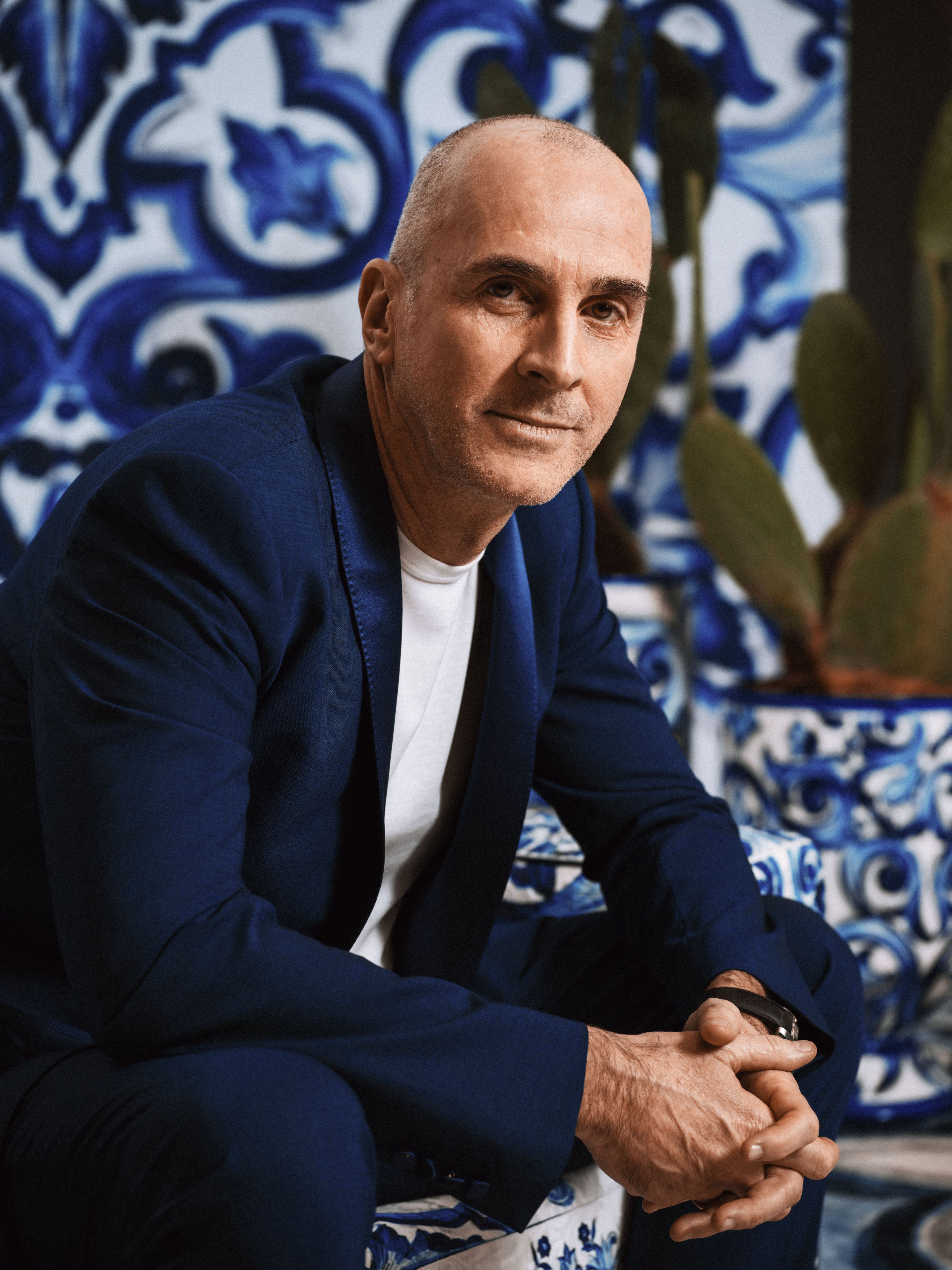
Gianluca Toniolo, operating chief executive of Dolce & Gabbana Beauty
Gianluca Toniolo, operating chief executive of Dolce & Gabbana Beauty
To make all this possible, Dolce & Gabbana Beauty has partnered with and become a shareholder in Intercos, a globally operating Italian company specialising in the development and production of beauty products. The new beauty division has already employed 177 people around the world, with plans to have up to 300 employees within nine months.
“This is real news for the beauty world,” Toniolo stresses. “Dolce & Gabbana is the first Italian company to bring the beauty category in-house. The category has a lot of entry barriers, both financial and manufacturing-wise, so the decision to bring it in-house was very courageous, but with a solid vision behind it.
“The big point of difference is if you look at other brands, the fashion division is completely out of the mindset of the beauty division – they are two separate entities, with two different creative directions.
"Here at Dolce & Gabbana, we are one brand, with different competencies and categories. It means the guidelines will drop directly from Mr Stefano Gabbana and Domenico Dolce, and this will allow us to speak, in the beauty category, in the same language as the other categories that Dolce & Gabbana is managing.”
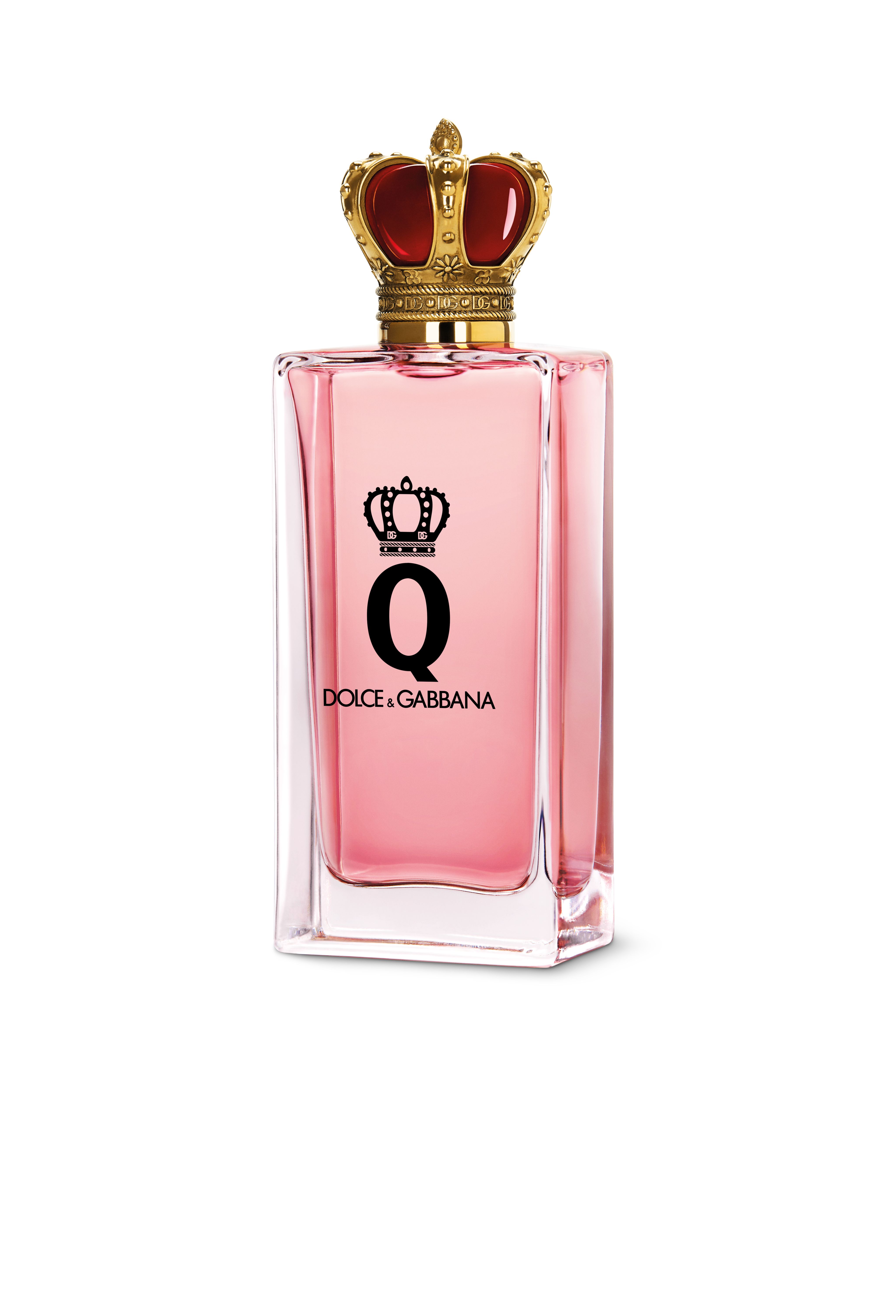
Q, for queen, is crafted in Italy by perfumer Daphne Bugey
Q, for queen, is crafted in Italy by perfumer Daphne Bugey
It allows the brand to address a whole new group of customers. “Beauty is an entry-level category – it’s a category that allows you to come into contact with your younger customers and for them to be contaminated by the brand,” says Toniolo.
“You can touch a lot of customers that might not be able to afford to buy a bag or something more expensive. But with €100 [$105] or €120, you can feel like you are part of the Dolce & Gabbana family.”
The focus this year is to develop the Dolce & Gabbana fragrance line. Since the release of its first perfume in 1992, the brand has created more than 100 scents – so it already has a solid standing in this category. But within the next two years, 80 per cent of the fragrance line will be completely new.
On the cards this year are a couple of “blockbuster fragrances for women”, including Q, which is currently being rolled out worldwide, with a Middle East launch slated for April.
An answer to Dolce & Gabbana’s popular men’s fragrance K, for king, the new Q, for queen, is crafted in Italy by perfumer Daphne Bugey, and combines notes of tart Sicilian lemon, blood orange, red cherry and jasmine. It is presented in a geometric bottle topped with a cherry red crown – a playful but artfully crafted nod to the crowns that so often accessorise the design duo’s fashion creations.
A second fragrance, backed by “a worldwide celebrity”, is due in September. This will be followed by make-up next year and skincare, where the focus will be on ingredients sourced in Italy, in keeping with the fashion brand’s deeply ingrained “Made in Italy” ethos.
The plans are ambitious and already moving quickly, despite a backdrop of global supply chain issues affecting many industries.
“Today, all the world knows about the shortage of materials, raw components, glass, etc,” says Toniolo. “I think supply chains all over the world are struggling with shortages. So we started this year with the perfect hurricane.
“Honestly, I will say that the vision Dolce & Gabbana had, to strike a deal, financial and industrial, with one of the major Italian companies operating worldwide, Intercos, allows us to work with them and to find solutions to these shortages. But for sure, we are struggling like everyone at this moment, with plastic, glass, paper and all other raw materials.”
Nonetheless, the duo are visibly excited about the prospects of this new division and the opportunities it presents. “We have the chance to speak to our consumers worldwide, in one language,” says Alfonso Dolce. “And that language is the Dolce & Gabbana DNA, the Dolce & Gabbana experience, the Dolce & Gabbana mindset of Italian style and craftsmanship.
“Domenico and Stefano started 38 years ago with one dream and today, thanks to all the people who have believed in them over the years, the dream is being given new life.”
Image captions
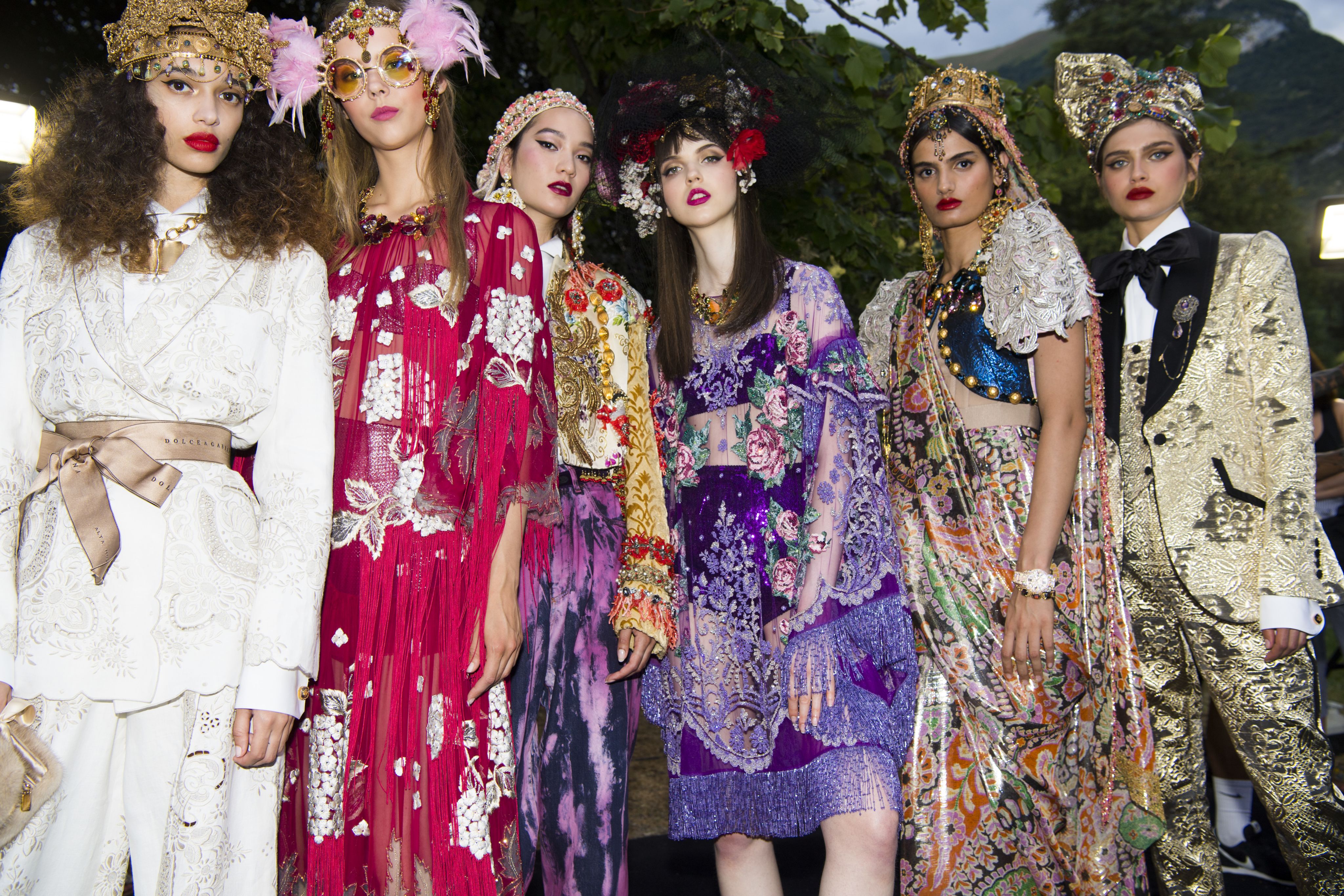 Image 1
Image 1Dolce & Gabbana's autumn/winter 2023-2024 collection. Photo: Getty Images

Dolce & Gabbana's autumn/winter 2023-2024 collection. Photo: Getty Images
Dolce & Gabbana's autumn/winter 2023-2024 collection. Photo: Getty Images
California cool
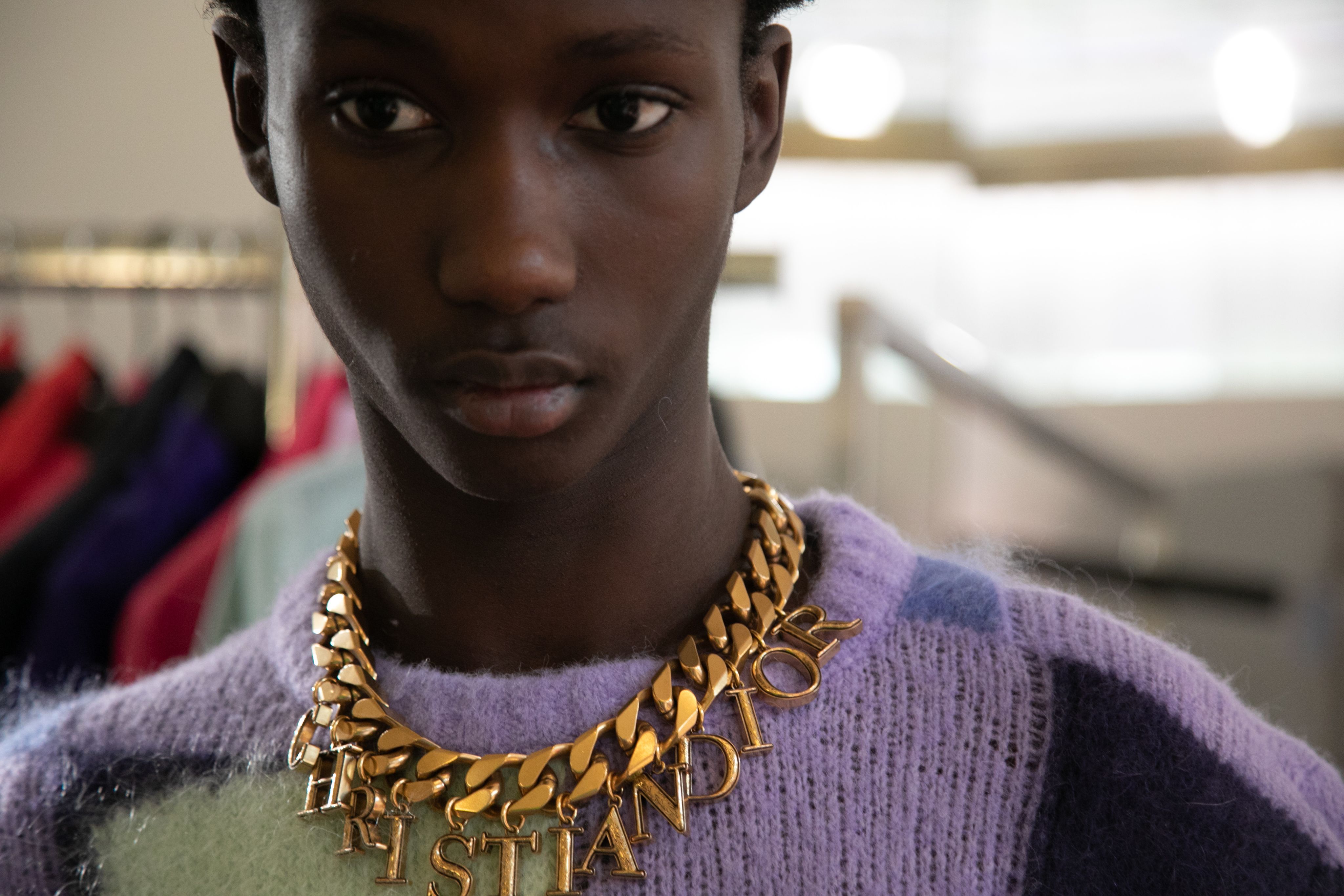
Dior’s famous tailoring is mixed with a more relaxed, skate-park sensibility. Photos: Dior
Dior’s famous tailoring is mixed with a more relaxed, skate-park sensibility. Photos: Dior
Kim Jones and Eli Russell Linnetz have teamed up on a 1990s-inspired Dior men’s capsule collection. By Sarah Maisey
For his Dior men’s spring 2023 collection, artistic director Kim Jones once again leaned into the elements that are so foundational to his work – an uncanny sense for blending the high-end with street style, and a love of collaborations.
For this spring offering, Jones invited designer and photographer Eli Russell Linnetz, who heads his own label, ERL, into the hallowed house of Dior. ERL is known for its laid-back, almost playful California aesthetic, and together with Jones, presented a collaborative capsule collection in Venice Beach. Called California Couture, it was pitched at the district’s surfer/skater crowd.
“We have worked with lots of different people on our collections, but this time I wanted to work with someone in a different way; I wanted to see Dior from a different angle,” says Jones.
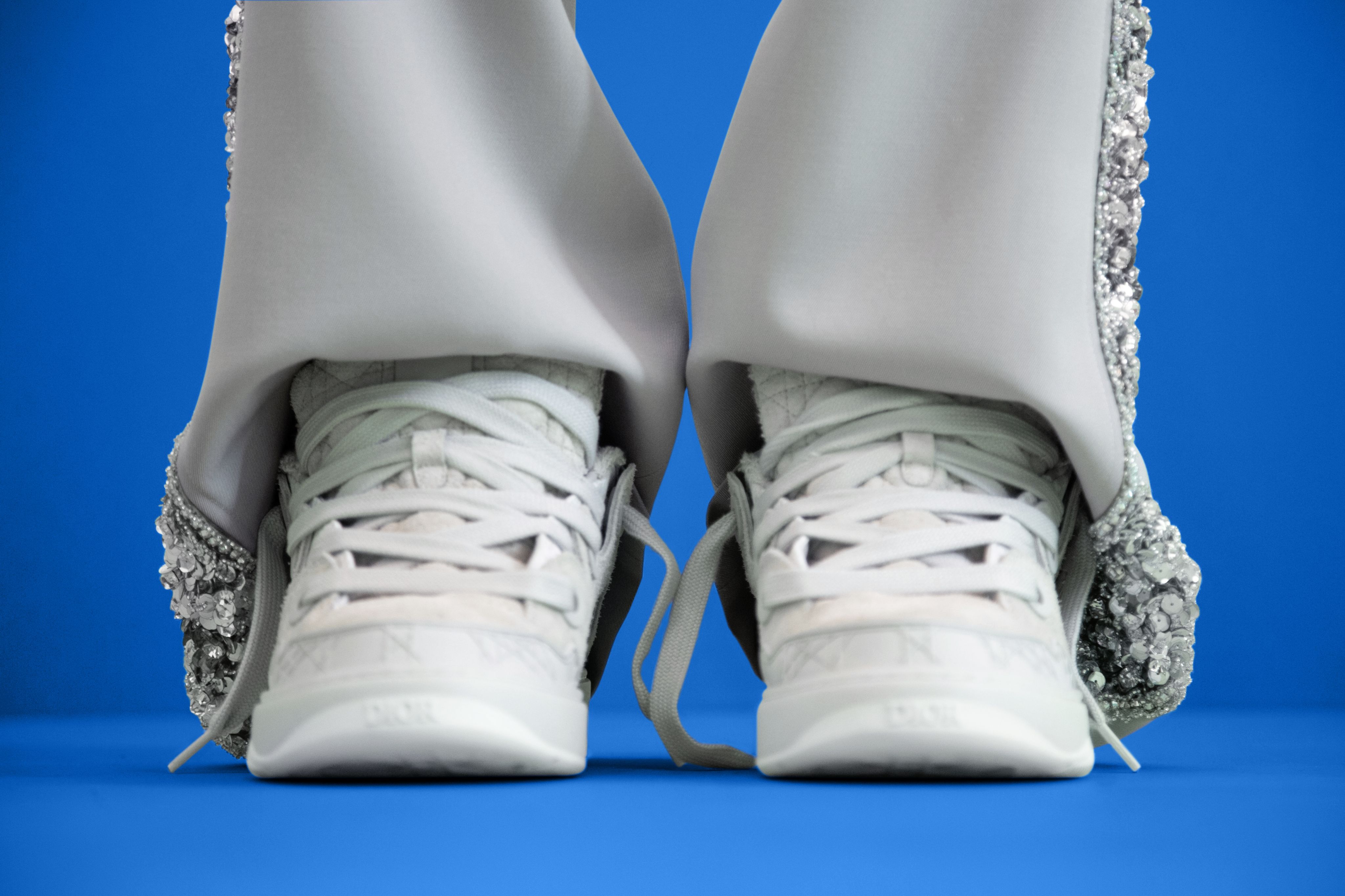
The collection was unveiled in Venice Beach
The collection was unveiled in Venice Beach
“With Eli Russel Linnetz, not only do I like his work, but working with a younger designer on Dior Men and seeing things from his perspective felt incredibly inspiring. It was both familiar and revelatory; reaffirming why we both dreamed about working in fashion in the first place.”
The pair delved into Dior’s history, specifically the early 1990s. “We started looking at the Dior archive from the year of my birth, 1991,” explains Linnetz. “This was during Gianfranco Ferré’s period as artistic director and was a part of the history of Dior that felt completely fresh for both Kim and me.”
The ideas taken from the Ferré era were translated into an elegant mix of lux detailing, Dior’s famous tailoring and a relaxed, more skate-park sensibility. For example, wide-legged silk trousers are covered in the crossed patterning of the house’s cannage quilt, and worn with oversized trainers and a sheer, open-fronted cashmere jumper.
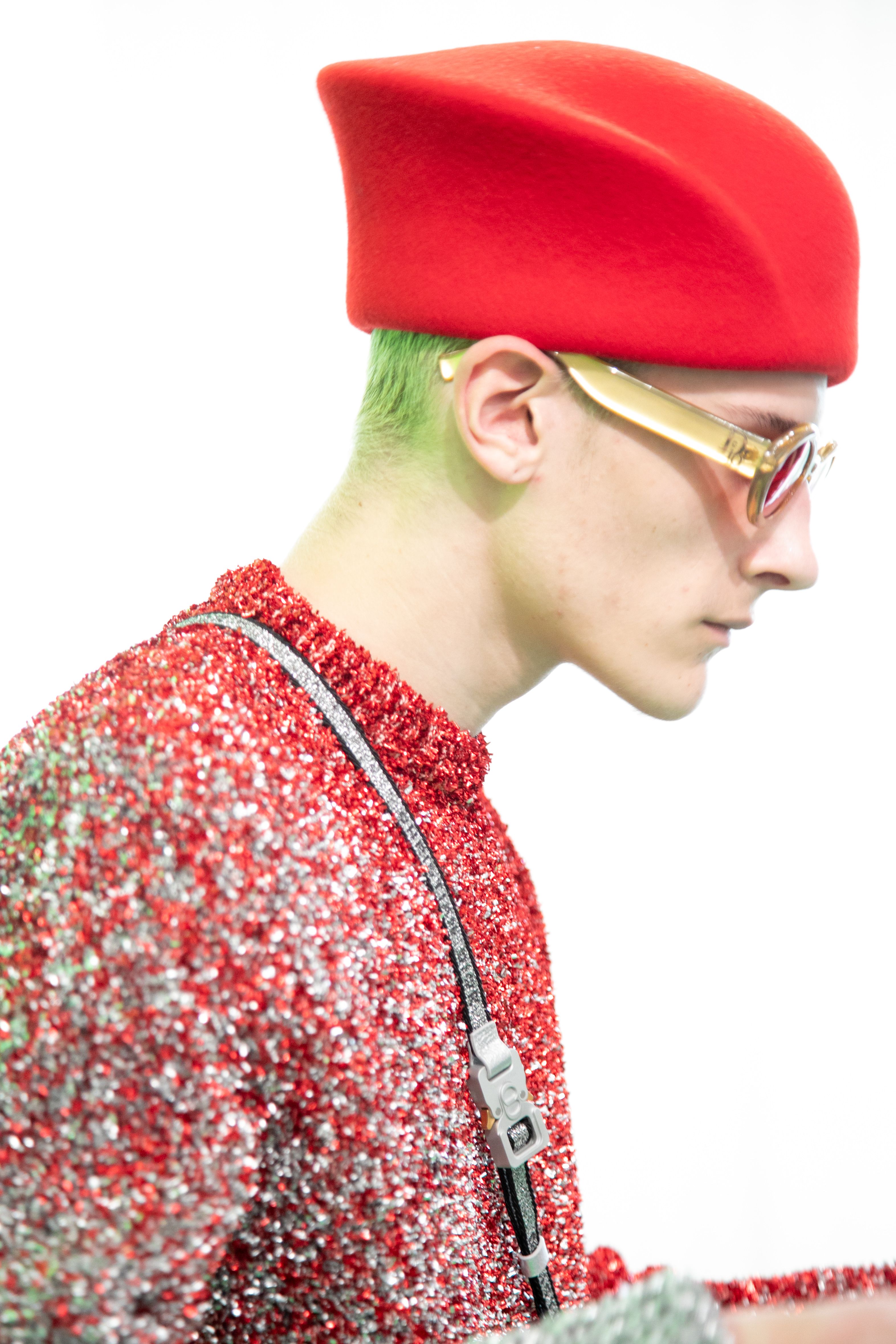
The pair delved into Dior’s history, specifically the period under Gianfranco Ferré
The pair delved into Dior’s history, specifically the period under Gianfranco Ferré
Suits from the 1990s have been turned inside out, to reveal the workings of the atelier and a logo-ed “CD” lining, and are worn with tailored wool coats, hanging low on the arms and left to trail the floor.
More suits come in pastel satin, and evening trousers have a couture-like scattering of crystals down the outer seam. Silver and grey are key across the collection, nodding to Christian Dior’s favourite colour scheme and to Jones’s first collection for the maison, where the hue underpinned the entire show.
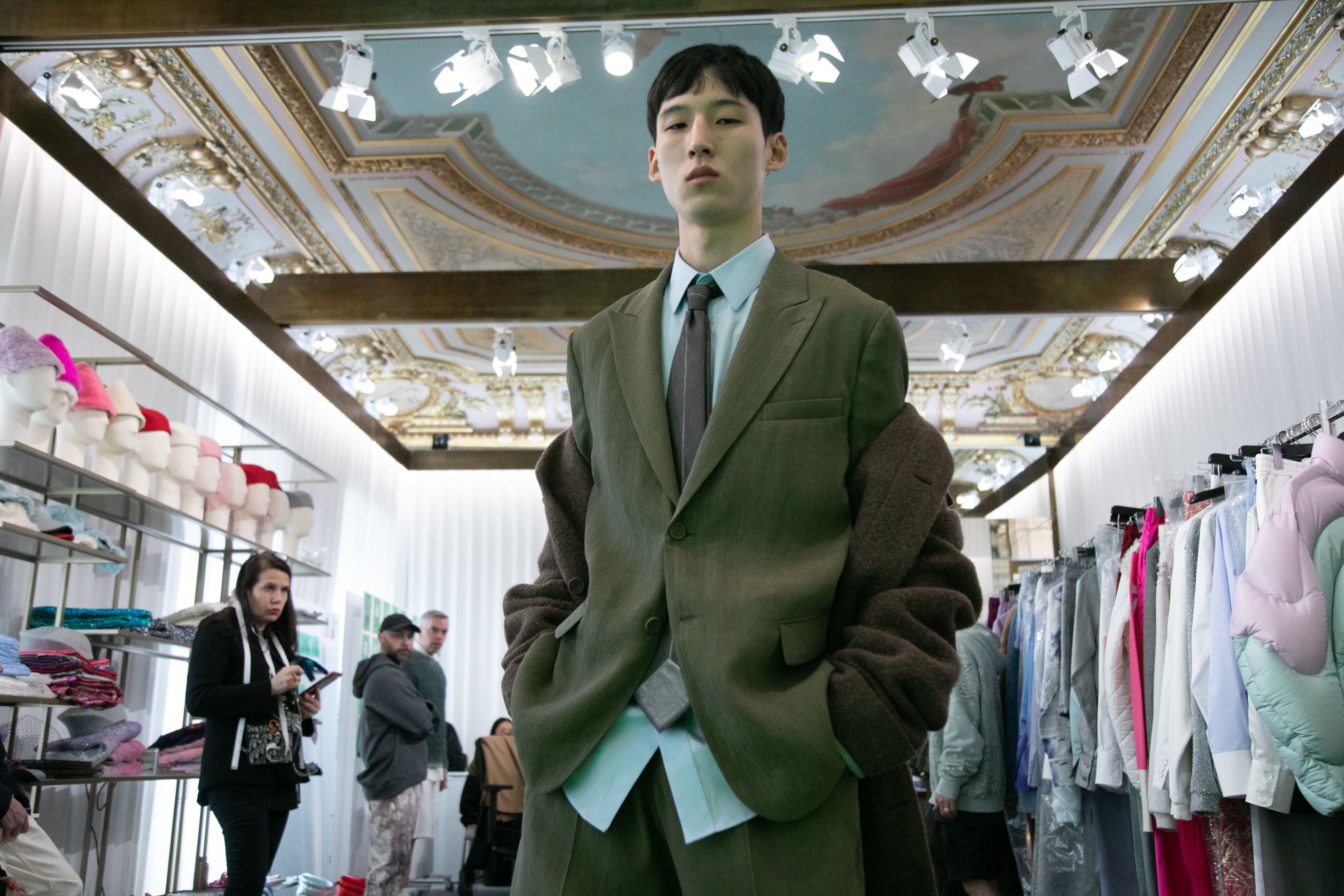
The collection is called California Couture
The collection is called California Couture
Tops and jackets are puffed and padded, or quilted with the famous cannage stitch, which also runs across a new B9S Skater trainer, made in both satin and leather. The Saddle Bag, meanwhile, has been revamped, shrunken and renamed a “male minaudière”. Made in blinged-out gold, shearling or shimmery tinsel, it is held in the hand or slung around hips, while an outsized version comes in quilted satin. Elsewhere, the humble beanie is covered in pearl detailing, while another hat comes with its own veil.
Having grown up in Venice Beach, Linnetz’s input is felt in breezy sweatshirts, Bermuda shorts and checked shirts, all now granted with a sartorial upgrade. Shorts have been transformed into formal evening wear, thanks to heavy embellishments or cut silk-work, while tops and hoodies have been crafted from reclaimed ocean plastic. Checked shirts and jersey tops have been deconstructed and patchworked into dramatic opera capes.
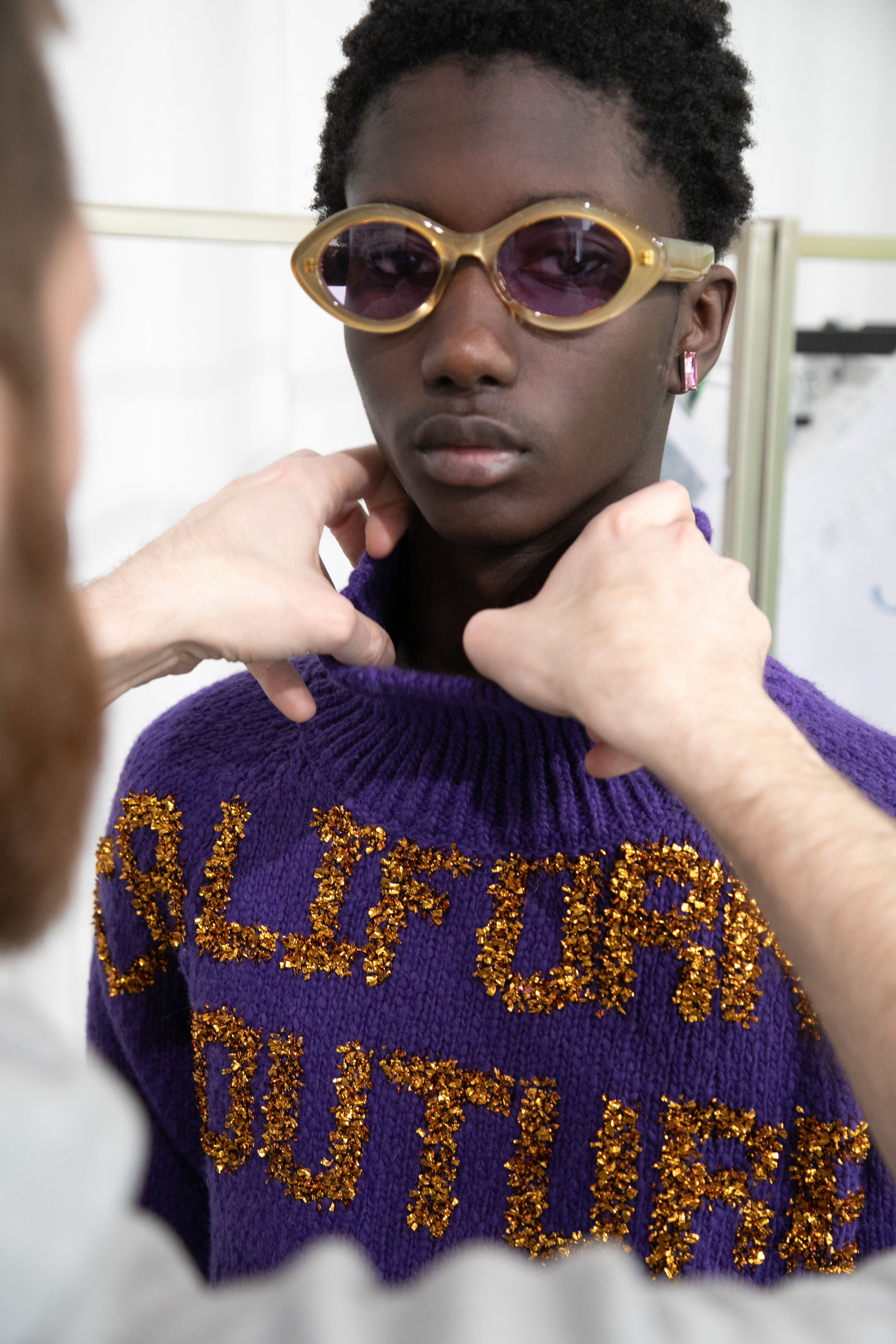
Patterns are picked out in tinsel
Patterns are picked out in tinsel
ERL’s signature swirl hoodie makes an appearance, now with the pattern picked out in tinsel (Venice Beach is close to Tinsel Town, after all) and as a Ferré-inspired 1990s puffer jacket in ice cream pastels. California Couture has been written across jumpers and teamed with fluffy Kangol hats that are sure to be a hit with the skater crowd.
“The idea of maximalism comes from [Gianfranco Ferré’s time at Dior] and from me – a coming together of chaos and perfectionism,” says Linnetz.
Gaurav Gupta's fun-filled fantasy world
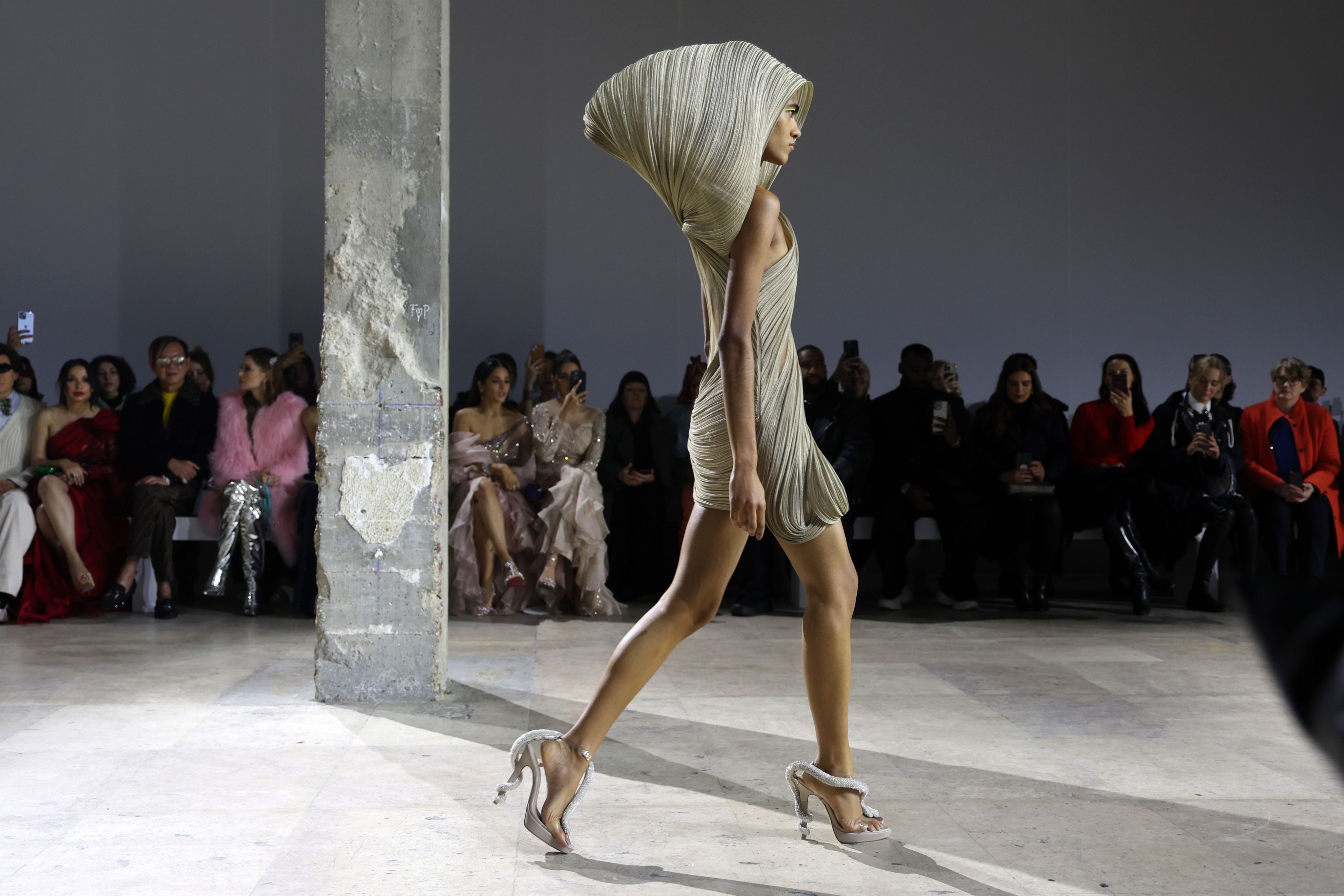
A model walks the runway during the Gaurav Gupta haute couture spring/summer 2023 show. Photo: Getty Images
A model walks the runway during the Gaurav Gupta haute couture spring/summer 2023 show. Photo: Getty Images
Ahead of his haute couture debut, the Indian designer spoke to Francesca Fearon about climate activism, meeting Vivienne Westwood and dressing Cardi B
In an elegant 19th-century apartment in a chic Paris neighbourhood, there was the familiar bustle of pre-fashion show activity. Models arriving for fittings, assistants dashing about with scissors and thread, and celebrities dropping by to choose their front row looks from the rails of colourful clothes lining the rooms. Calmly overseeing this commotion was Gaurav Gupta.
The Indian couturier was preparing for his official haute couture debut the following day, with a show scheduled straight after Fendi Couture. The prestigious Fédération de la Haute Couture et de la Mode has previously championed the Indian talents of Vaishali S and Rahul Mishra, and for the January collections, Gupta joined the ranks with Mishra, as a guest designer.
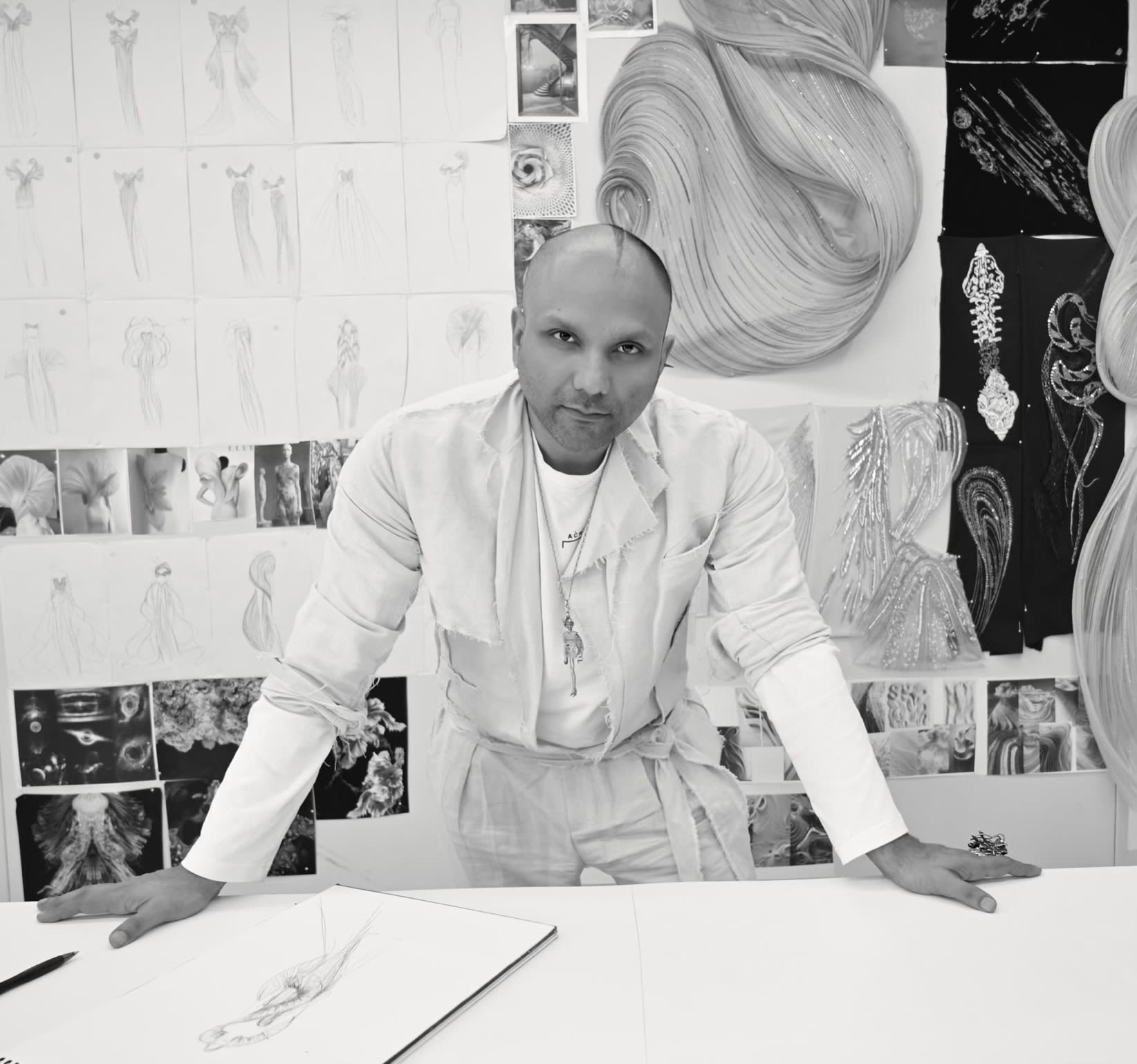
Designer Gaurav Gupta. Photo: Gaurav Gupta
Designer Gaurav Gupta. Photo: Gaurav Gupta
The collection was called Zero Infinity, a seeming paradox juxtaposing stillness with movement – but if you saw Cardi B in her “dancing in the wind” blue outfit at the Grammy Awards last month, you start to get the picture. Gupta has deftly moulded light, ribbed organza into pleated waves that wrap around the head and body in one continuous rippling line seemingly without beginning or end – in other words, infinite.
Cardi B wore look nine from the show, but nude-coloured versions on the catwalk prompted one front row commentator beside me to describe the dresses as being like “the swirling sands of the desert”.
Infinity is a signature sculptural technique for the designer. “I’ve always loved drape and structure, certainly going back 10 years,” Gupta says during the fittings. “I like exploring volume and 3D embroidery,” he adds as I watch him working with his team on a dress of sand-coloured waves that conjoins one black and one white model together.
A gesture of unity, a political statement perhaps, but exquisitely expressed. Gupta is quite a political personality. He describes himself as an activist, and among his interests are climate change.
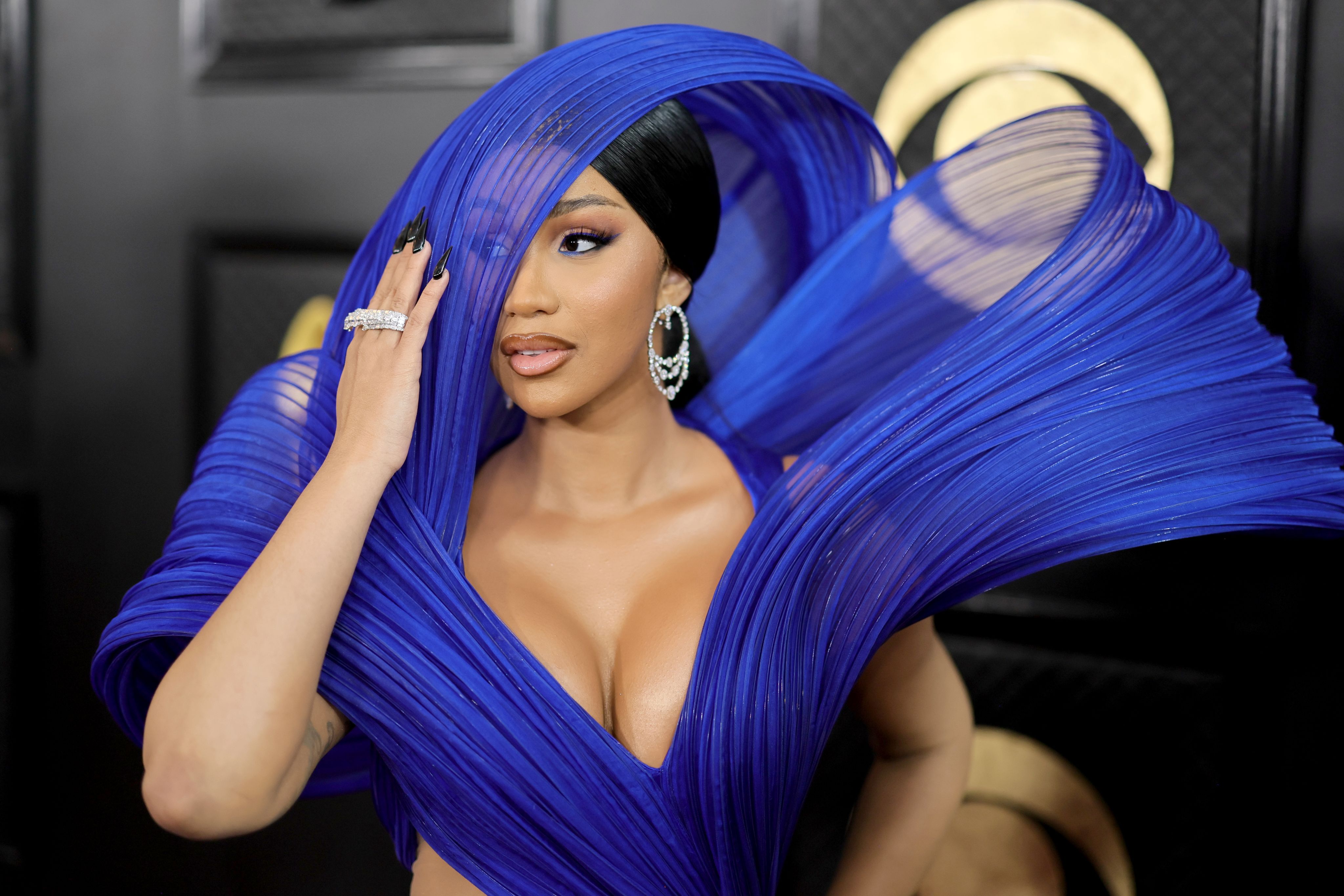
Cardi B attends the Grammys in a Gaurav Gupta design. Getty Images
Cardi B attends the Grammys in a Gaurav Gupta design. Getty Images
“I remember,” he says, “when I was talking about the air pollution crisis in India, during a television debate with some politicians, and trying to get the message across of how important it is for us to have the right to breathe [clean air].”
Politics and bureaucracy slow down any change but, says Gupta, “for me it’s personal. We need to be using all mediums to get our message across”. He acknowledges that championing sustainability and highlighting climate change are a lot for some people to understand, but believes that, as someone in the public eye, “one has to keep talking about this, to be honest and to find ways to collaborate and join hands and make a difference on the ground, in the oceans and on the beaches. We all have to do our bit.”
The designer recalls spending an inspiring three hours talking to Dame Vivienne Westwood about climate change when they met in 2019 at the Animal Ball, a cause that Gupta supports, raising money for elephant and tiger populations in Asia. He was captivated by her passion and knowledge. “She was the ultimate icon who made us think differently about climate change,” he says.
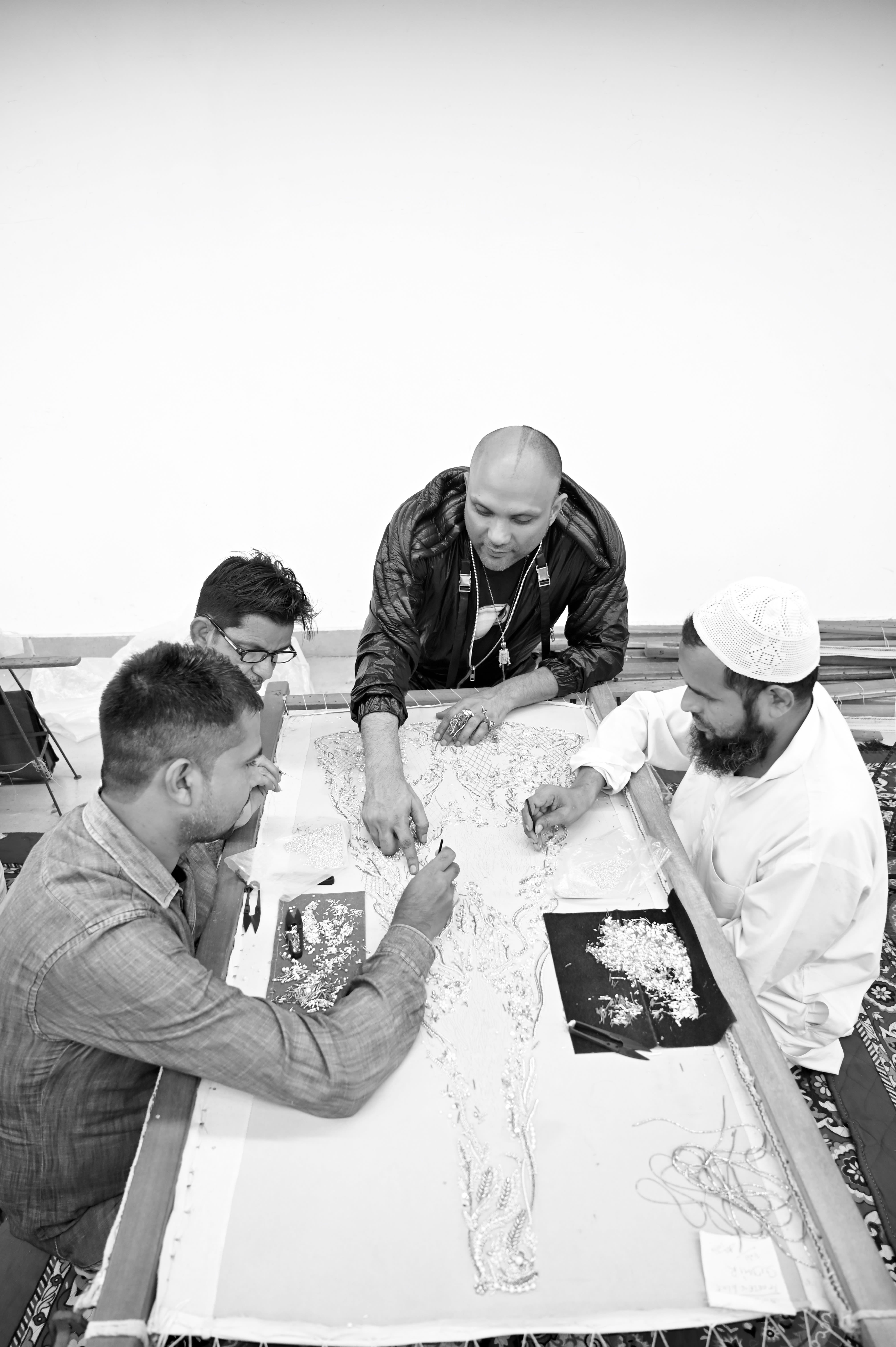
Gaurav Gupta with his artisans. Photo: Gaurav Gupta
Gaurav Gupta with his artisans. Photo: Gaurav Gupta
Nevertheless, he feels the understanding of climate change and issues around sustainability are still making slow progress in India. “A lot more needs to be happening. I don’t think the eventual client who is consuming fashion or most commercial products has an understanding or awareness around sustainability.”
He, however, is making his own contribution in terms of ensuring a good working environment for
his fashion and embroidery ateliers. His brand uses recycled packaging, and a year ago, he created a whole collection using recycled ocean plastics.
“I want to make more clothes out of waste. In fact, I personally wear a few upcycled clothes and I only drive electric cars. I think it’s not just about a brand, one has to do this personally as well. Sustainability should be a reflection of all the activity in your life.”
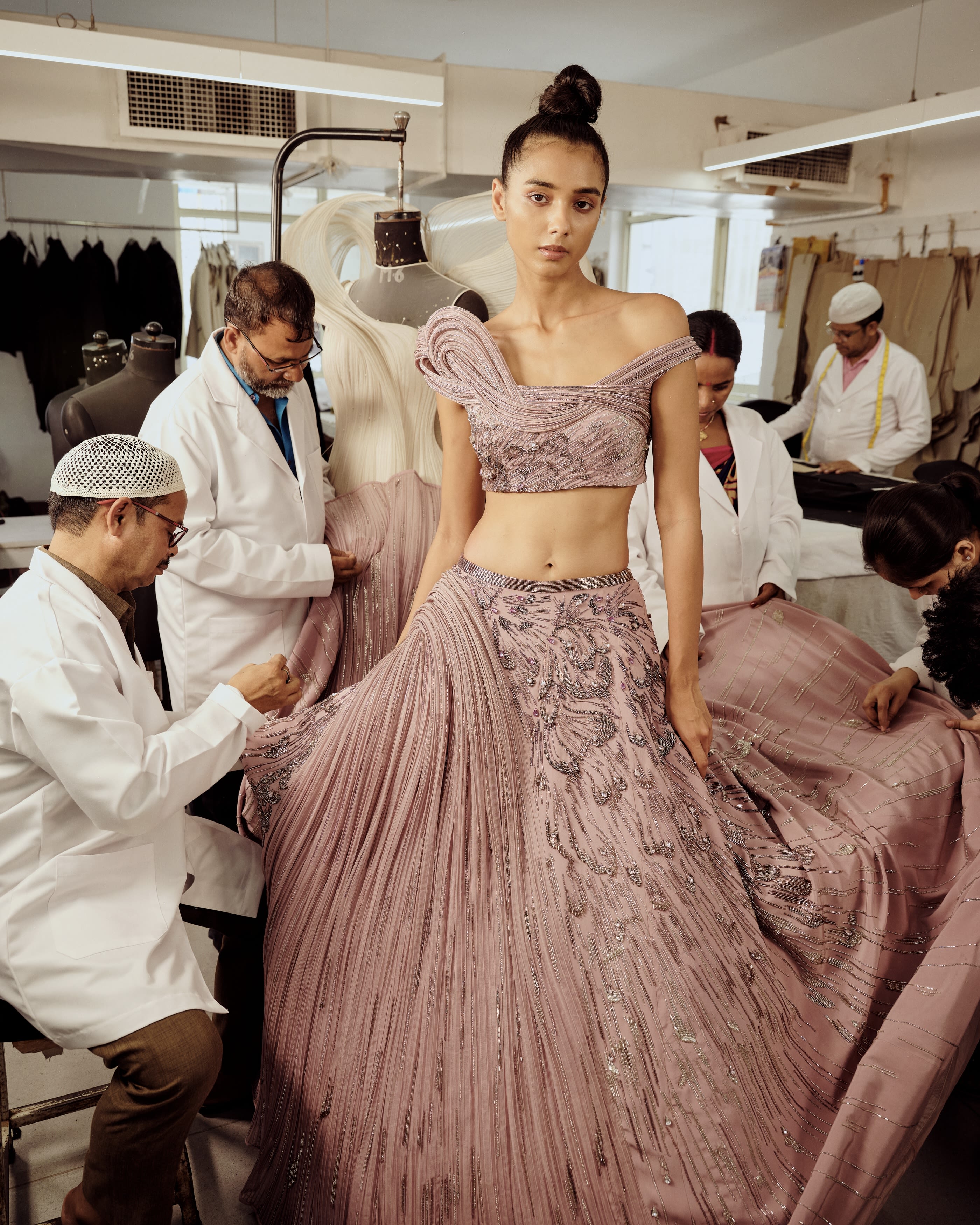
Gupta's designs combine traditional Indian craftsmanship with his signature sculptural aesthetic
Gupta's designs combine traditional Indian craftsmanship with his signature sculptural aesthetic
Gupta founded his eponymous label in 2005, after graduating from Central Saint Martins in London, the alma mater of Alexander McQueen and Stella McCartney, and then working for conceptual designer Hussein Chalayan.
Over the past 18 years, his collections have embraced the skills of India’s gifted embroiderers, combined with his own whirlwind sculptural techniques to create glamorous gowns that appear on best-dressed lists in India and the Middle East, as well as in music videos and on the red carpet. The bridal market is a big part of business in India, but from haute couture he has expanded into evening ready-to-wear.
His Middle Eastern clients, royal families and private clients fly into Delhi requesting bespoke designs. “We offer them something unique that they cannot buy at home,” Gupta says. His label is expanding its footprint with strategic partnerships with groups such as Neiman Marcus and Moda Operandi in the USA. “I’ve always wanted to be global, but when I’m ready and financially sustainable in India first.
“We’ve fine-tuned the machinery, and now have girls and women from 15 to 80 years old wearing us, and men of all age groups. They go that extra step to wear us because they want to enter our fantasy world.”

Looks from Gaurav Gupta's spring/summer 2023 couture show. Photo: Gaurav Gupta
Looks from Gaurav Gupta's spring/summer 2023 couture show. Photo: Gaurav Gupta
As a creator, Gupta describes himself as a non-conformist. “I don’t follow pattern making, but work with structured draping, mostly on a mannequin.” Every client has their own mannequin for precision fitting. There are up to 10 processes that a design goes through, from calico toile through stages of cutting handloomed fabrics, pleating and moulding the silhouettes, embroidery [he also uses bugle beads to create the 3D ribbing that holds the fabric in its wave-like structure] to the finished garment.
He explains his aesthetic as abstraction and fantasy. “I call the look future-primitive; you could even imagine it in a fantasy costume drama,” he quips.
There is no referencing, and no mood board when he starts the design process. “It’s fluid freedom,” he says.
If you were to point to any influence, then he is drawn to architecture and the anatomy, which inspire the fantastical shapes that make such a statement on the red carpet and spread into the experiential environments he has created in his stores around India. The boutiques are surreal, conceptual fantasy palaces that get nominated for architectural awards.
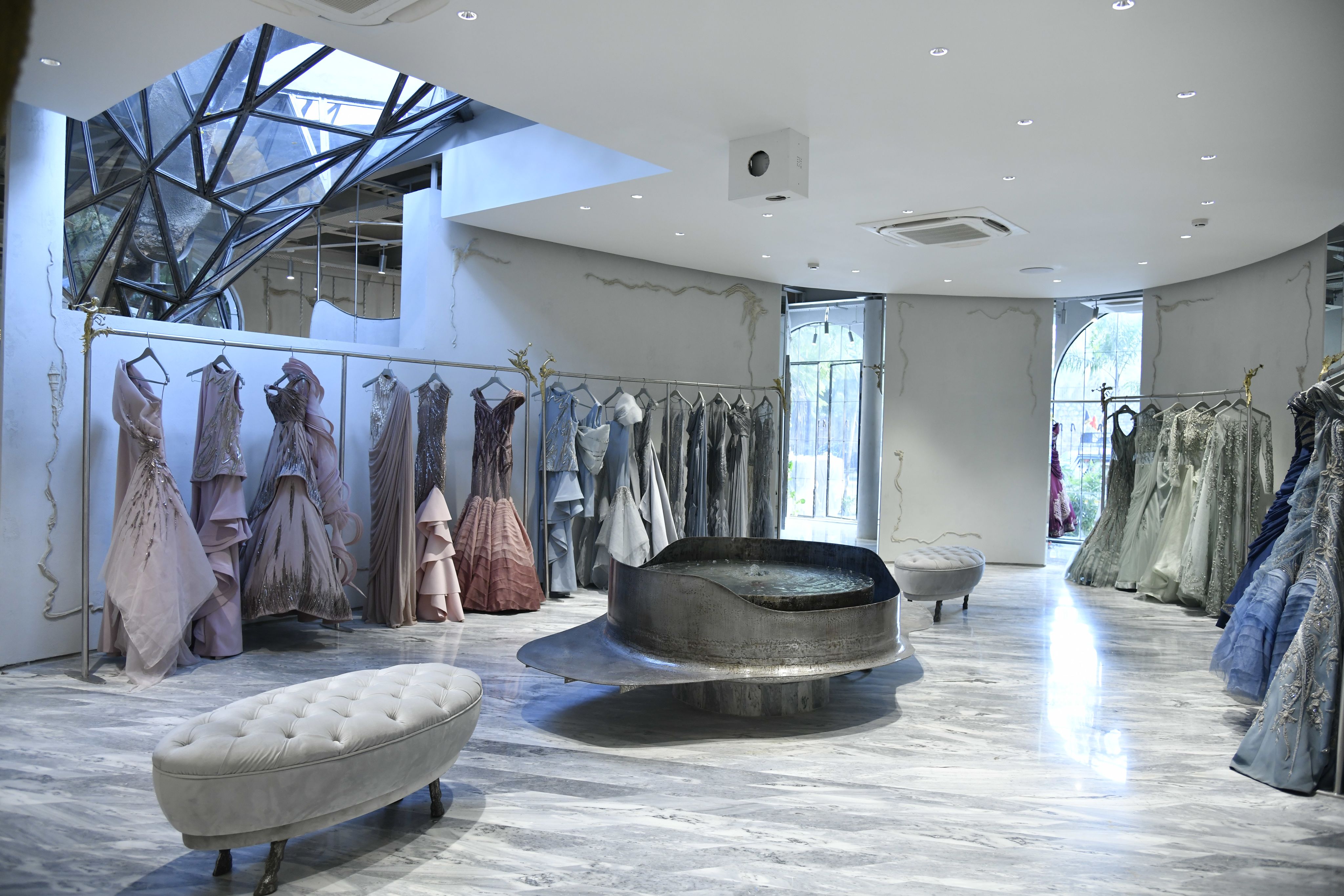
Gaurav Gupta's boutique in Mehrauli, New Delhi
Gaurav Gupta's boutique in Mehrauli, New Delhi
Gupta has long been a red-carpet favourite, dressing Sharon Stone, Priyanka Chopra, Aishwarya Rai, Iman Vellani (the first south Asian Ms Marvel comic heroine) and music industry stars Mary J Blige, Megan Thee Stallion, Cardi B and recent Grammy award winner, Lizzo.
They have all embraced his billowing, sculpted silhouettes, which they wear for the red carpet, music videos and concert posters. “I love people like Lizzo, who are cool musicians that stand for something and are on the edge of culture. I believe we have to move and evolve with the times,” Gupta adds of fashion’s diversity issues.
Watching Cardi B wearing his showstopper wave dress at the Grammys last month felt fantastic, he says. “It was exhilarating and actually really heart-warming to see how one dress can be on every media channel in the world. It was a magical moment.”
Agents of change
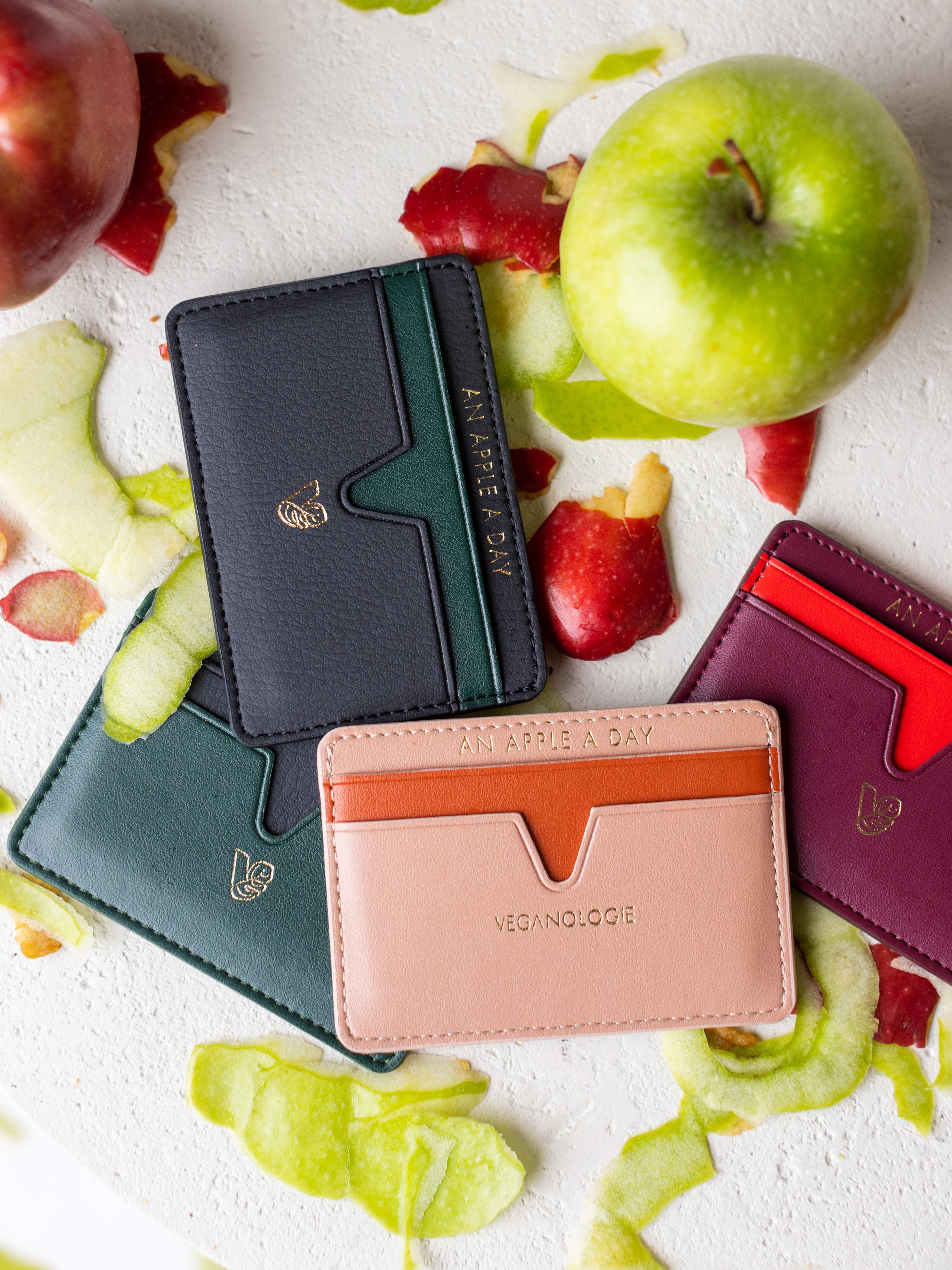
Veganologie makes card holders out of apple leather. Photo: Veganologie
Veganologie makes card holders out of apple leather. Photo: Veganologie
Sarah Maisey finds out how fashion brands are embracing the three pillars of sustainability
Since the term was coined more than 35 years ago, in the Brundtland report of 1987, the “three pillars of sustainability” have been endlessly debated.
Sustainability exists at the point where social equality, economic viability and environmental protection intersect. However, in the decades since the report was released, the state of the environment has deteriorated dramatically across the globe. One contributor to this decline is the fashion industry, where the rise of mass-produced fast fashion has resulted in an explosion of factories and supply chains, creating a complex worldwide web.
Clothes made in Vietnam, from cotton grown in India, are destined for Europe, while shoes that end up in America are made in China, out of leather from Brazil. Discarded clothes from the West – America alone dumps 11.3 billion tonnes of clothing a year – now swamp markets in Kenya. While the fashion industry may trade on the promise of exquisite clothes, it is also responsible for appalling waste, pollution and human exploitation.
With the industry worth $1.5 trillion annually and employing more than 430 million people, it is in everyone’s interests to ensure that fashion embraces a cleaner, more transparent future, where the murky supply chains that allow sweat shops, child labour and unchecked pollution are revitalised into stable industries, offering opportunities and financial independence to those who need it most.
But this is no small task – just freeing the rivers and waterways of chemicals used in the apparel industry will require that about 8,000 different compounds are examined, regulated and phased out, to ensure toxic pesticides, chromium, formaldehyde and cyanide no longer poison water, animals and people.
Resolving these issues around sustainability will take years, if not decades, as companies struggle to understand each step of the labyrinth-like process. In the meantime, consumer attitudes must shift too, away from demanding a dress that costs less than a cup of coffee, towards a slower, more mindful mentality.
Helping to affect this change is a small but growing number of companies that have each chosen to make sustainability and accountability part of their DNA, and who are willing and able to tackle this challenge head on. Through them, change is afoot.
Social equality
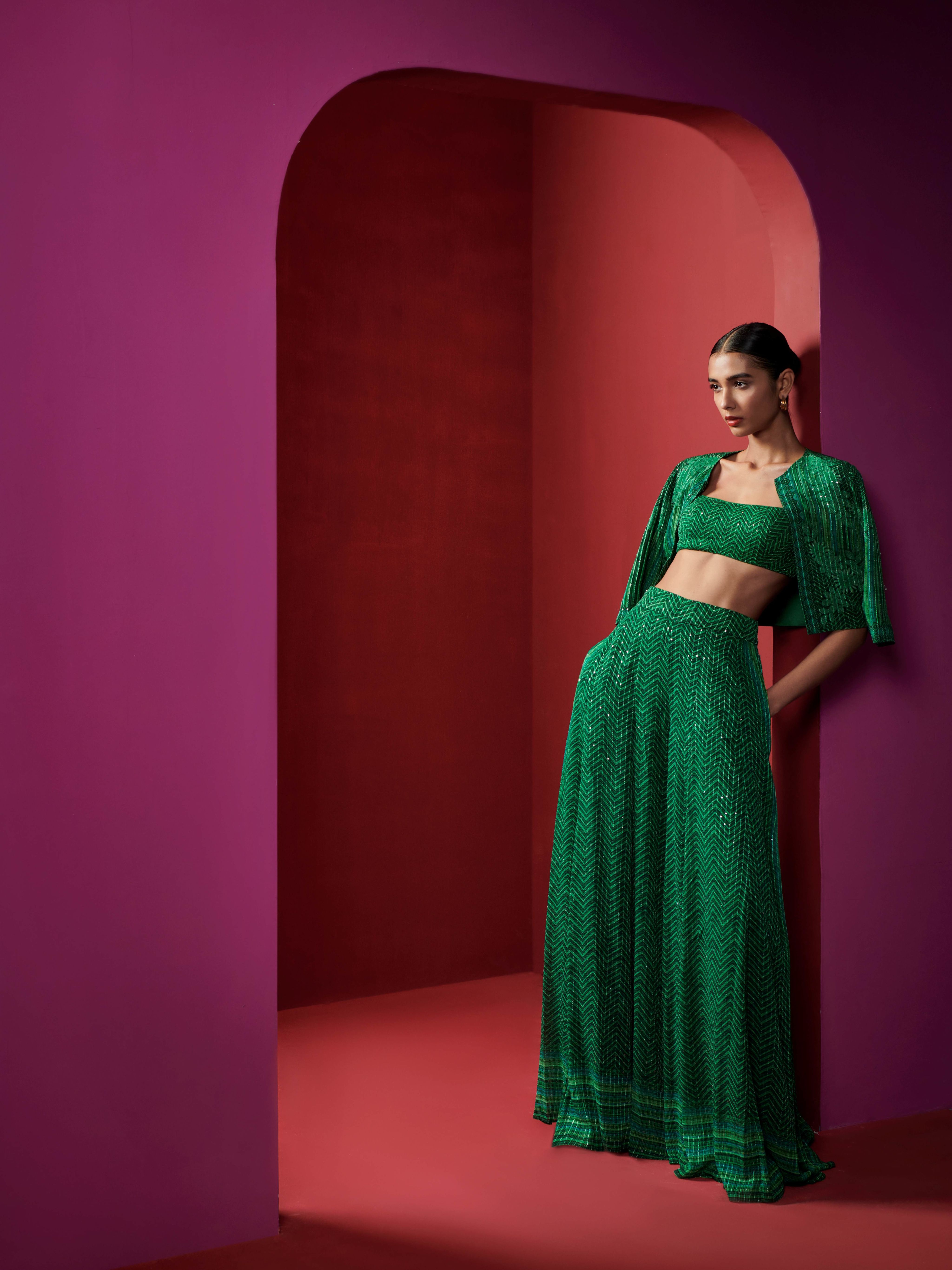
A creation by Indian fashion designer Anita Dongre. Photo: Anita Dongre
A creation by Indian fashion designer Anita Dongre. Photo: Anita Dongre
Indian fashion designer Anita Dongre has been celebrating the unique handwork of her homeland for years, with designs covered in the intricate embroideries of northern India.
As she prepares to open her first boutique in the UAE, she remains committed to supporting her country’s artisans. “I have always be drawn to Indian craft,” she says. “I work with women artisans, and started about seven years ago.
“What excites me is where you can use fashion for good. Today, I can sit in my office in Mumbai and design a piece that allows a rural woman, 400 kilometres away from the nearest city in Gujarat, to be sitting in her home doing this beautiful embroidery, or weaving. For me to provide employment for this woman, that is the most enriching part of my job.
“I firmly believe that India’s rise will come from its female workforce. These women artisans learn the art of embroidery to sew clothes for their daughters’ dowries. Today these skills can provide an income and make her an independent women. When I go to the villages, I hear the stories of how this changes their lives. Men look at them with more respect because they are earning their own income. And this is the same story everywhere, whether it’s a woman in a village in Gujarat or in New York. All we want is to be economically independent.”
Known for her lavish occasion and bridal wear, Dongre’s pieces are largely created to be seasonless. She wants her designs to linger in a woman’s wardrobe for years and to be passed down.
“These are very limited-edition pieces, made in small batches, and I always try to do silhouettes and styles that will be with my clients for a long time, as the number of women practicing this craft is slowly dwindling.

Dongre is known for her lavish occasion and bridal wear. Photo: Anita Dongre
Dongre is known for her lavish occasion and bridal wear. Photo: Anita Dongre
“Their kids take up jobs in computing in cites. So today, the challenge is to find these women employment, but I think the challenge in 20 years will be how to ensure the next generation keeps practicing the craft. I want people to buy my pieces and hold on to them, because who knows if they will be able to get this in the next 20 or 25 years.”
Dongre is also keen for her workers feel invested in the final product. “If you go into the villages, these women take so much pride in knowing they are designing for a major fashion house, and that their work is being sold all over the world. In fact, when we opened in New York, we took three of our artisans to the store launch.
“They also walked for one of my fashion shows in Bombay – they got a standing ovation, by the way. Not my designs, the women.”
Environmental sustainability
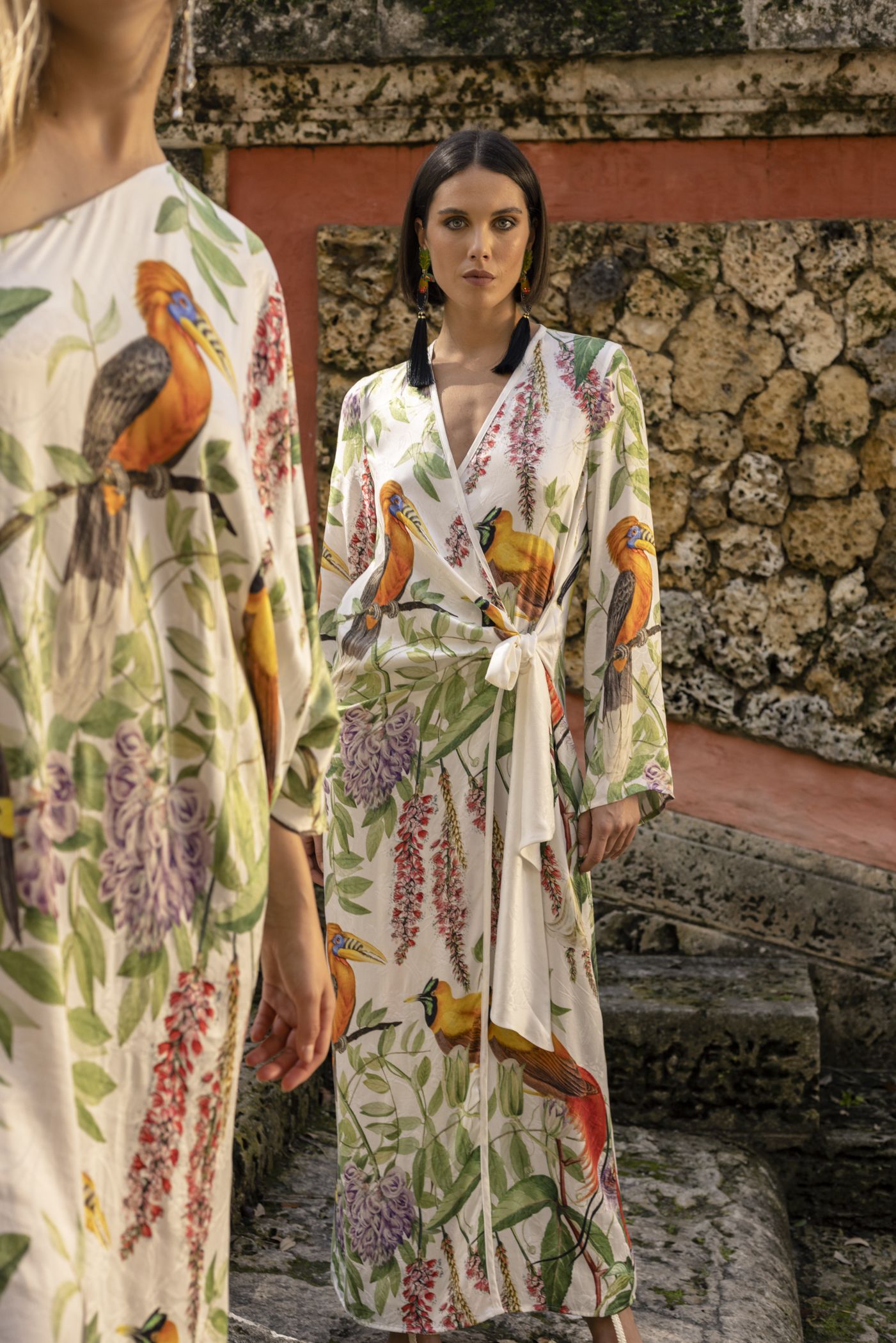
Niluu's designs are crafted from vegan silk. Photo: Niluu
Niluu's designs are crafted from vegan silk. Photo: Niluu
While silk may be soft and lustrous, it comes with a dark secret.
The long, silken threads so coveted by the fashion industry come from the silk worm, which spins a cocoon to protect itself as it metamorphoses into the silk moth, Bombyx mandarina. Held together by a gummy substance called sericin, this must be removed before the cocoon can be unwound, so the cocoon – and the worm inside – are thrown into boiling water. About 5,500 cocoons are needed to make one kilo of thread, while a yard of silk, about the size of a scarf, uses up to 3,000 cocoons.
In contrast, a new company called Niluu makes high-end, luxurious kimonos, fluid daywear and eye masks in a heavy silk that is 100 per cent vegan. The brainchild of Nilüfer Bracco, a Turkish designer living in Miami, the company was born after a chance introduction to a vegan silk supplier at a trade fair.
“I heard the story of the fabric, fell in love with it and just wanted to put everything together – my passion for fashion, for luxury and for animal welfare.”
The material is called cupro, and is made from cotton seeds discarded during the harvest process. When properly processed, extraction of the linter – the cellulose seed cover – results in a long, smooth fibre that looks, feels and behaves just like silk. First discovered a century ago, the process was originally crude and polluting, until Japanese company Asahi Kasei stepped in and cleaned it up via its state-of-the-art, sustainable factory.
“It’s an entirely closed loop facility. Any chemicals are reused and any waste is used to generate electricity, so it’s along the whole chain,” says Bracco.
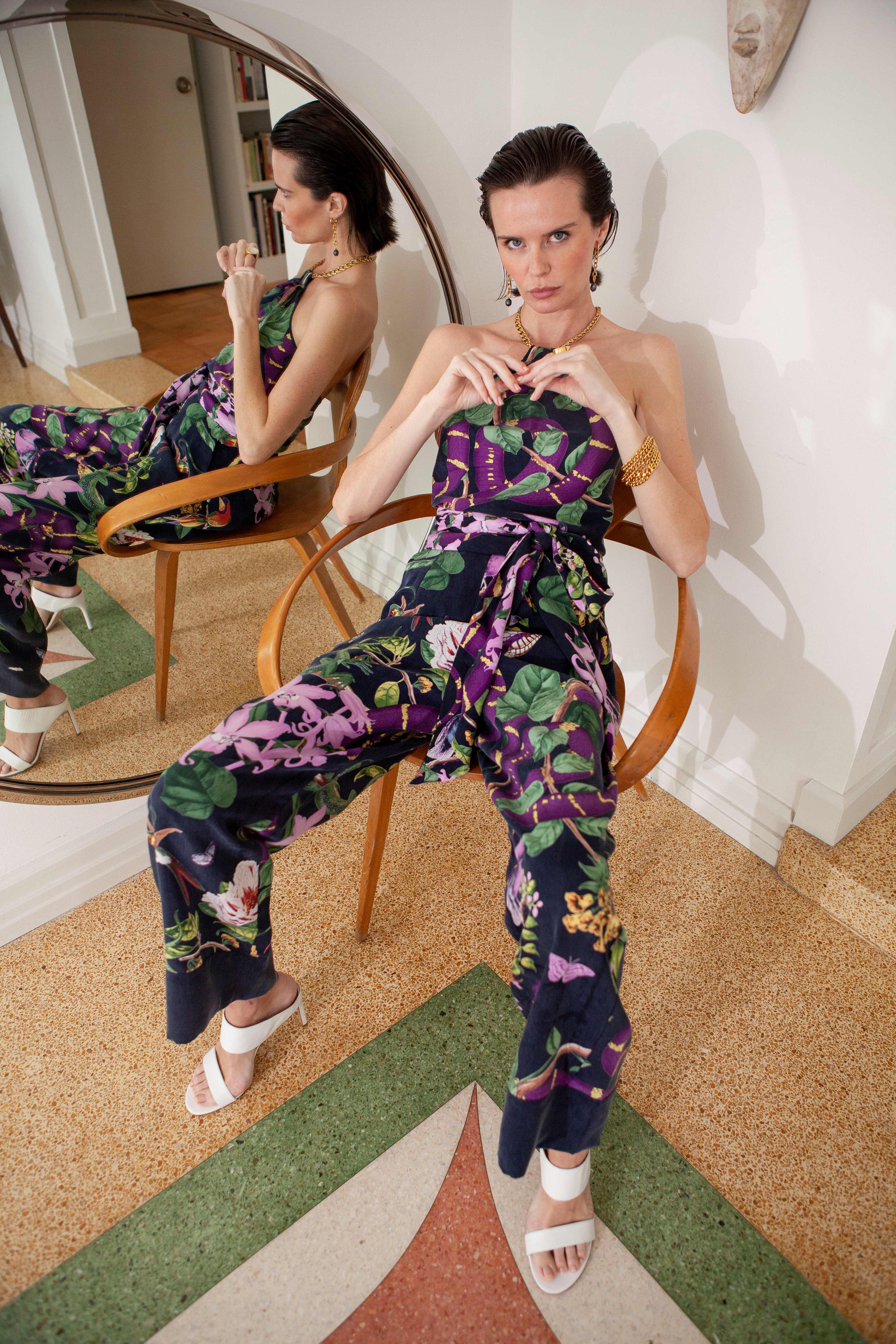
Cupro is made from cotton seeds discarded during the harvest process. Photo: Niluu
Cupro is made from cotton seeds discarded during the harvest process. Photo: Niluu
To transform the cupro cloth into her airy, decadent wraps and clothes, Bracco enlisted Ipeker, a silk specialist factory in Turkey, which has switched from 130 years of traditional silk work to become animal free, and is the first industrial silk producer to be certified vegan.
Using a weighty version of the silk, Bracco’s pieces are rich and enveloping, with a tactile, peachy surface. This is one of the advantages of using cupro, she says. While this quality is possible in real silk, the prohibitive cost of using so much means “no one does it commercially, it’s too expensive”. Instead, Bracco offers her customers something remarkable, for a fraction of the cost. “When we do touch tests, everyone chooses the cupro; it feels much richer,” the designer says.
Recently showcased at a pop up at Galeries Lafayette in Dubai Mall, the appeal of her clothing is simple, Bracco says. “You feel great wearing them and your conscious can feel good about it too.”
In addition, Niluu is a member of the 1% for the Planet initiative by Patagonia, donating 1 per cent of sales to charities and good causes. Since Patagonia started the project in 1985, 3,419 businesses, across 64 countries, have donated more than $270 million.
Economic viability
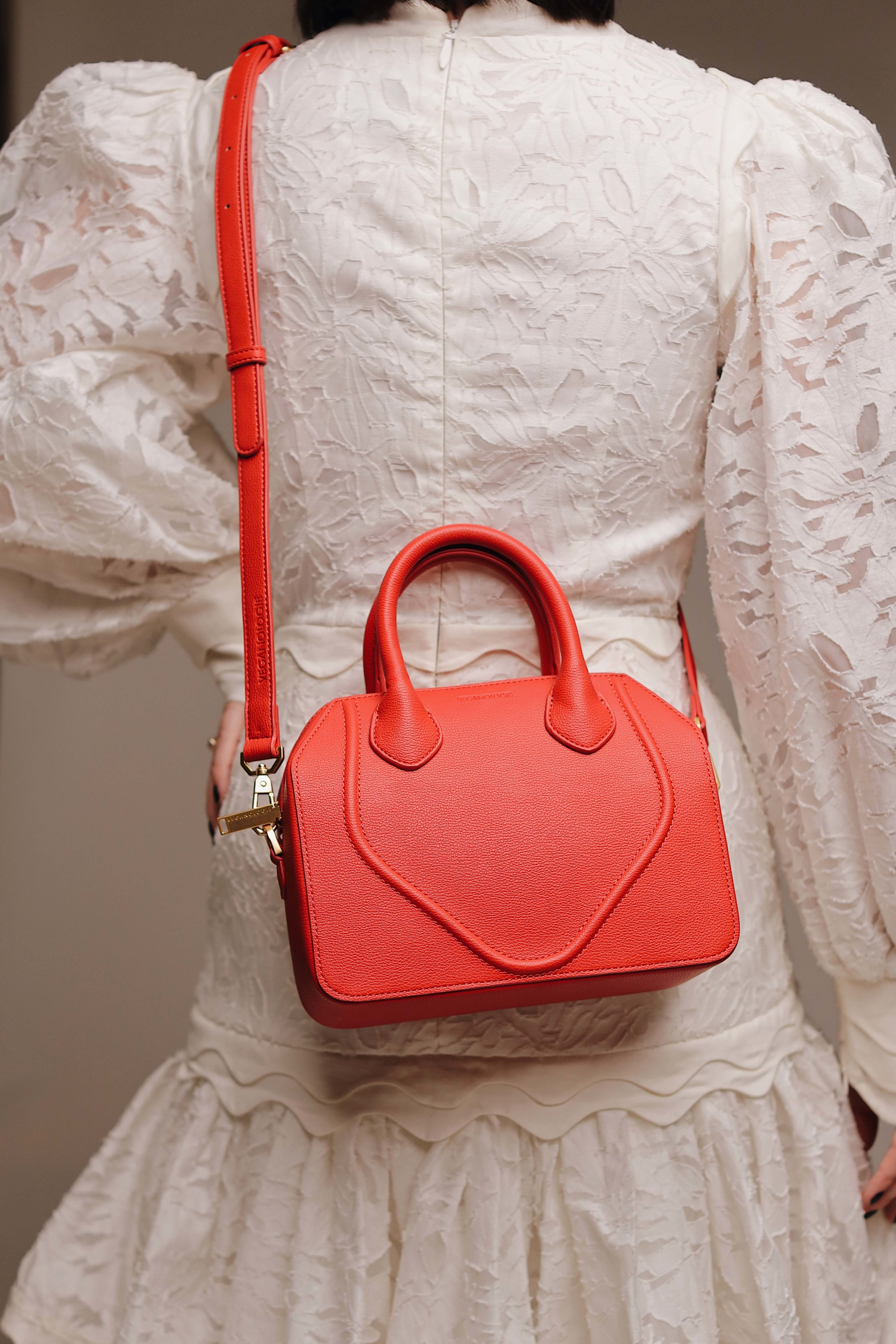
Veganologie creates bags and wallets from PU leather. Photo: Veganologie
Veganologie creates bags and wallets from PU leather. Photo: Veganologie
During lockdown, Angana Maheshwari began searching for a non-leather handbag suitable for her inevitable return to the office.
“There were four points I was looking for – quality, transparency in sustainability, price and style. I was unable to find a single bag that hit all four points, so that’s when I realised there was a gap.”
The offshoot is Veganologie, a brand she launched in January last year, with bags and wallets made from PU leather, derived from plastic bottles reclaimed from the sea. With the plastic cleaned, ground and then pressed into PU leather, each bag uses the equivalent of 11 bottles worth. And with about 5.2 trillion pieces of plastic in the oceans, Veganologie is unlikely to run out of raw materials.
Sold in 100 per cent recycled cardboard packaging, the company is certified vegan by Peta and GRS, the global recycling standard. “We have audited our production facilities to see how sustainable they are, so for example, if there are longer working hours, we have made sure workers are being paid for the extra time. Fashion is an industry where everyone is working overtime, but we try to make sure workers are receiving ethical treatment.”
The collection is compact, featuring three bags, two wallets, a laptop and a weekend bag, in four or five vegan colours. “We are also the first brand in the UAE and GCC to launch apple leather in our collection. It’s something unique for the region, and we started with unisex cards holders for now. Plant-based leathers are becoming more available, but they are still expensive as supply is low and demand is high.”
The company offers a lot of information on its website and packaging, going into detail about how the bags are made. “We are clear and transparent to the consumer, so they can see how everything is done.”
With about 8 million pieces of plastic entering the oceans every day, according to the US’s National Ocean Service, Maheshwari is also passionate about preventing it from ending up there in the first place.
“We have partnered with a local UAE organisation Azraq, and every sale goes towards the planting of mangroves along the UAE coastline. We are trying to do our bit to give back, to protect the coastline and stop plastic from going into the sea.”
Ecological sustainability
An offshoot of environmental sustainability, ecological sustainability promotes a business model that does not harm the environment, but translates into economic growth. One company that thinks it has found a solution is Hempy People, a Dubai-registered brand that promotes, educates and explains the advantages of hemp.
Co-founder Beatrix Henkel explains: “We are a workspace for those who are ready to get onboard and really live sustainability. Not just talk about it, but walk the walk.”
With a doctorate in education, she runs workshops and talks to engage with a wider audience about hemp’s multiple uses. It is, she explains, something of a wonder plant. It grows all year round, quickly, is naturally pest resistant, and absorbs more carbon dioxide than it emits.
“You can have several harvests, and no chemicals are used.” While cotton requires 100 to 150 litres of water to produce enough for only one T-shirt, most of that pumped in via irrigation systems, hemp requires very little. “If it only has rainwater, that is enough. Compared to cotton, it is a no-brainer.”
Additionally, hemp has several uses. “The fibres are so strong, they can last for generations, and you can use every part of the hemp plant, across different industries. Imagine having a circular economy where different industries are supporting each other.”
With more than 2,500 possible applications, hemp can be made into fabric, bio-diesel, hemp concrete and even plastic. It is edible (the seeds and oils are packed with nutrients) and can also be incorporated into cosmetic products.
Although hemp and marijuana are the same plant, the difference lies in the level of the psychoactive component tetrahydrocannabinol, or THC. In hemp, at 0.3 per cent, it is far too low to produce any narcotic effect.
Hempy People has also teamed up with the fashion school Esmod Dubai, gifting students rolls of hemp cloth to use in their collections. “We want to start with those aspiring to be mindful fashion designers, conscious, environmentally friendly and sustainability focused. It might be a small group, but that’s where you start,” Henkel says.
She says that interest in the region is high, as people look for inventive solutions. “I am having conversations with people who are interested in creating shoes, building houses and making decks on ships. It is really mind-blowing how widely you can use it and how accessible hemp is. We are trying to educate people about sustainability – that it is more than just a word, it’s a lifestyle.”
Vital codes
A spotlight on Chanel’s Première Original watch and latest jewellery creations
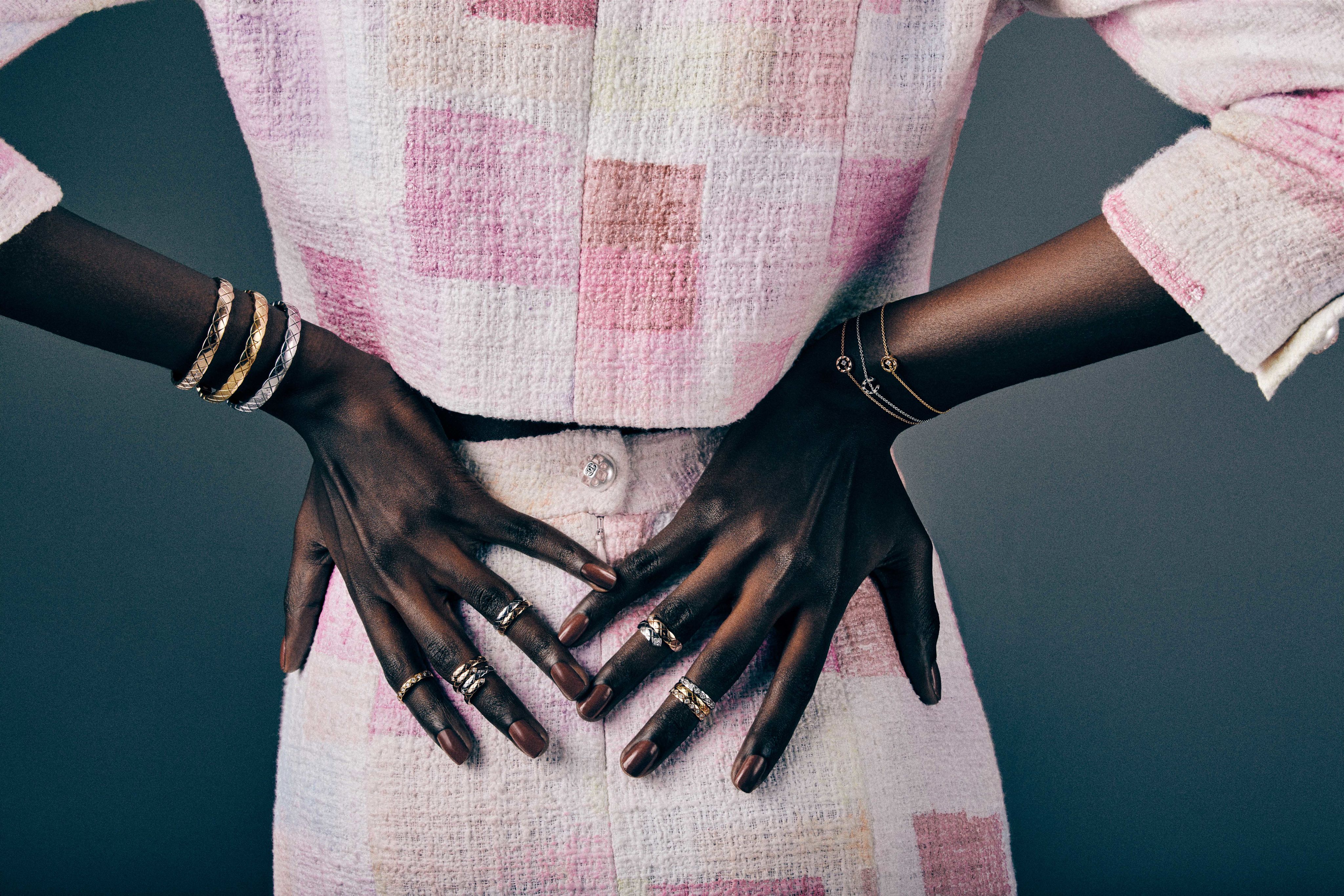
Coco Crush rings, bracelets and bangles in yellow, beige and white gold and diamonds; Coco Crush Toi et Moi ring in yellow and white gold and diamonds. All from Chanel Fine Jewelry
Coco Crush rings, bracelets and bangles in yellow, beige and white gold and diamonds; Coco Crush Toi et Moi ring in yellow and white gold and diamonds. All from Chanel Fine Jewelry
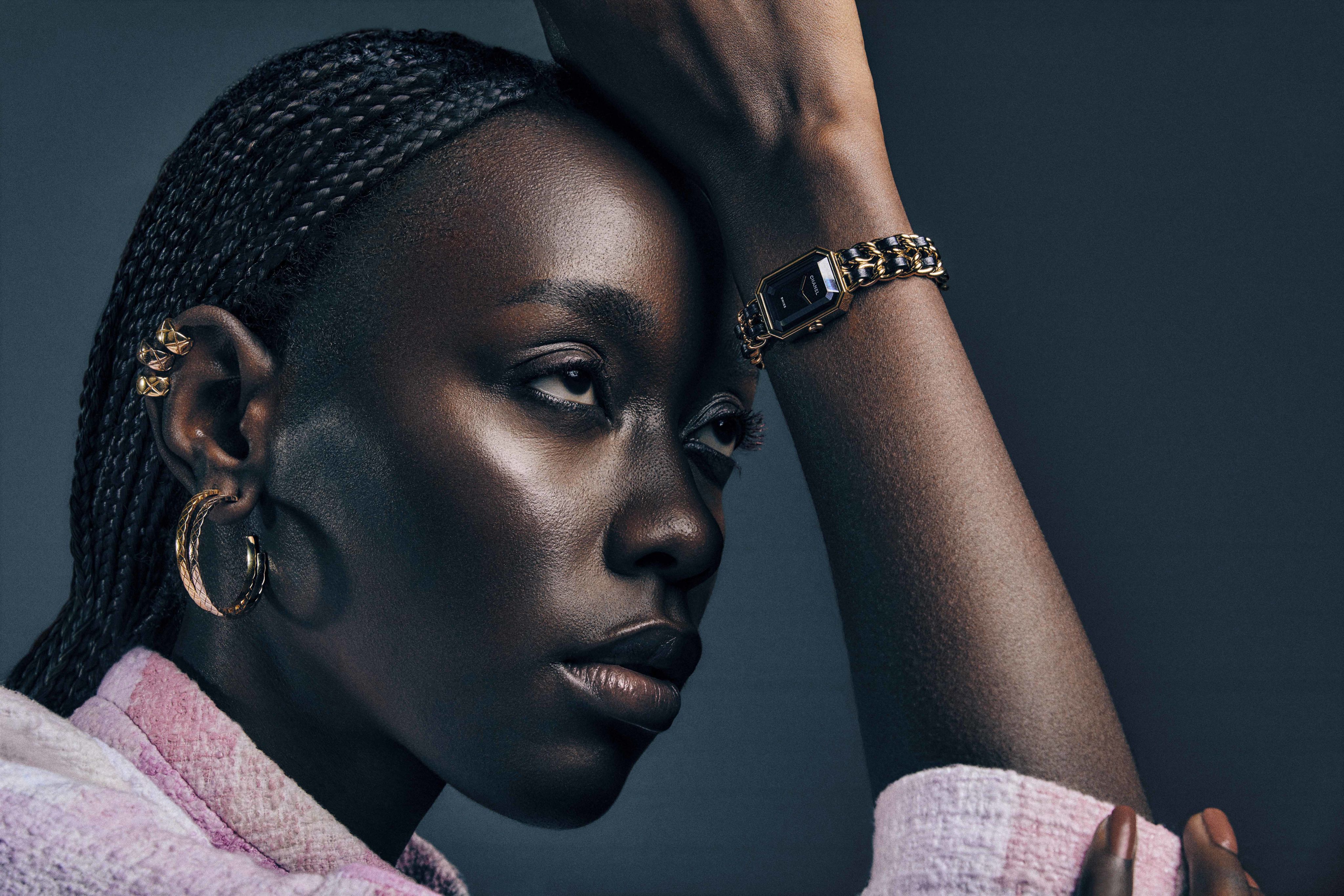
Première Original Edition watch, Chanel Watches. Coco Crush earrings and hoops in yellow, beige and white gold and diamonds, Chanel Fine Jewelry
Première Original Edition watch, Chanel Watches. Coco Crush earrings and hoops in yellow, beige and white gold and diamonds, Chanel Fine Jewelry
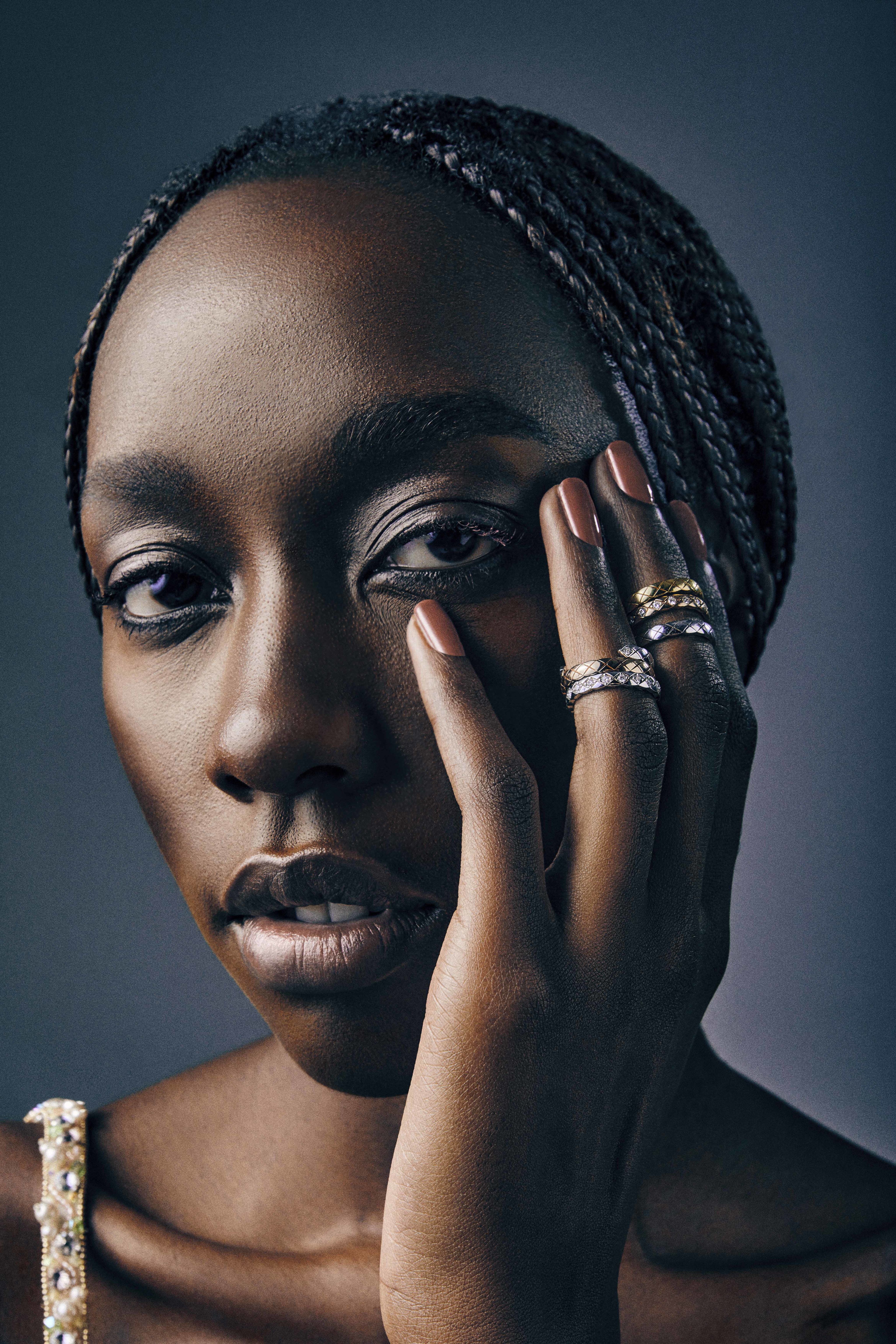
Coco Crush rings in yellow, beige and white gold and diamonds; Coco Crush Toi et Moi ring in beige and white gold and diamonds. All from Chanel Fine Jewelry
Coco Crush rings in yellow, beige and white gold and diamonds; Coco Crush Toi et Moi ring in beige and white gold and diamonds. All from Chanel Fine Jewelry
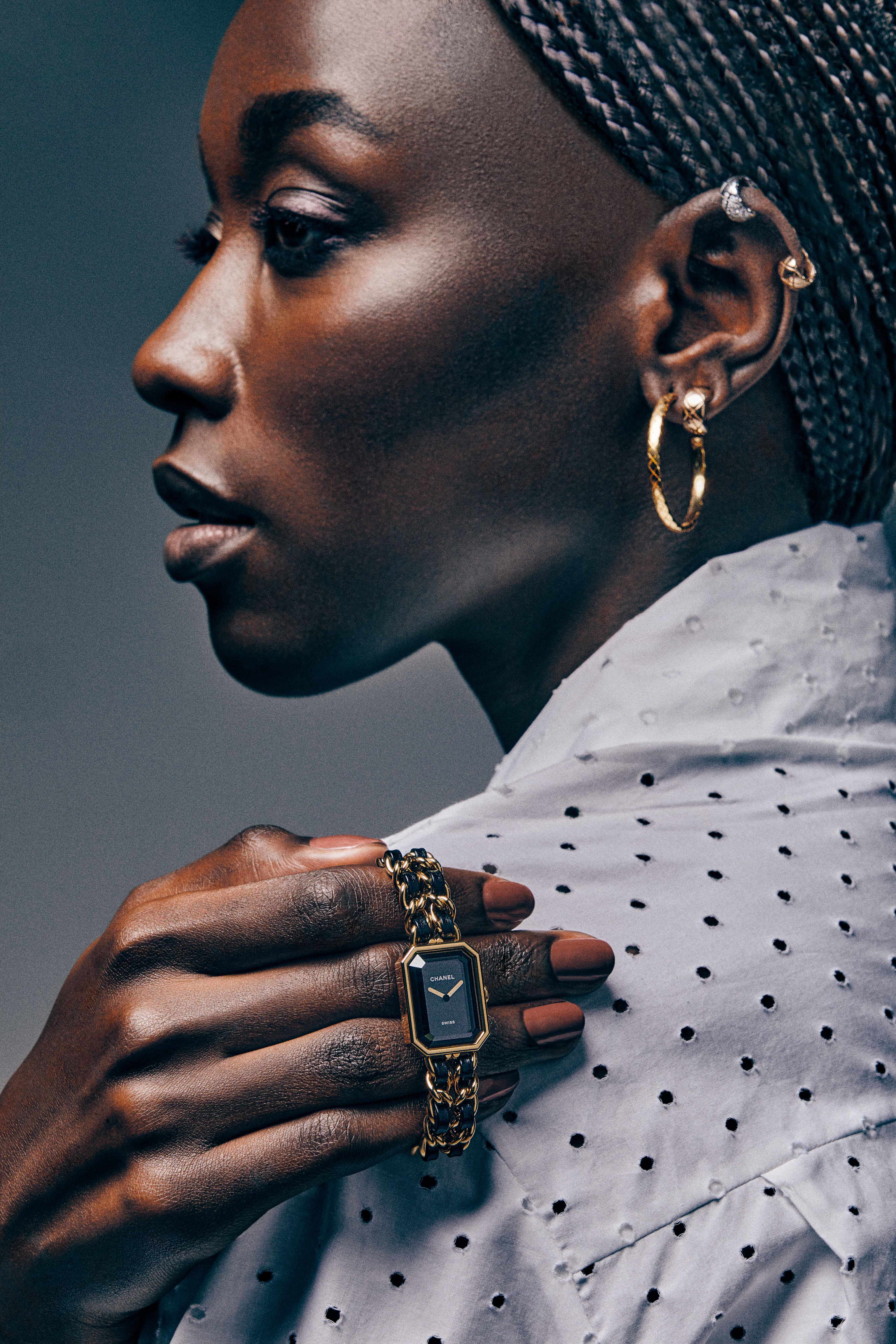
Première Original Edition watch, Chanel Watches; Coco Crush hoops and earrings in yellow gold, Chanel Fine Jewelry
Première Original Edition watch, Chanel Watches; Coco Crush hoops and earrings in yellow gold, Chanel Fine Jewelry
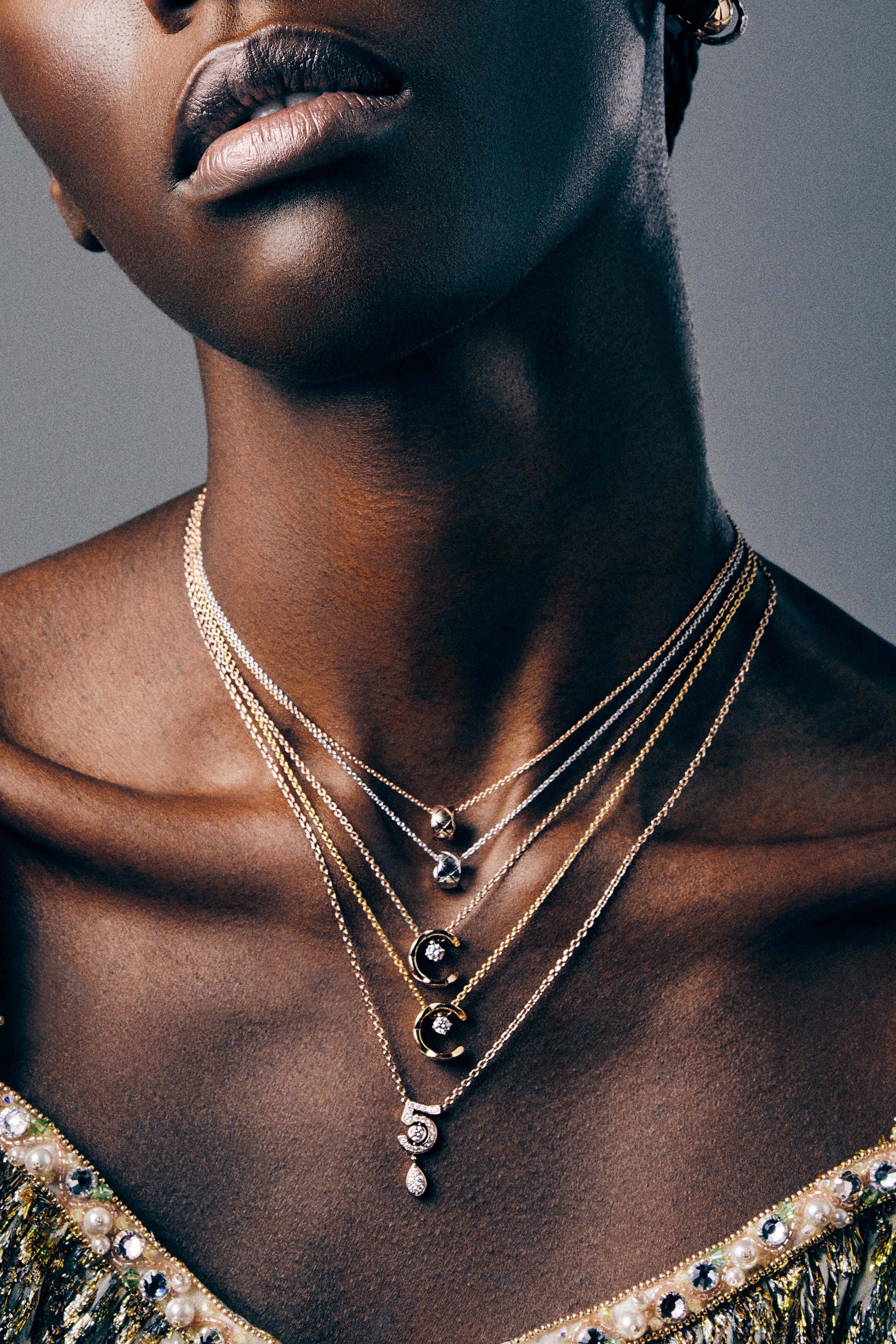
Coco Crush necklaces and earrings in yellow, beige and white gold and diamonds; Eternal N5 necklace in beige gold and diamonds. All from Chanel Fine Jewelry
Coco Crush necklaces and earrings in yellow, beige and white gold and diamonds; Eternal N5 necklace in beige gold and diamonds. All from Chanel Fine Jewelry
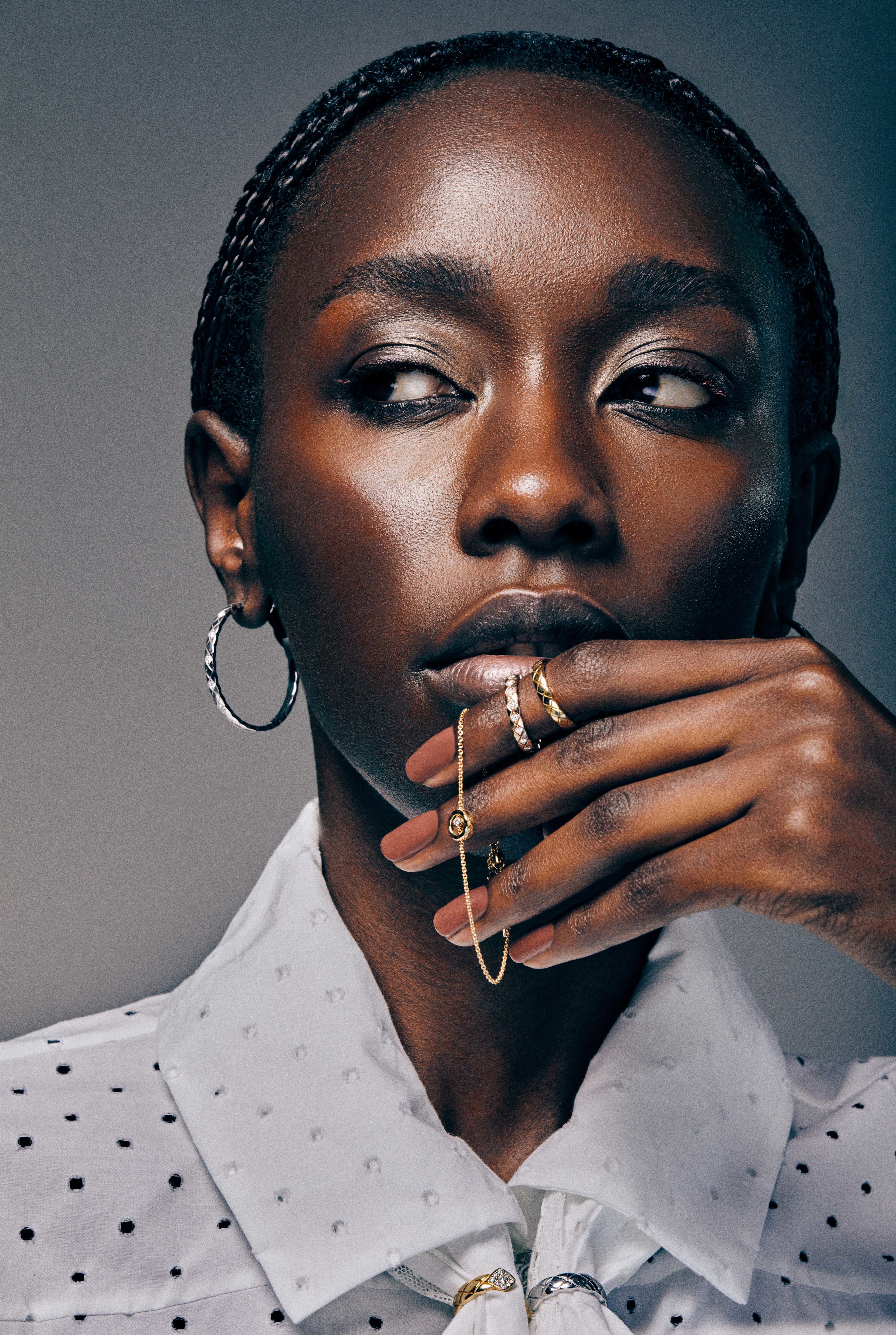
Coco Crush bracelet, rings and hoops in yellow, beige and white gold and diamonds, Chanel Fine Jewelry
Coco Crush bracelet, rings and hoops in yellow, beige and white gold and diamonds, Chanel Fine Jewelry
Make-up, for the face, No 1 Chanel Revitalizing foundation in BR152; for the eyes, Ombre Rouge Noir N08 and Les 4 Rouges Yeaux et Joues in 958 Caratere; for the lips, Rouge Allure N194; for the nails, Vernis Harmonie N937, all from Chanel Beauty
All clothing from the spring/summer 2023 ready-to-wear collection by Chanel Fashion
Fashion director: Sarah Maisey
Photographer: Nicoleta Buru at MMG Artists
Model: Mitchelle at Signature Element
Make-up artist: Najette Ezzaqui
Photographer's assistant: Michele Andrenucci
A symbol of hope
Filled with treasures, this boutique escape in the Lebanese mountains is a tribute to the country’s artisans, writes Hayley Skirka
“As a child, I remember sitting on the steps facing the entrance of the house. I was wearing a puffed sleeved polka dot dress with a matching hair bobble and eagerly awaiting the arrival of my newborn sister from the hospital,” says Carla Baz, designer and founder of Lebanon’s Indira guest house.
“A year and a half later, I sat on those same steps, this time next to my sister, as we waited for our little brother to arrive home. It has always been the ‘nest’ and the origin of our family memories. Today, when I walk into the house, I still sense those memories, mixed with a timeless, modern ambiance. I feel like we honoured the soul of the house perfectly.”
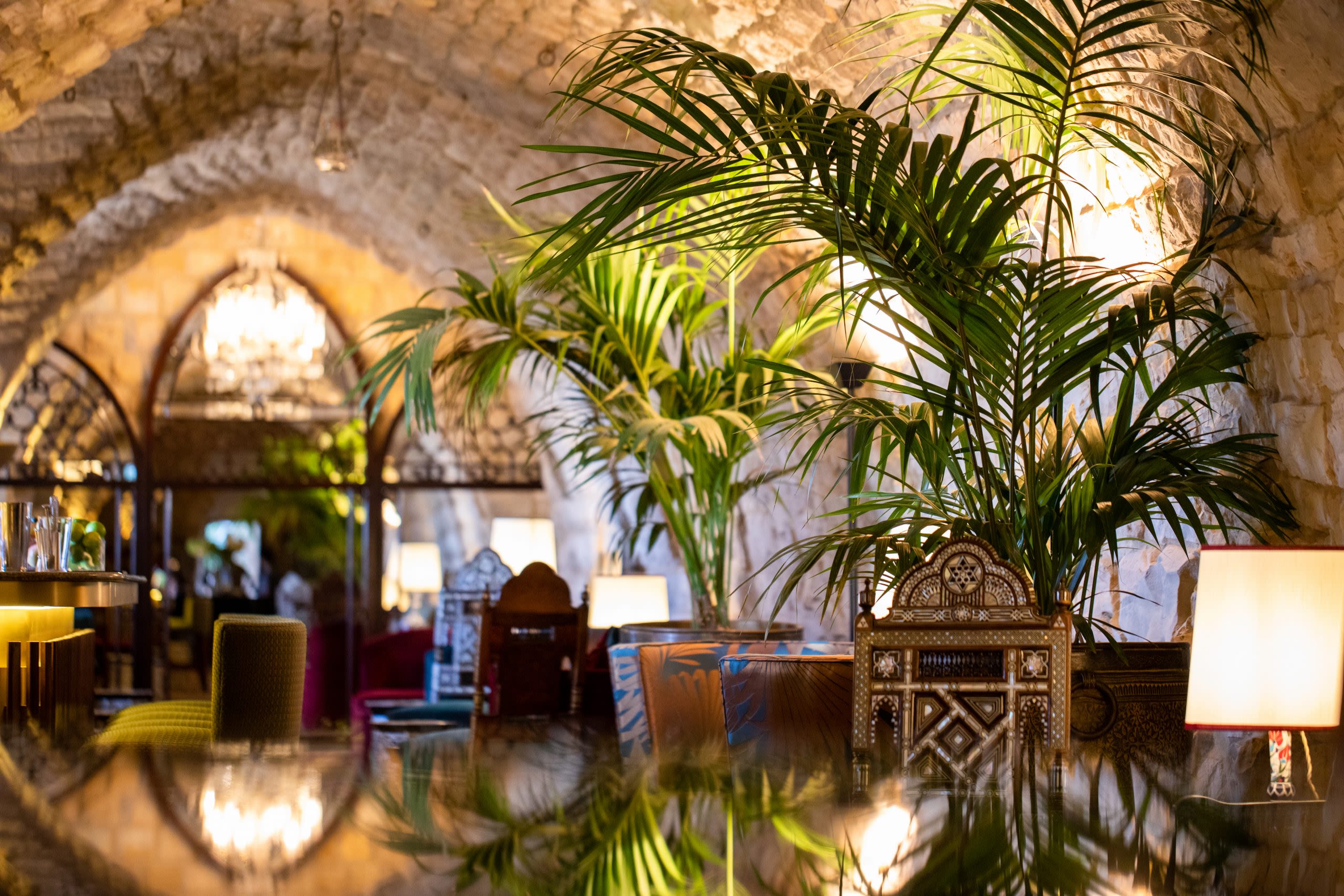
The property's piano bar
The property's piano bar
Nestled in the village of Kfour, surrounded by mountains, the one-time private residence reopened as a boutique guest house in October. “As a designer – and daughter of passionate collectors – it has always been my dream to preserve this house that means so much to me, and transform it into a place that can be enjoyed by many, ensuring its perpetuity.”
With nine suites, a slate-lined pool, spa and views over the Mediterranean, Indira (which means splendid in Sanskrit) offers a delightful rural getaway, paired with the warmth of a family home. “It’s been transformed into a place for guests, so we’ve gotten rid of elements like the toy room where we used to play, but the common areas and most of the furniture were the same as what’s there today,” Baz tells me when we meet over coffee in Dubai, where she lives.
A key focus for Indira’s transformation was ensuring that its unique features were preserved, including the space that convinced her parents to purchase the house in the 1980s.
“There is an unusually beautiful vaulted arched cave that some 250 years ago was the stables,” says the designer. “When my parents saw the house, that space was one of the main reasons they bought it – they envisioned it filled with warm lighting and long tables, and they transformed it into a place to host dinner parties.”
Today, guests staying at Indira have the chance to enjoy the former vaulted stables, which have been remodernised into a longitudinal bar.
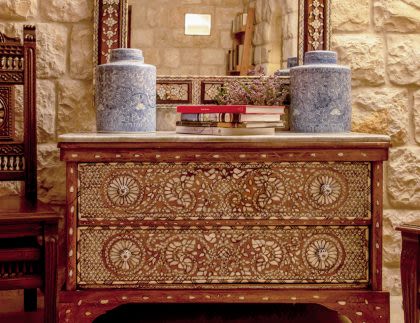
The guest house is filled with treasures gathered during the family's travels
The guest house is filled with treasures gathered during the family's travels
Despite its small size, Indira has two in-house chefs – one local and the other from Thailand – who collaborate to offer an original menu fusing modern Levantine and Thai cuisine. But perhaps the most delectable element of a stay here – more than the Buddha-lined swimming pool or clifftop views – is the extensive collection of artefacts. This tapestry of treasures was lovingly gathered from across Asia by Baz’s parents.
“My mother and father had this collection of items that they acquired on their travels and I wanted to share it with other people. My father in particular fell in love with Asian civilisations and my parents visited the continent over many decades. Everywhere we went, they would make a point to go to galleries and buy something special; they really cultivated a passion,” she explains.
Today, the collection of original oriental art spans the Middle East to the Far East. There are more than 40 portraits, 100 framed Quran pages, ancient bibles, Bedouin silver, jewellery, coins, antique weapons, statues and more, and it’s something Baz wanted as a central focus for Indira, as a way to add to its character and solidify its standing as a meeting place for people from all walks of life.
To do so, she turned to Carole Tarazi Nasnas and Camille Tarazi of Maison Tarazi – Beiruti restoration and handicraft specialists for more 160 years. With expertise in customised oriental art and decoration, the trio worked on a shared vision of preserving the house’s original character, instilling this treasure trove of artworks and introducing a modern spirit.
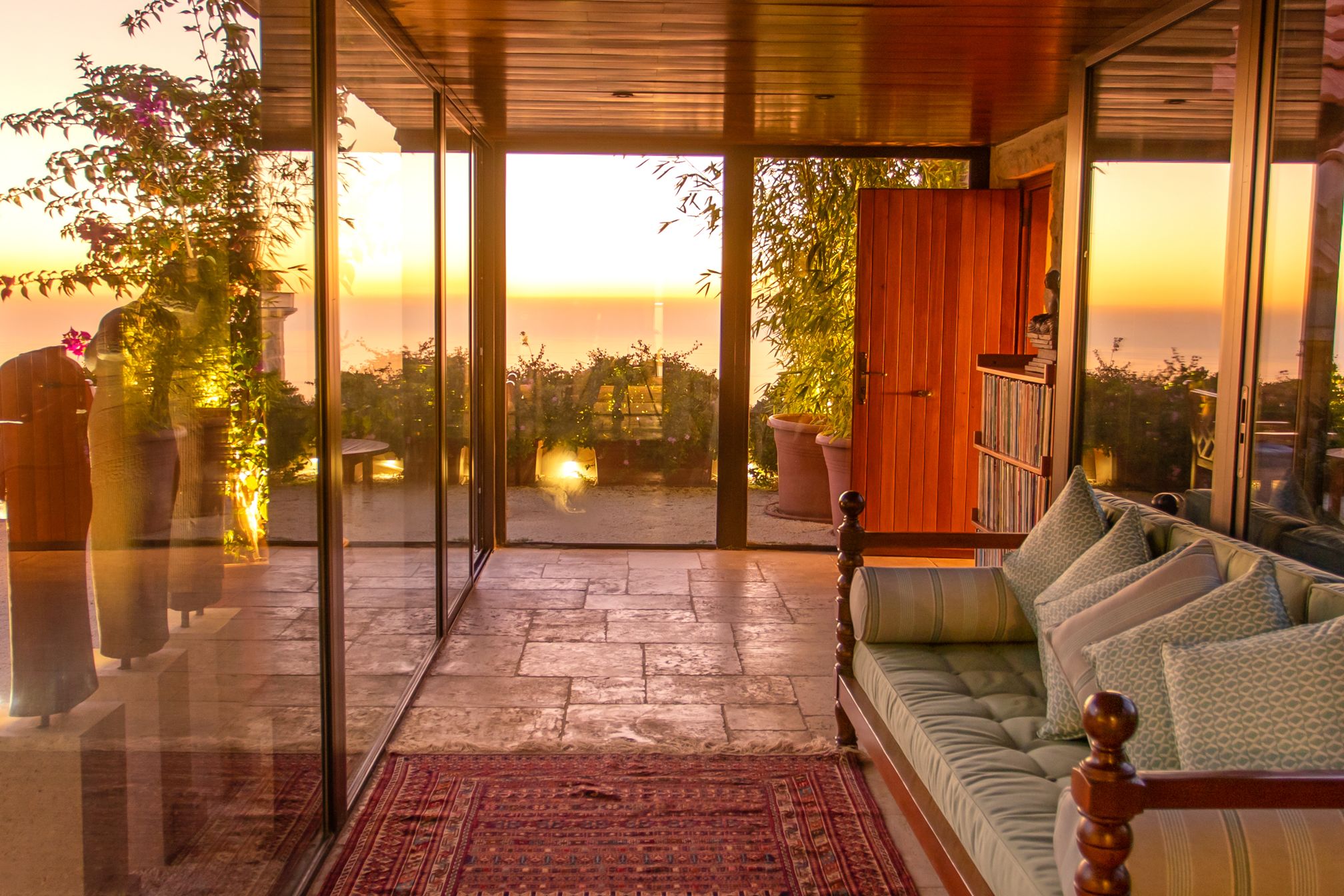
The Pasha suite overlooks the pool terrace
The Pasha suite overlooks the pool terrace
The project took about a year from initial brainstorming to its opening in October, but the majority of the transformation took place over six weeks of intensive on-the-ground work.
What makes such a rapid turnaround even more impressive is that it happened at a time when Lebanon is suffering through an intense crisis. Because of this, and the tight turnaround time, the trio committed to using only locally available resources – a decision that stands testament to the richness of the craftsmanship available in the country.
“We worked with local partners to source as much as we could in the region. And it just goes to show that this heritage Lebanon has is so beautiful,” says Baz.
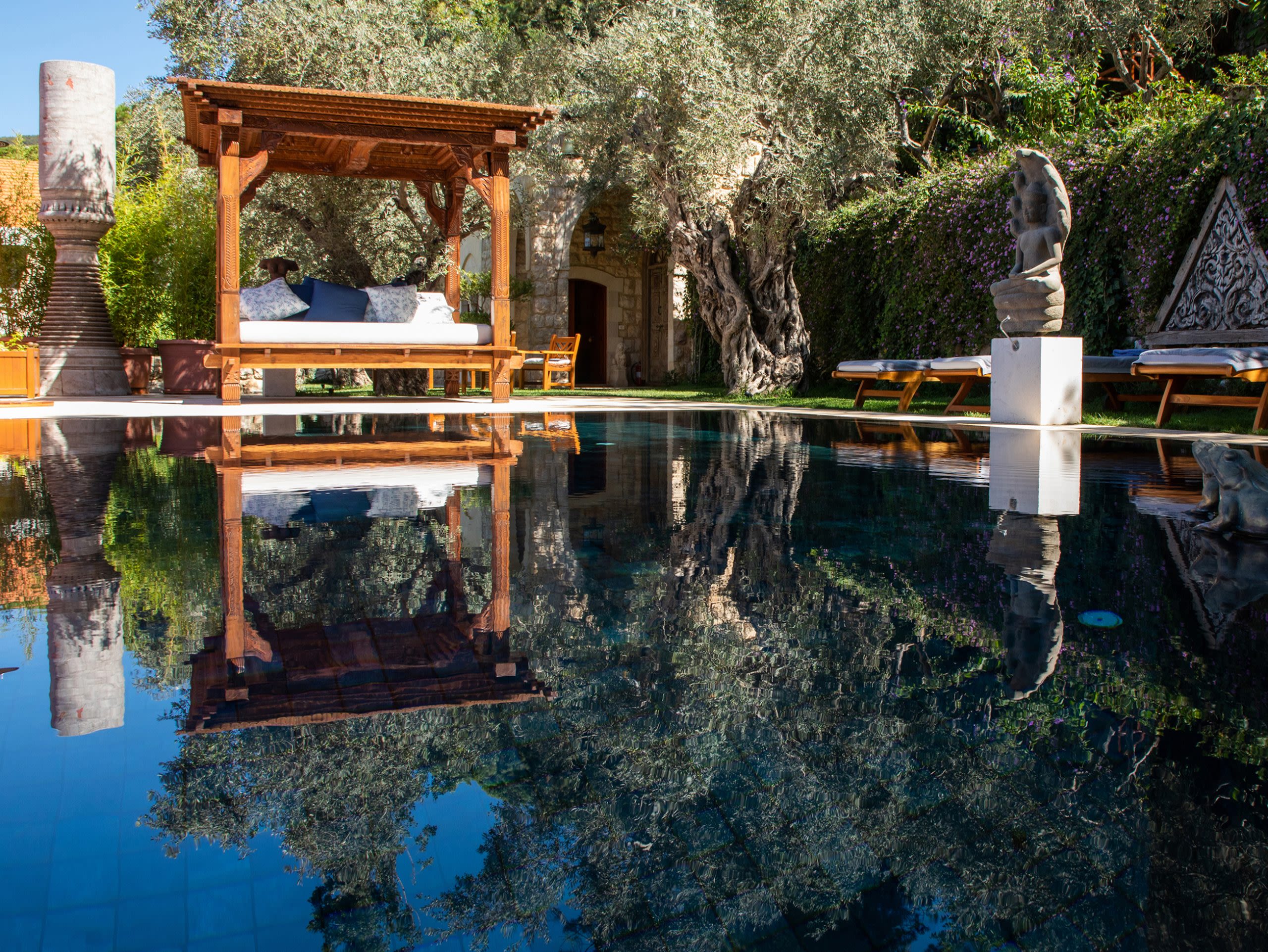
Day beds, sun loungers and age-old trees surround the swimming pool
Day beds, sun loungers and age-old trees surround the swimming pool
Awaida Construction and Engineering was one partner that came with proven restoration expertise, having been involved in parts of Beirut’s rebuilding following the city’s port explosion in August 2020. “They’re specialists in types of craft that don’t exist anymore,” explains Baz.
Warde fabrics, a materials importer in Lebanon for more than 100 years, helped the design team source a variety of beautiful fabrics, all available within the project’s turnaround time.
And, keeping it in the family, Baz’s aunt in Beirut recruited a team of seamstresses, each of whom had previously worked for various Lebanese couturiers. The women toiled away in her kitchen to repurpose old and leftover fabrics from the guest house, transforming them into a collection of sustainable abayas that are now offered to guests to wear when checking in.
This sustainable focus prevails at Indira, where the creation of the guest house is also a boost for the rural community in which it sits. Travellers book a stay and come to explore the beautiful mountain pastures – Kfour is known for its walking trails, hiking routes and colourful landscapes. At the same time, they explore the region and bring new business, whether by purchasing sandwiches from the nearby family-run Abou Tony restaurant or paying a visit to neighbouring Beit Trad, Indira’s long-running guest house neighbour.
The hideaway fits into a growing network of guest houses opening in Lebanon to offer a new form of ecotourism, allowing guests to reconnect with the country and come to understand it better.
“There are guest houses all across Lebanon, each with their own individual character and offering that embodies the specific atmosphere, village and location where they’re based.
“It’s such a small country and there are so many contrasts, so many differences and so many influences. It’s so rich in that sense. It’s so intricate, it has to be protected,” Baz says.

Guests can enjoy a range of spa treatments
Guests can enjoy a range of spa treatments
But protection has been in short supply in this country of late. From the Covid-19 pandemic and its implications to the port explosion and the country’s ongoing food and fuel crisis, the situation is “very, very concerning, it’s gut-wrenching”, says Baz, sadly.
“The Lebanese people are – I don’t like to use the word resilient because I feel like it has backfired recently, it’s been put to the test a bit too much, but it’s their resource – they simply love to live.”
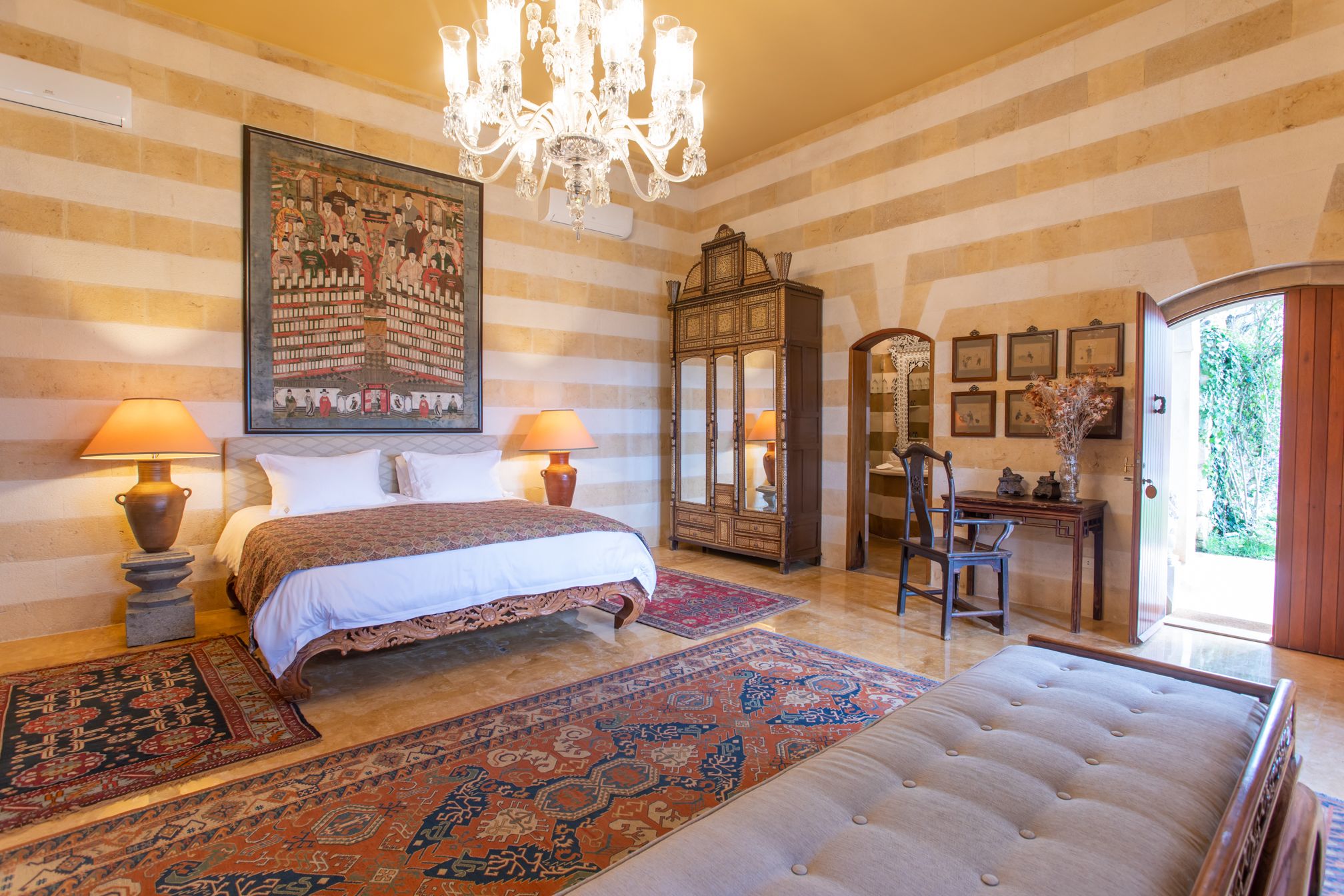
A master suite
A master suite
Perhaps it’s that Lebanese resilience, or simply the childhood bonds that tie her to Indira, that propel Baz’s undeniable enthusiasm for the project. Either way, the result is a small helping hand to a country striving to get back on its feet.
“Lebanon is still a country that relies a lot on tourism. It’s critical that we keep generating jobs and opportunities, investing money, time and energy,” the designer says.
“When I look at the staff at Indira, most are young, they’re enrolled at university and are doing the job to pay for their studies. They are vibrant, intelligent and ambitious, and spending time with them fills me with hope,” she adds.
“Perhaps the most memorable aspect of this whole project has been the human experience. Through the inception, the preparation, the production and now even the operations, it fills me with hope, and is a reminder that Lebanon is a country that’s filled with so much history – yes, its complex, but it is home to so much beauty. And that’s something that needs to be shared with the world”.
Image captions
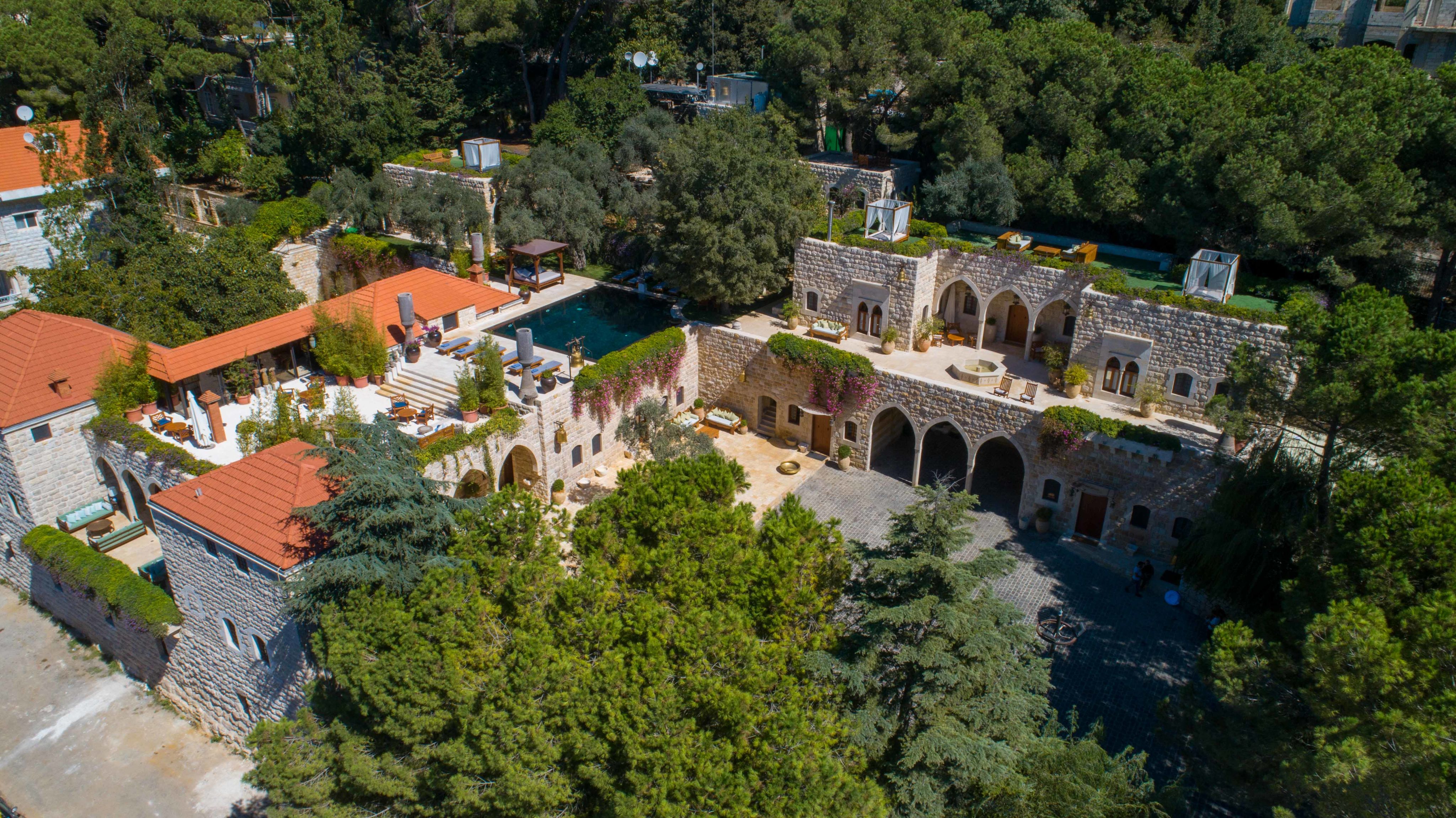 Image 1
Image 1An aerial view of Indira in Kfour, surrounded by greenery. Photos: Indira Guest House

An aerial view of Indira in Kfour, surrounded by greenery. Photos: Indira Guest House
An aerial view of Indira in Kfour, surrounded by greenery. Photos: Indira Guest House
Transforming grief into beauty
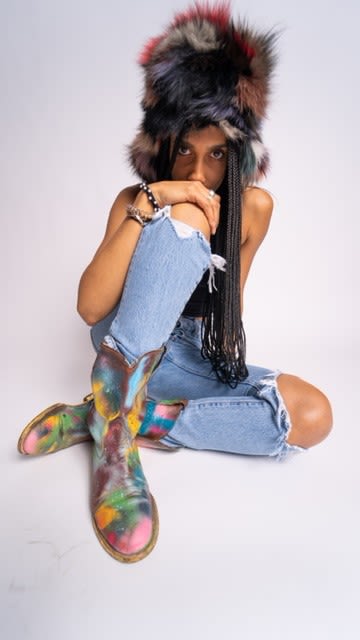
Lovchld designer Laytoya Shaw. Photo: Lovchld
Lovchld designer Laytoya Shaw. Photo: Lovchld
Designer Latoya Shaw began painting shoes as a form of therapy, and has now seen her designs on the big screen, writes Sophie Prideaux
Art, in one form or another, has always been at the core of Latoya Shaw’s life.
Born and raised in Sydney, Australia, she moved to Los Angeles in the US at the age of 18 to pursue a career in acting. But after experiencing deep personal tragedy with the death of a former partner, her art took on a new direction.
“We had shoes in common,” says Shaw. “He was an artist and he used to scrap paint up his shoes. When I went to say my final goodbyes at his home, I saw his shoes hanging by his window and it just hit me. I felt so drawn to them.”
Grieving but inspired, she turned to painting shoes as an outlet, a practice that quickly became a form of therapy and also helped her during the pandemic. “I just started painting and spent all of quarantine painting,” she says. “It gave me a sense of peace in a really chaotic stage of my life.”
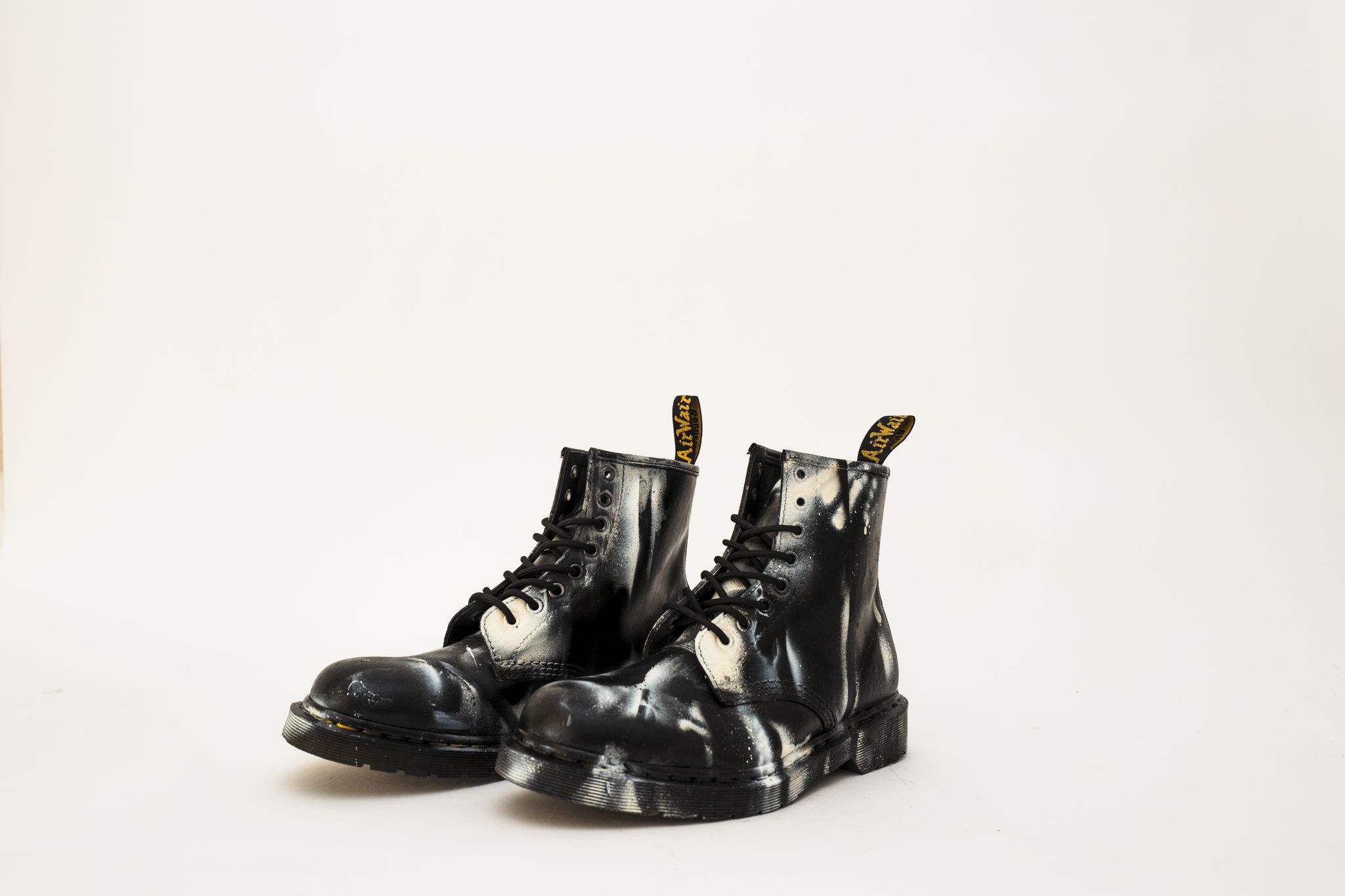
A pair of custom Dr Marten created for the film A Man Called Otto, starring Tom Hanks. Photo: Lovchld
A pair of custom Dr Marten created for the film A Man Called Otto, starring Tom Hanks. Photo: Lovchld
Turning her lockdown creations into her business, Lovchld, was a natural progression for Shaw – albeit an unplanned one. Her designs started largely on trainers such as Converse, before moving on to a variety of different shoe styles, from Gucci loafers to Doc Marten boots.
Due to the nature of her paint-splattered styles, each created by hand, no two pairs are the same. A client will come to Shaw with a pair of shoes they want customised and discuss a colour palette or pattern style they might like, but for the most part, they will trust Shaw to work on the design.
“I love the upcycling and recycling element, the idea of breathing new life into something,” she says. “When I paint, it’s very intrinsic. It’s all about layering and blending colours, and transmitting how I am feeling on to the shoe.
“I think it’s a fairly common theme you find with creators. When you’re just doing something that you do for yourself, for the love of it, that feels really authentic to you, that always connects with other people. Even when you’re not necessarily seeking that,” Shaw explains. “That’s when the most authenticity comes through and it connects with other people, I think.”
Once her friends and peers saw Shaw’s designs, that connection was instant. “I had friends around me who were like: ‘Hey, I really like your shoes. Can you do a pair for me?’ And then it just became its own thing,” she says.
“I had a friend who was in the film-making business and was like, ‘we need to put these in a movie’, and started encouraging me to put myself out there in different ways. It all just kind of started snowballing from there. I feel like it’s kind of crazy to be here right now because I didn’t expect for this to happen.”
Her friend’s advice to put herself out there into the film-making world paid off when one of her designs was featured in the Tom Hanks blockbuster A Man Called Otto, which was released in January.
Shaw was commissioned to paint on a pair of classic black leather 1460 Dr Martens for actor Mack Bayda’s character, Malcolm. Bayda loved the creation so much, he asked Shaw to create a custom pair of brogues for the film’s Los Angeles premiere. The result was a navy and green design, with splatters of white, black and yellow, which became the focal point of his look, paired with a classic black tailored suit.
“It was so exciting,” she says. “The combination of seeing the shoes in the film and then on the carpet. I just felt like it was becoming so much bigger than I had ever anticipated it to be and I felt like it was such a blessing.”

A pair of Nike Air Jordans customised with a Black Lives Matter design
A pair of Nike Air Jordans customised with a Black Lives Matter design
Given Shaw only started Lovchld in 2019, she still has plenty of plans for the brand, starting with switching from painting on other people’s shoes to designing her own styles. “I love customising and custom-painting shoes, but now I find myself wanting to expand and shift gears and look into actually making my own shoes,” she says.
“I get so much fulfilment and pleasure from creating in general, but just seeing my designs come to life through stories, through watching people wear my creations to these glamorous events, it’s really exciting.
“Life can be really tough and if there’s something that I want to give to people, it’s the message that it gets better, but also not only does it get better, I feel like life is like one of those things that you just have to keep living through to find a silver lining, you know?”
Essential technology
Viper Mini Signature Edition
Gaming specialist Razer has unveiled its lightest mouse yet, the Viper Mini Signature Edition. Featuring an ultra-durable magnesium-alloy exoskeleton, it weighs only 49 grams, and is the company’s most ambitious design and engineering project to date. The device is crafted using an injection moulding technique, with Razer’s signature futuristic-looking Viper Mini shape ensuring a comfortable grip. It offers Razer’s fastest wireless gaming technology, resulting in higher speeds and stable performance, and can be fully charged in less than 90 minutes.
Nowatch
Called the world’s first “awareable”, the screen-less Nowatch provides real-time feedback about movement, sleep and stress, but also recovery tools to restore balance and help users live more mindfully. It provides lifestyle metrics, while breaking the cycle of overstimulation, anxiety and stress, by liberating users from today’s always-on culture. The device has an interchangeable face made from ethically sourced gemstones. Its advanced health-tracking technology works quietly – measuring changes in sweat gland activity through skin conductance; and monitoring stress levels, cognitive performance and mood. Data is stored on a companion app, but instead of serving up a constant jumble of information, it delivers gentle vibrations throughout the day that are designed to help the user become aware of their stressors.
Sennheiser HD 660S2 headphones
Sennheiser’s new HD 660S2 headphones expand on the capabilities of the brand’s 600-series family, offering precision, power and new sensitivity across all frequencies, particularly at the lower end of the spectrum. With this latest launch, the brand is promising audiophiles improved transducer airflow, a refined voice coil, deeper, clearer bass and greater intensity from enhanced sub-bass tuning. Meanwhile, plush earpads and cushy headband padding place the revised 300-ohm transducers at the optimal distance from the ear.
Leitz Phone 2
Camera brand Leica has brought its photographic expertise to the smartphone sphere for the second time with the Leitz Phone 2. Created for photo enthusiasts, the aluminium Android phone features a 2.5-centimetre image sensor with a 47.2 megapixel resolution, a focal length of 19 millimetres and a 6x digital zoom. The name pays tribute to the company’s founder, Ernst Leitz, and his son Ernst Leitz II, who revolutionised the world of photography in 1924 by introducing the first 35mm camera.
eKinekt BD 3 bike
Acer’s eKinekt BD 3 bike desk combines a desk with a stationary bike – allowing users to exercise as they work and generate kinetic energy from their pedalling to charge their devices. Users can seamlessly adjust the bike resistance, seat and desk height to provide added flexibility and comfort when working or training. The device is equipped with two USB Type-A ports and one USB Type-C port, a bag hook and a beverage holder.

Viper Mini Signature Edition, $279.99, www.razer.com
Viper Mini Signature Edition, $279.99, www.razer.com
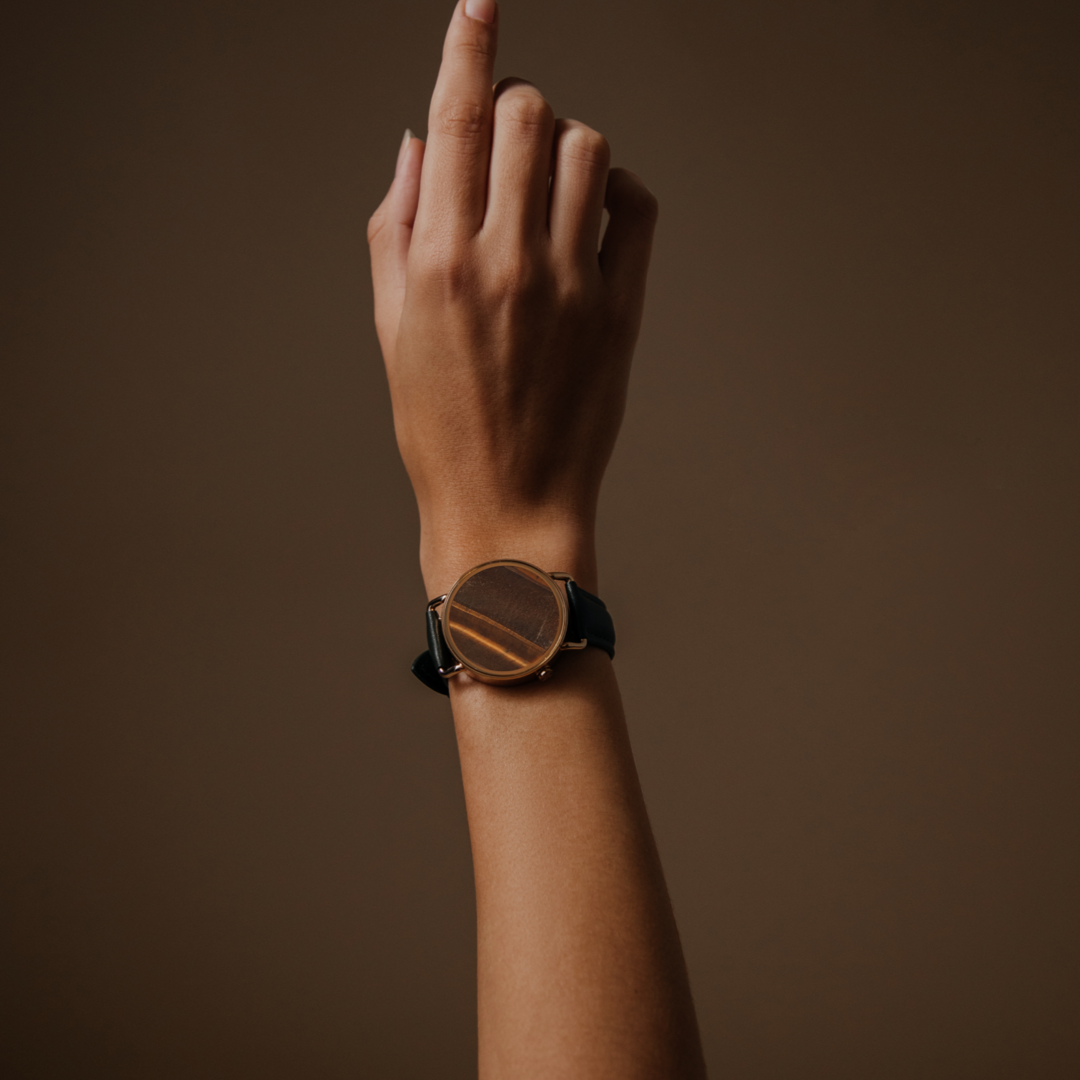
Nowatch, $499, www.nowatch.com
Nowatch, $499, www.nowatch.com

Sennheiser HD 660S2 headphones, $640, www.sennheiser-hearing.com
Sennheiser HD 660S2 headphones, $640, www.sennheiser-hearing.com
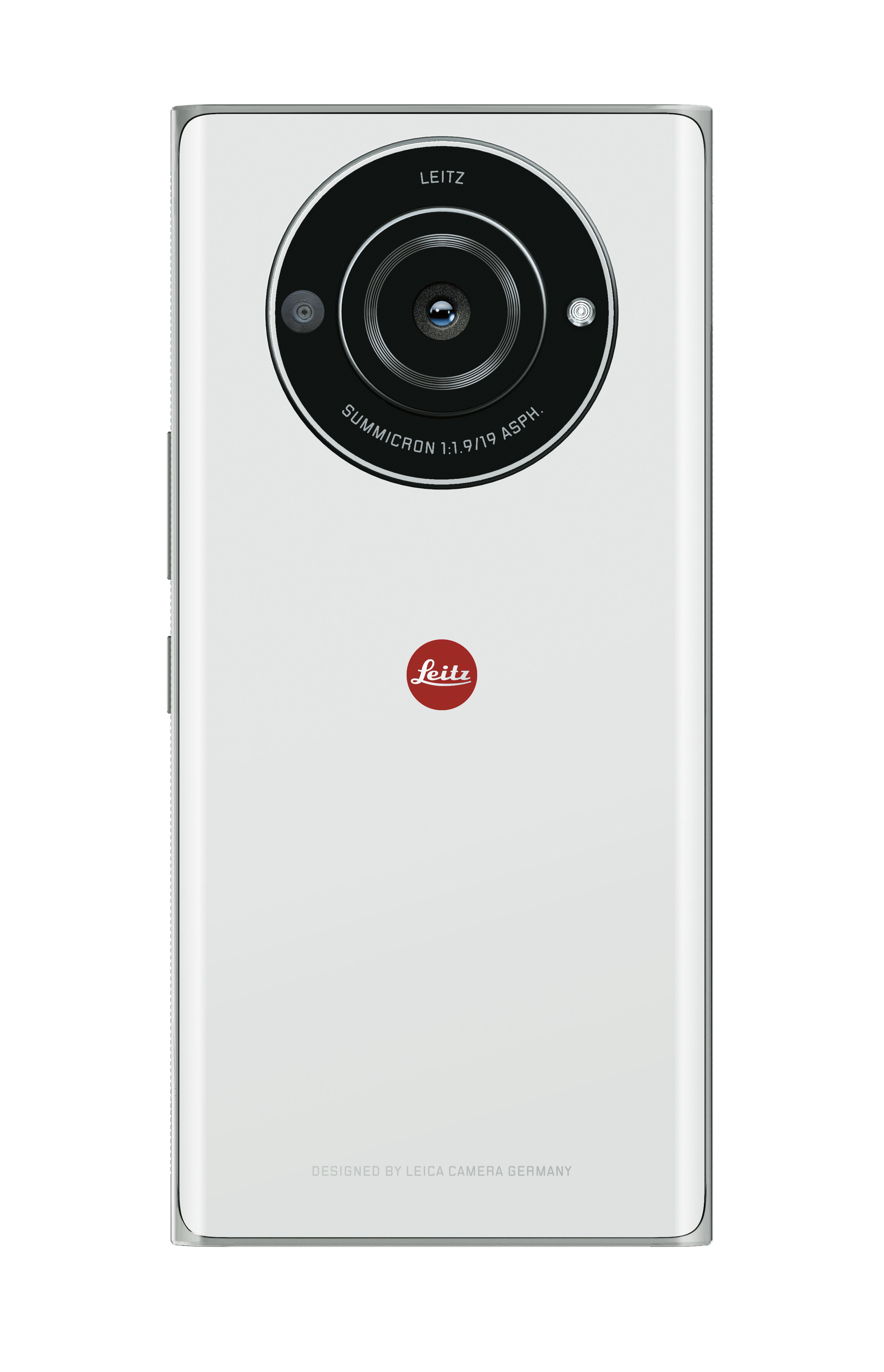
Leitz Phone 2, $1,530, www.leica-camera.com
Leitz Phone 2, $1,530, www.leica-camera.com

eKinekt BD 3 bike, available in the Middle East from June, $1,067
eKinekt BD 3 bike, available in the Middle East from June, $1,067

Photo: Heritage Auctions
Photo: Heritage Auctions
$106,250...
... was the price paid at auction for this typewriter owned by American author Mark Twain – even if he did describe the machines as ‘devilish’
American author Samuel Clemens, better known as Mark Twain, had a love-hate relationship with the typewriter. Best known for his stories about Tom Sawyer and Huckleberry Finn, Twain was an early adopter of the newfangled machines, but described them as “full of caprices, full of defects — devilish ones”. In his autobiography, he even went as far as to accuse them of “degrading his character”.
He acquired his first typewriter for $250 in 1874, but his subsequent disdain was chronicled in 1875, in a letter to E Remington and Sons, the company responsible for manufacturing the world’s first typewriter. In his missive, Twain refused to lend his name to a testimonial, writing: “Please do not use my name in any way. Please do not even divulge the fact that I own a machine. I have entirely stopped using the typewriter, for the reason that I never could write a letter with it to anybody without receiving a request by return mail that I would not only describe the machine, but state what progress I had made in the use of it, etc, etc. I don’t like to write letters, and so I don’t want people to know I own this curiosity-breeding little joker.”
Nonetheless, he continued to use the little jokers. “Mark Twain’s dislike for typewriters is well-documented, but he was one of the first authors to own one and eventually warmed up to them,” says Sandra Palomino, director of historical manuscripts at Heritage Auctions. “In 1883, he became one of the first authors to type a manuscript when he delivered a typed copy of Life on the Mississippi to his publisher.”
Last month, Heritage Auctions was responsible
for bringing one of the last typewriters Twain owned to auction. One of the most remarkable relics of 20th century American literary history, Twain’s Williams No 6 “grasshopper” typewriter fetched $106,250 in the Historical Manuscripts Signature Auction on February 22.
Twain owned the machine from 1908 until his death in 1910. Twain’s daughter, Clara, gave the typewriter to Harry B Iles, the superintendent and groundskeeper at Stormfield, the writer’s beloved mansion in Redding, Connecticut. It remained in the Iles family until it was sold in 1982, and then again in 1990 to the current consignor, a close friend of Iles’s son, Harry.
Provenance documentation accompanying the item included the 1982 purchase receipt signed by Harold Page, Harry B Iles’ great-grandson, and a signed and notarised statement of provenance from the current consignor, which details the 1990 purchase, as well as their decades-long relationship with the Iles family.
